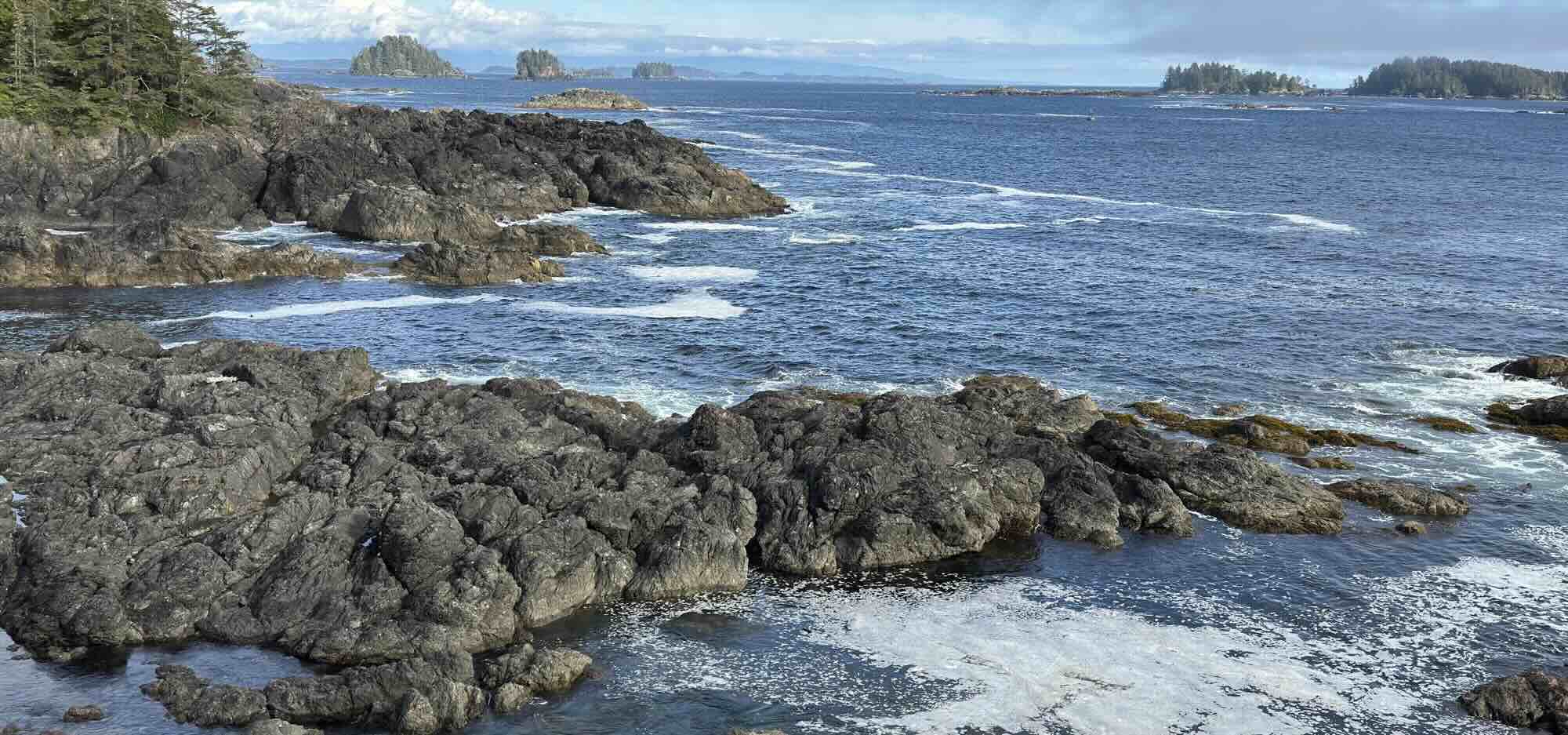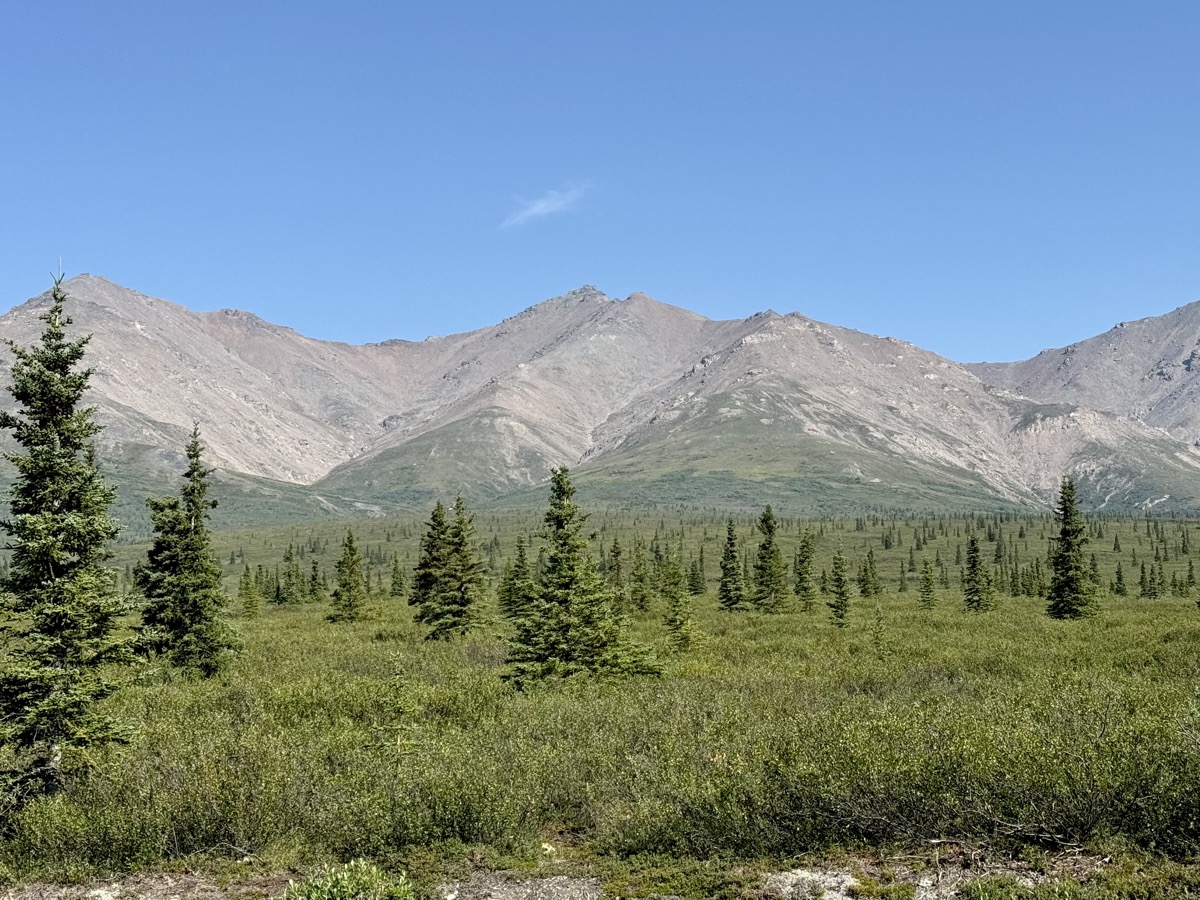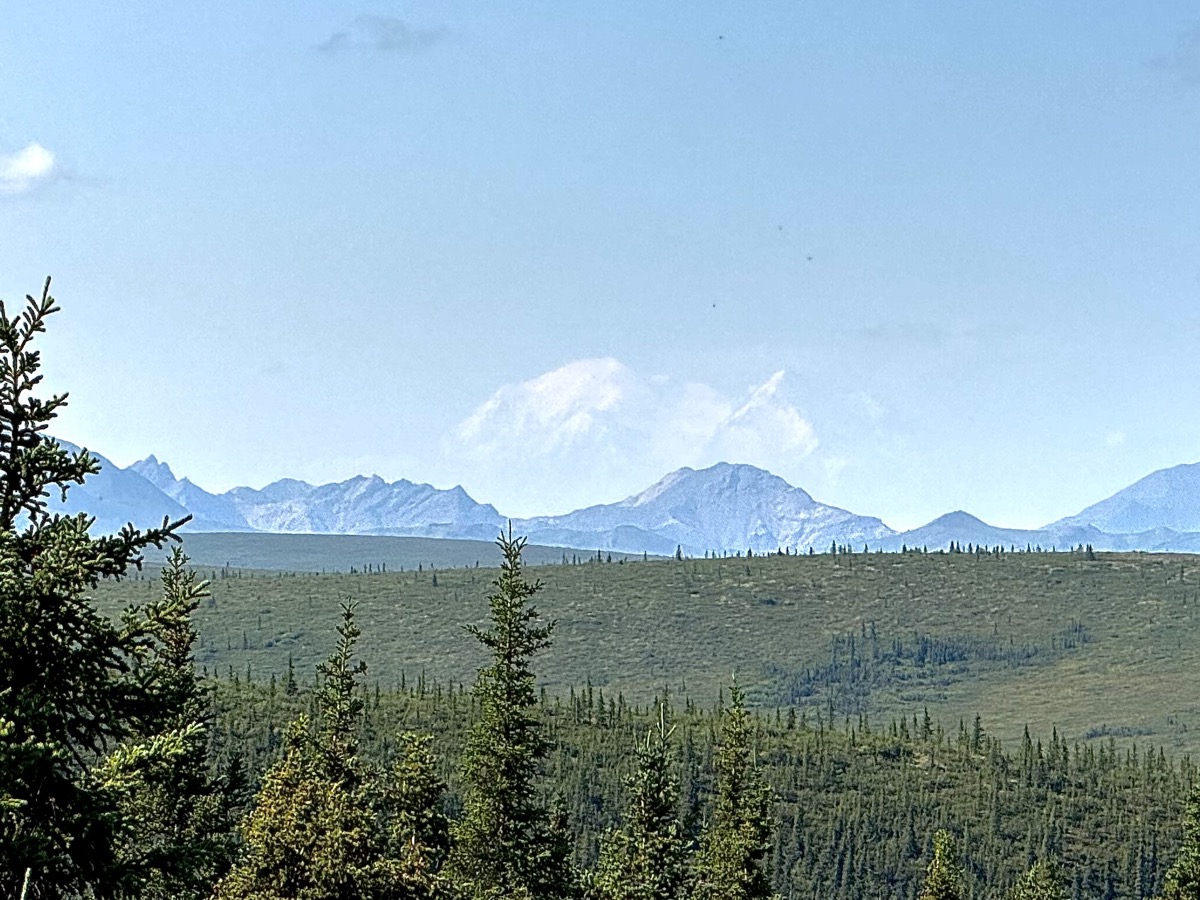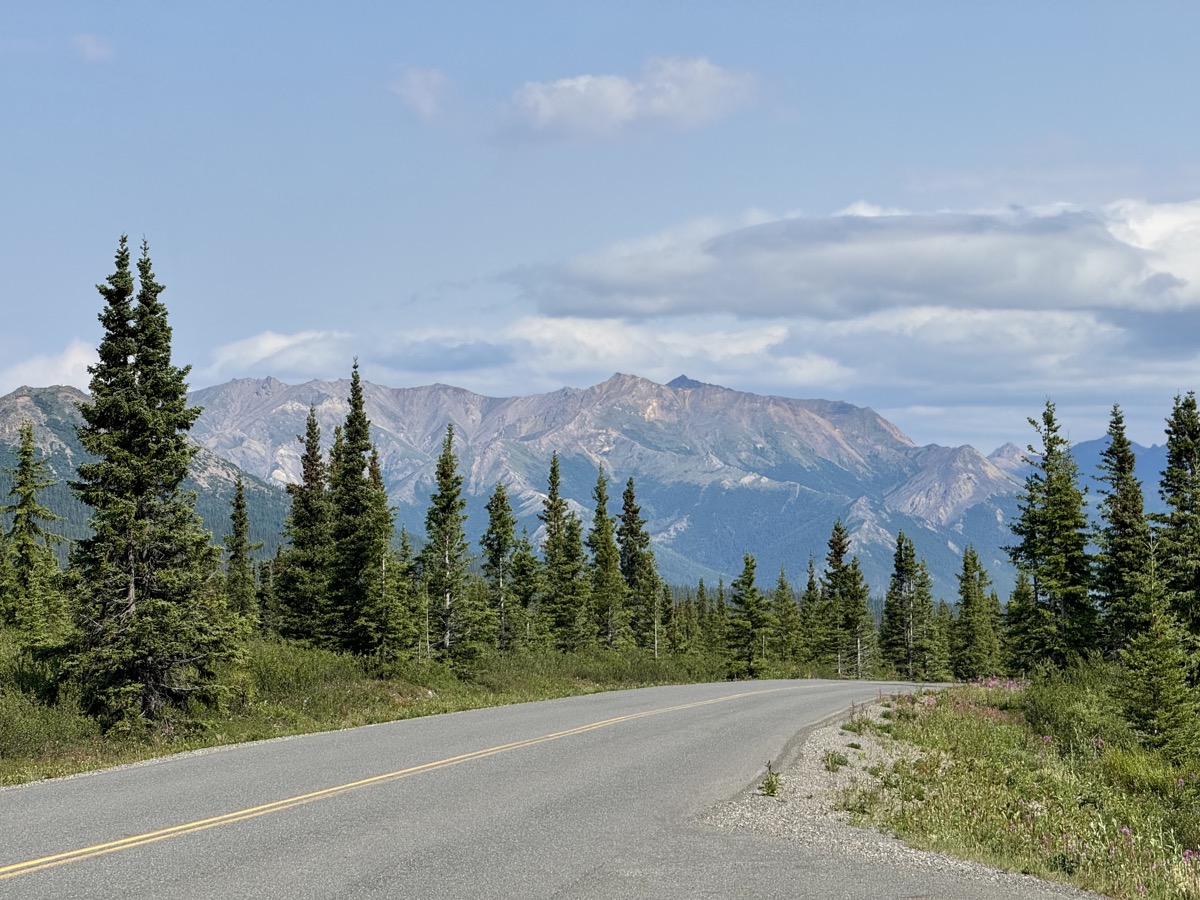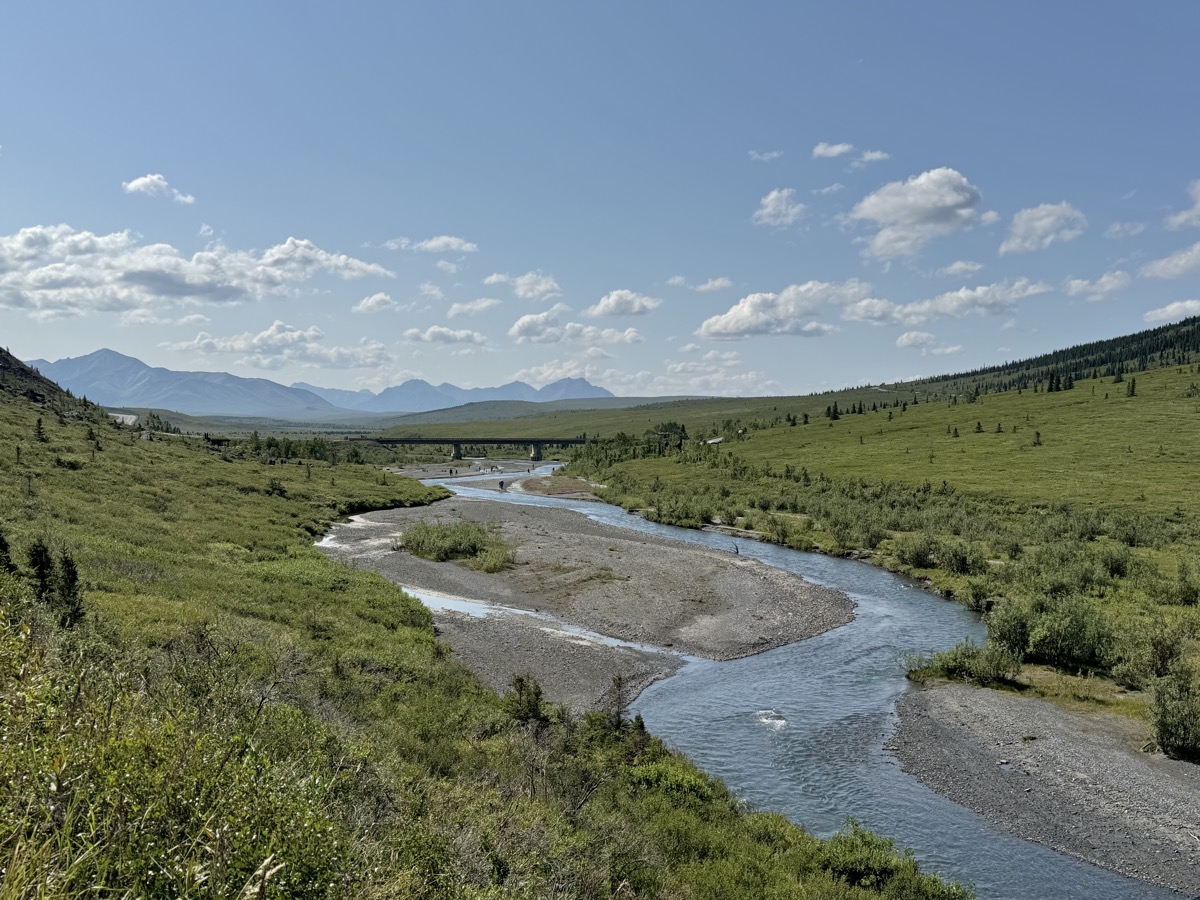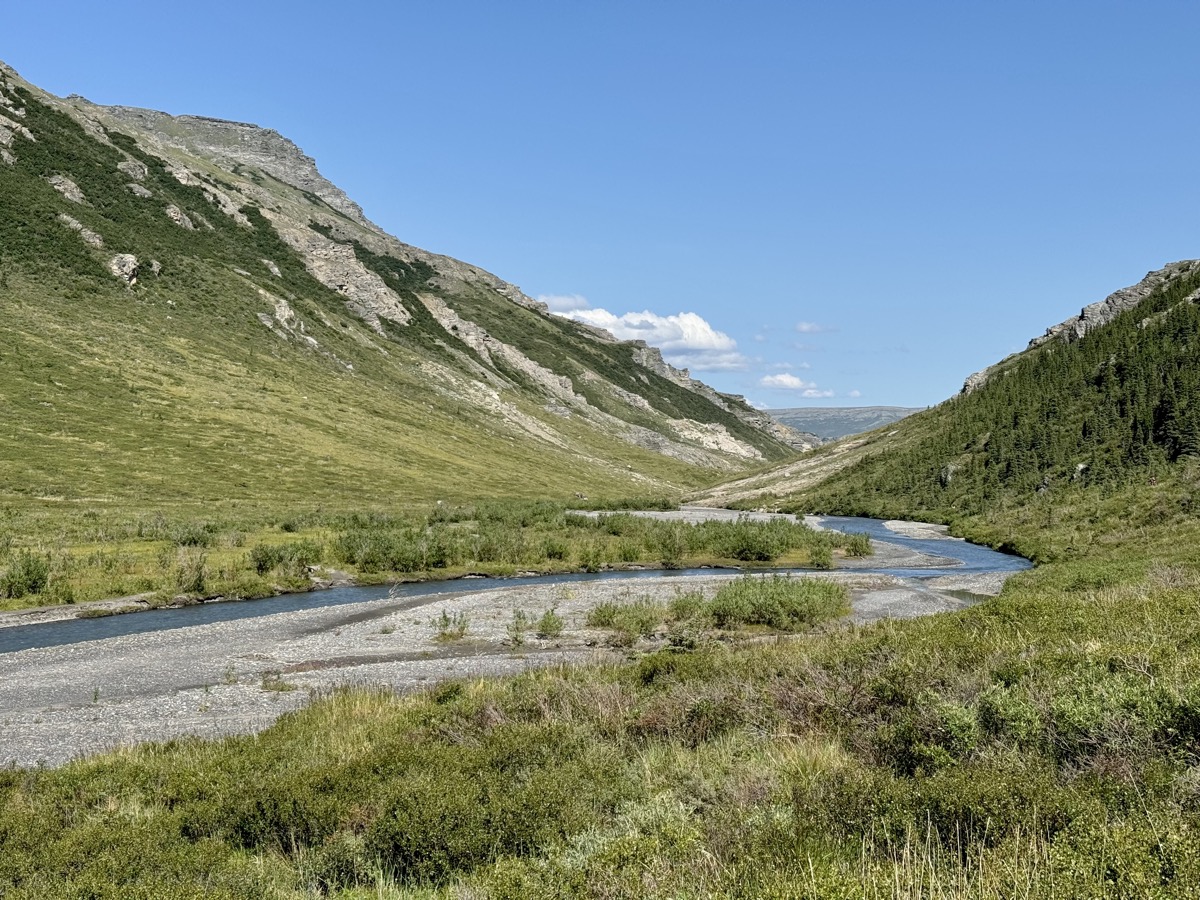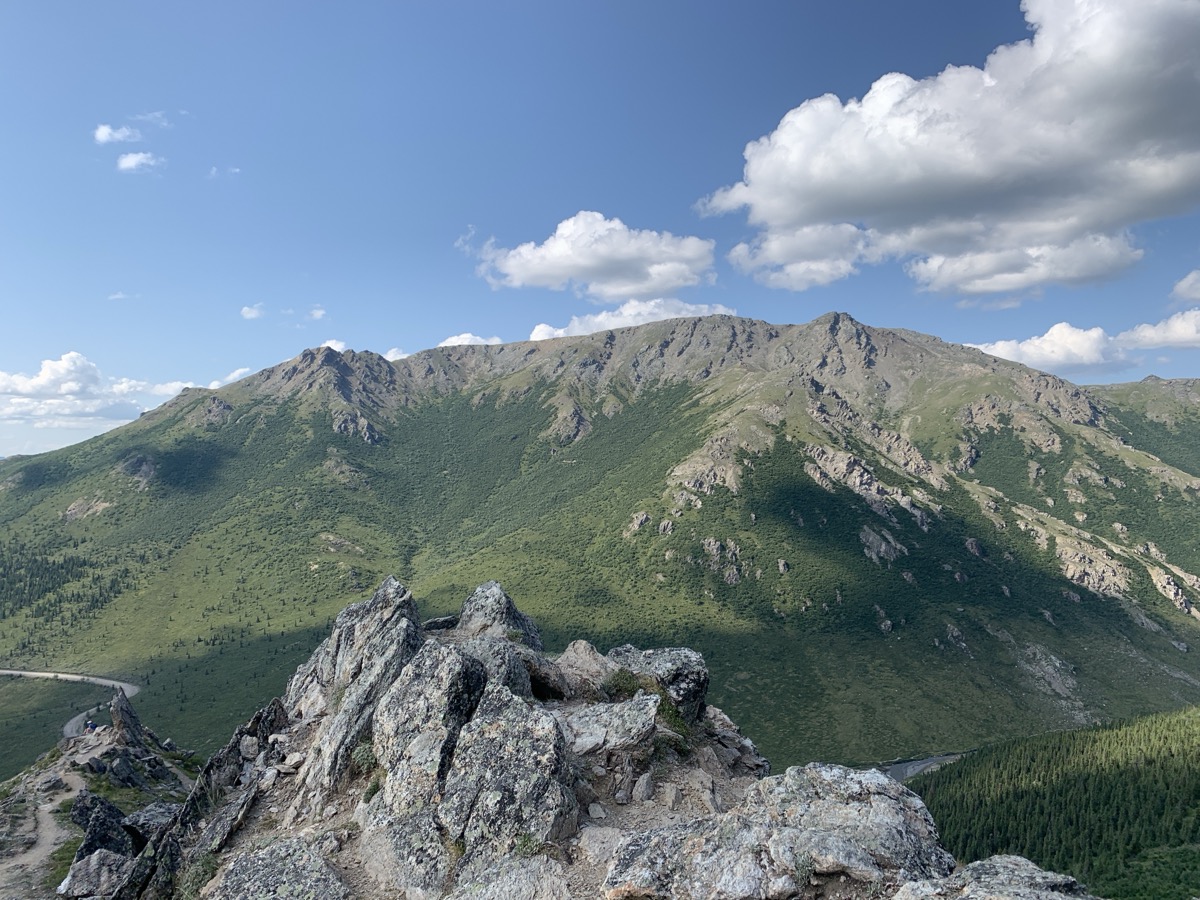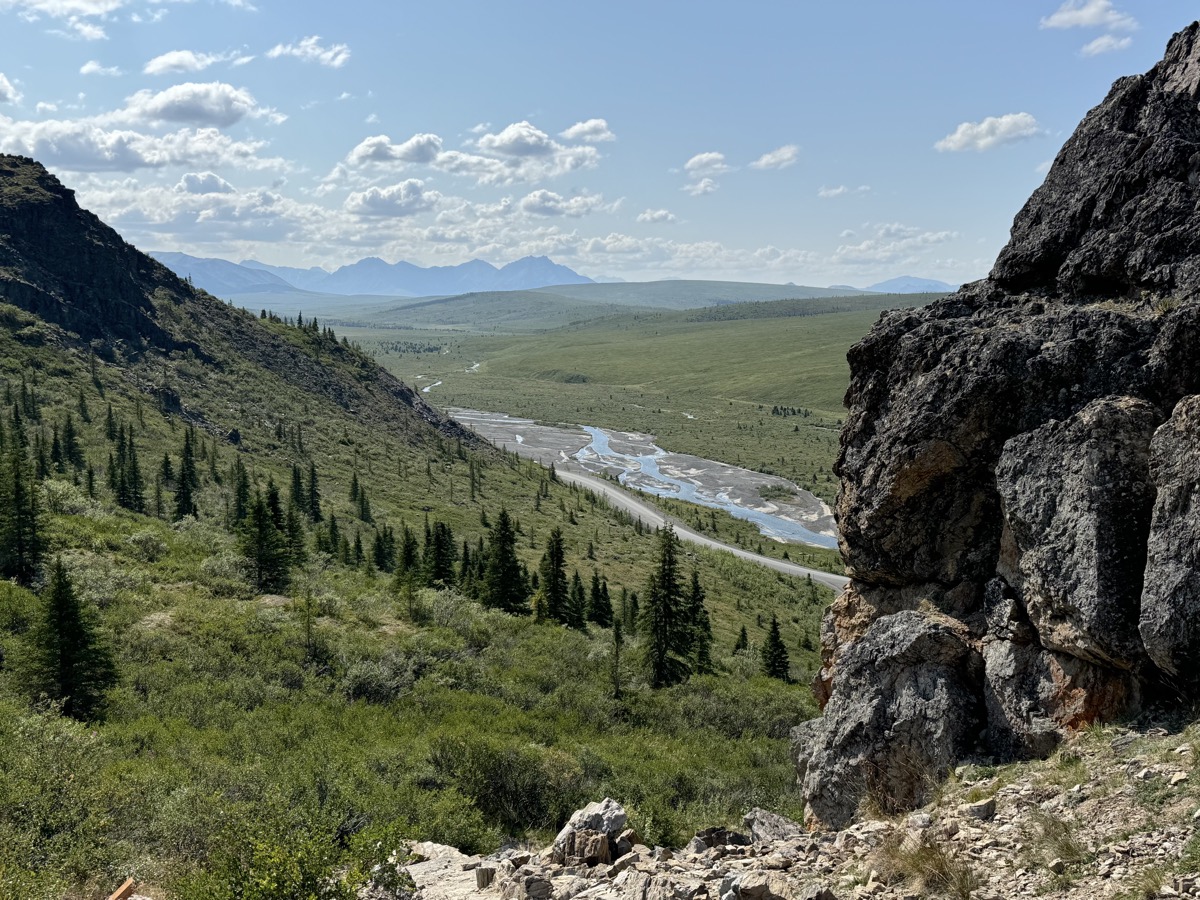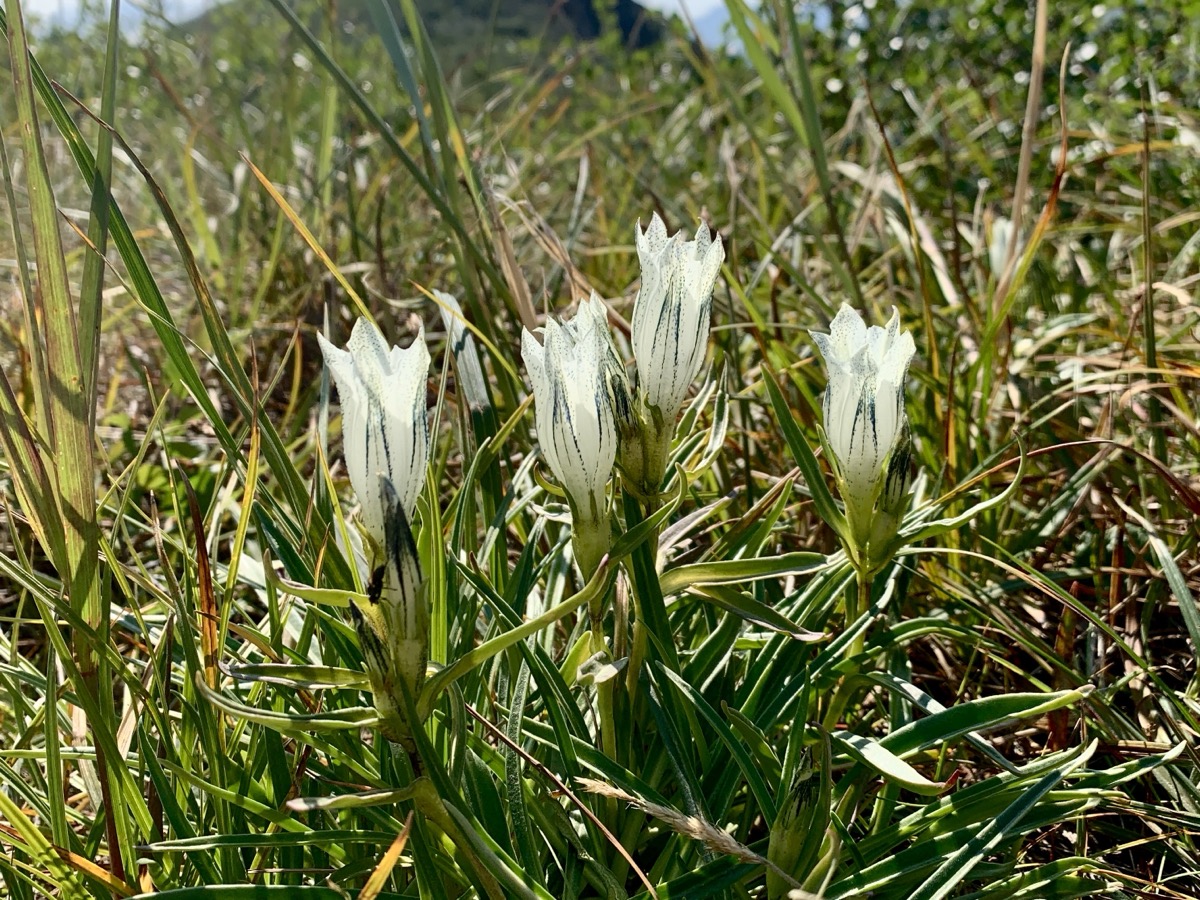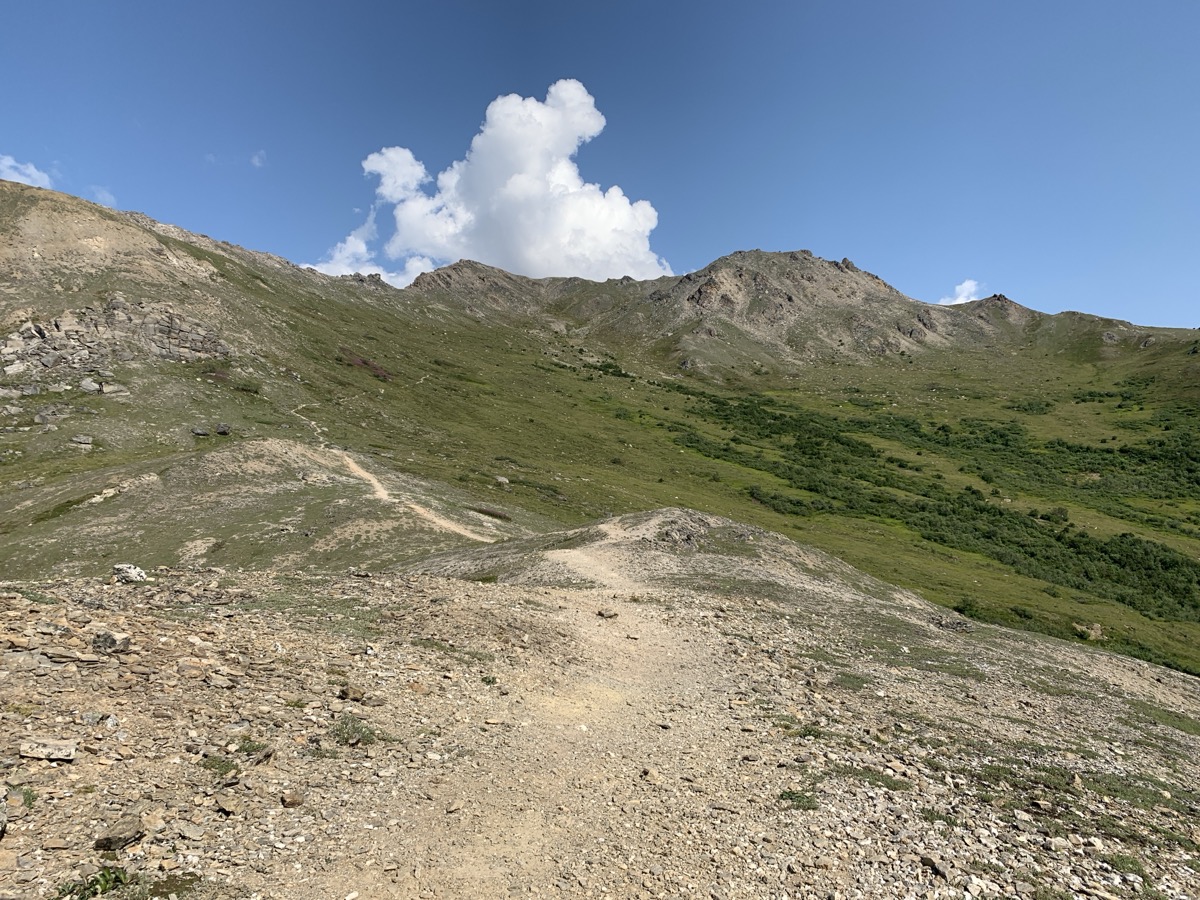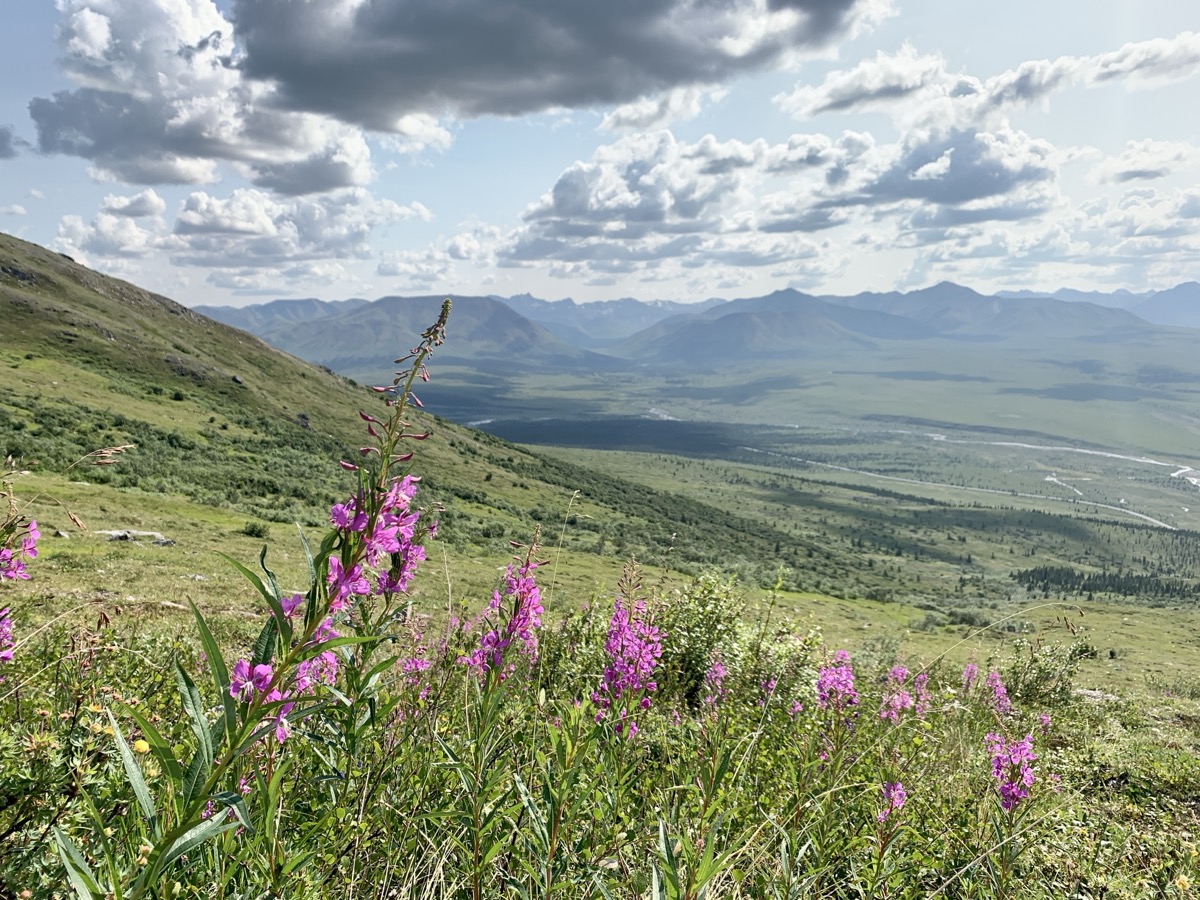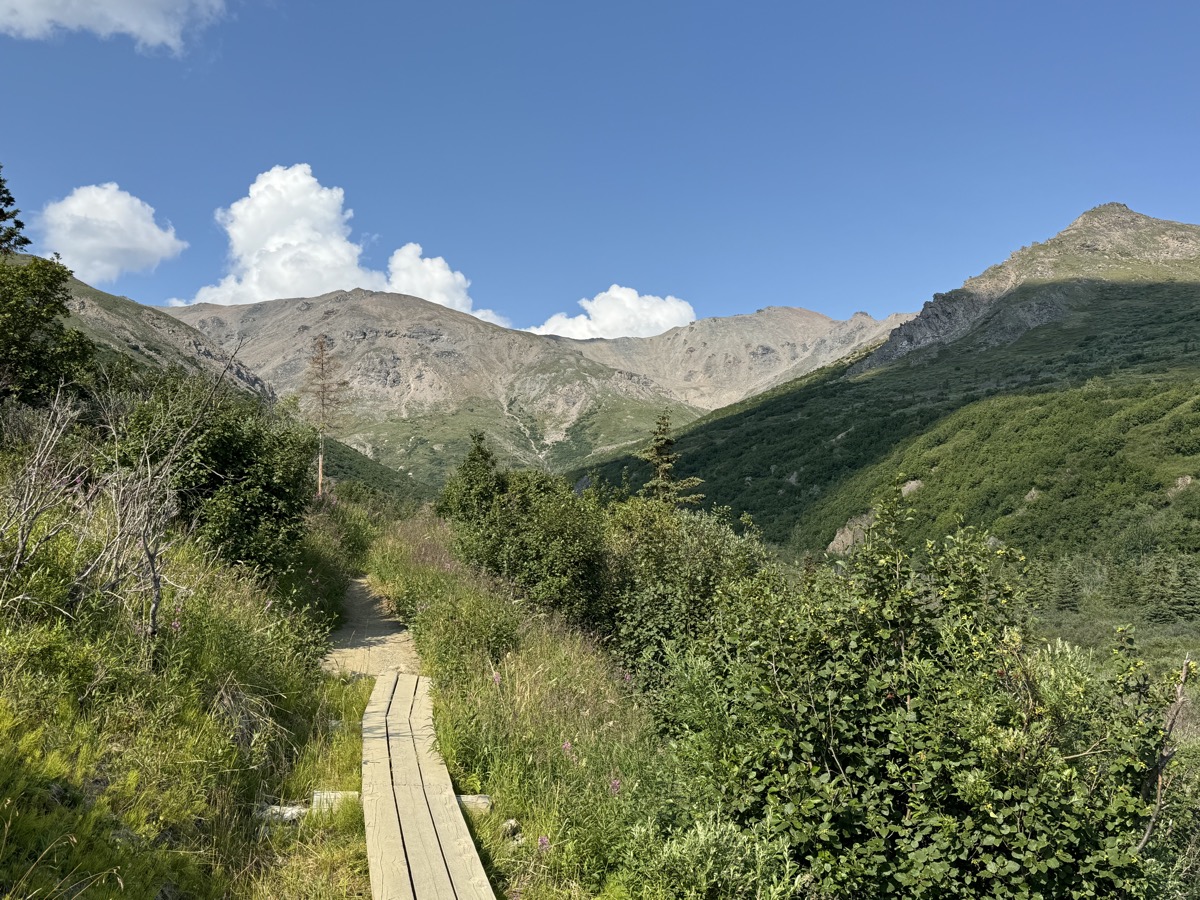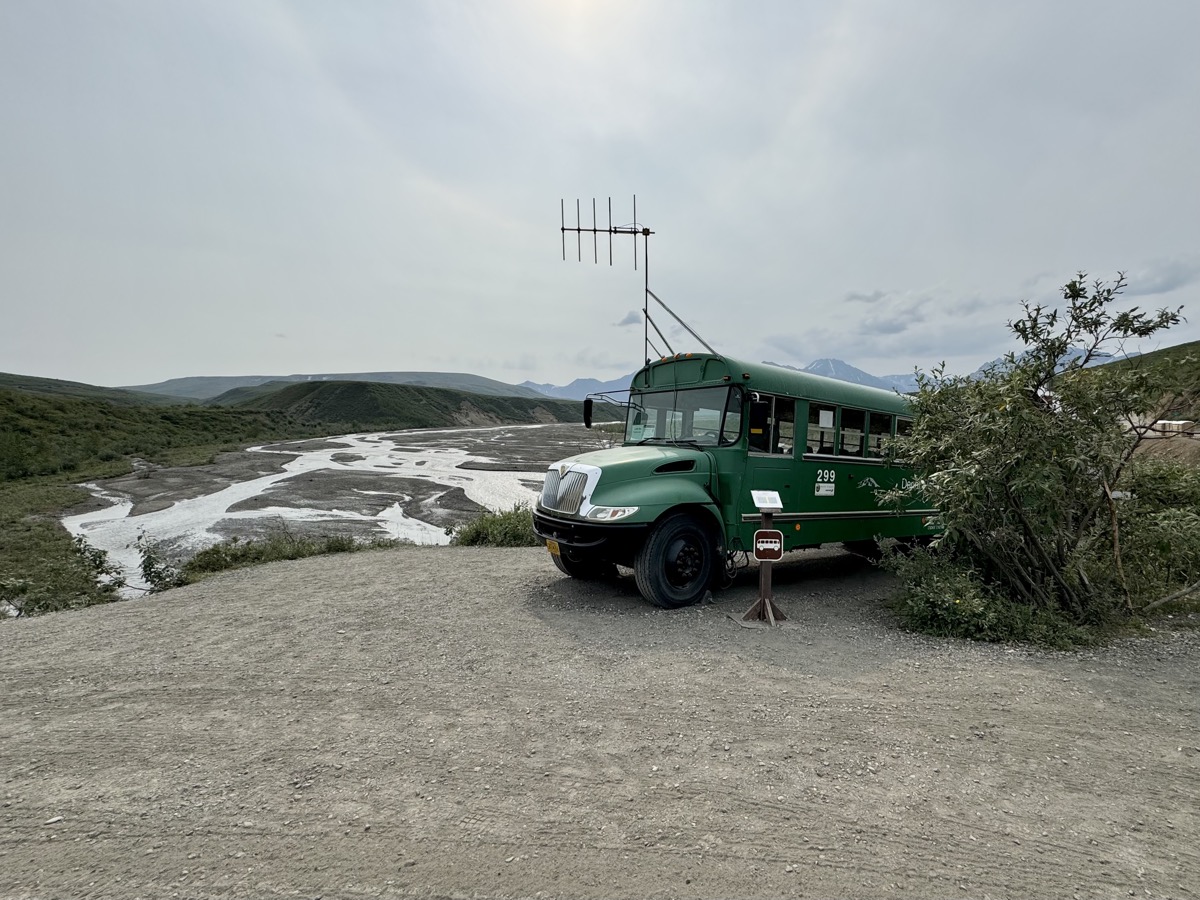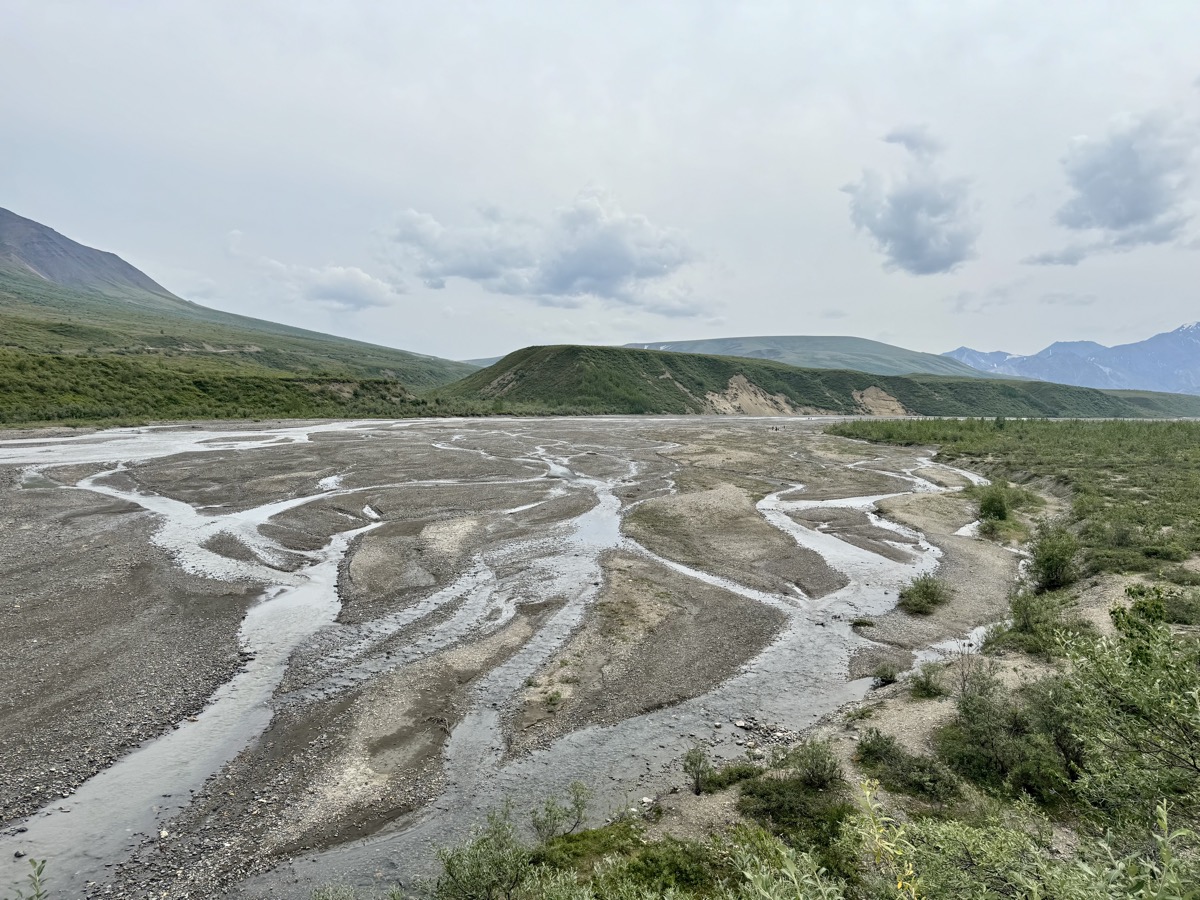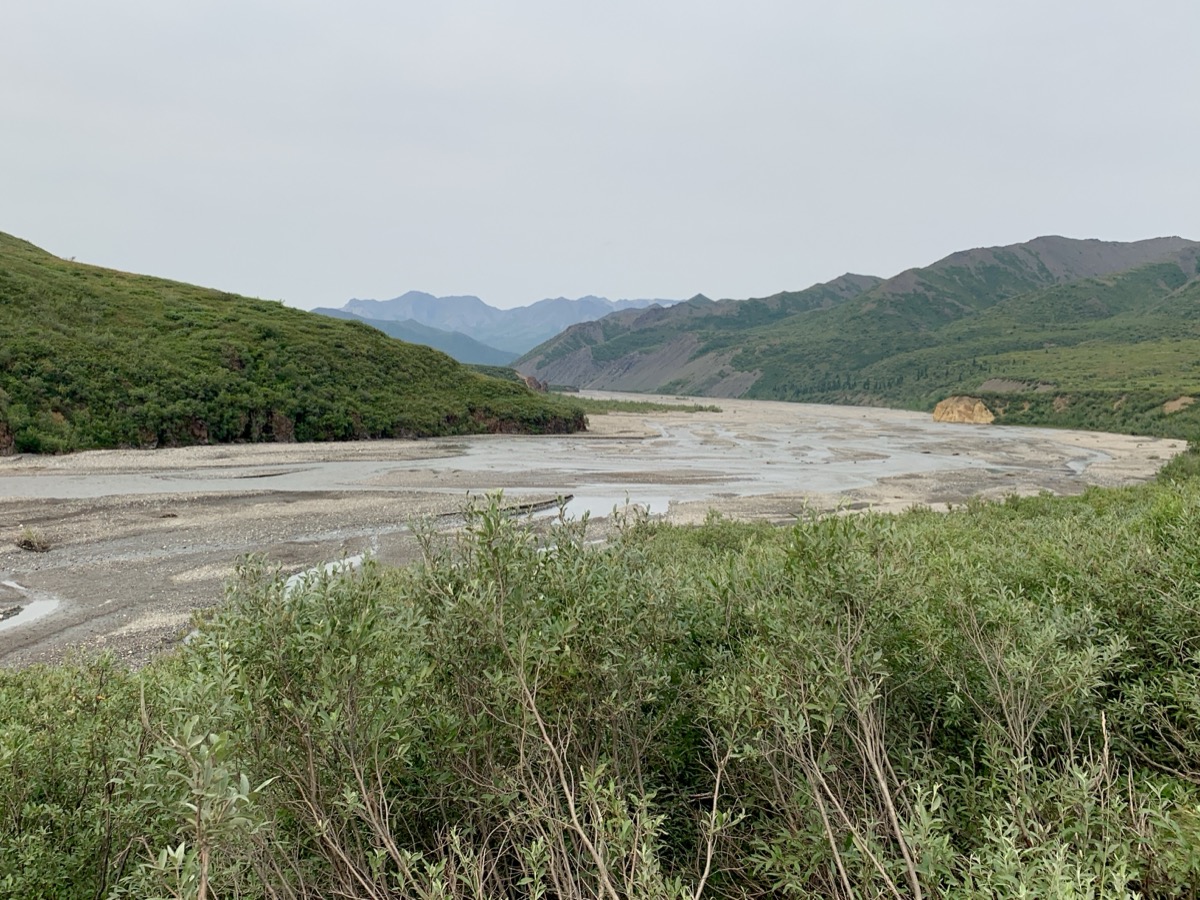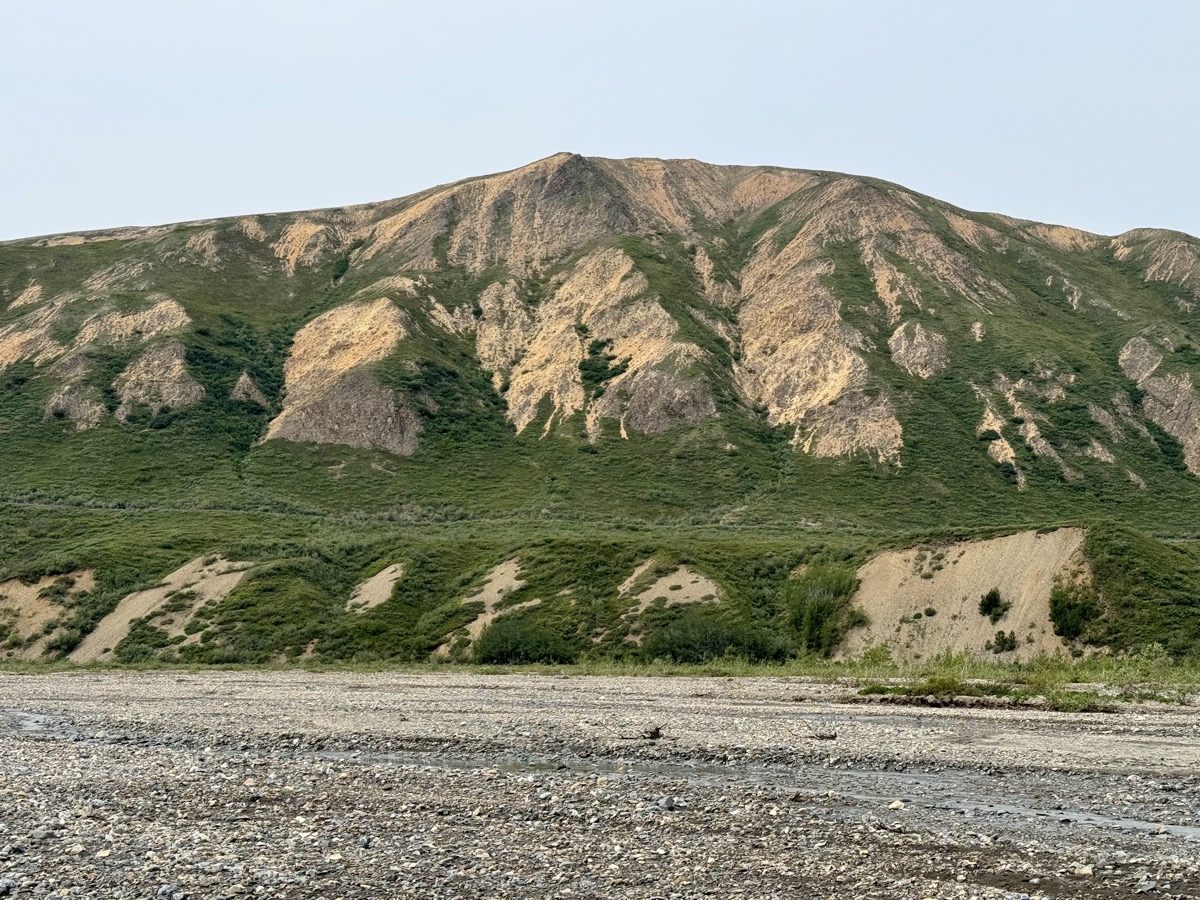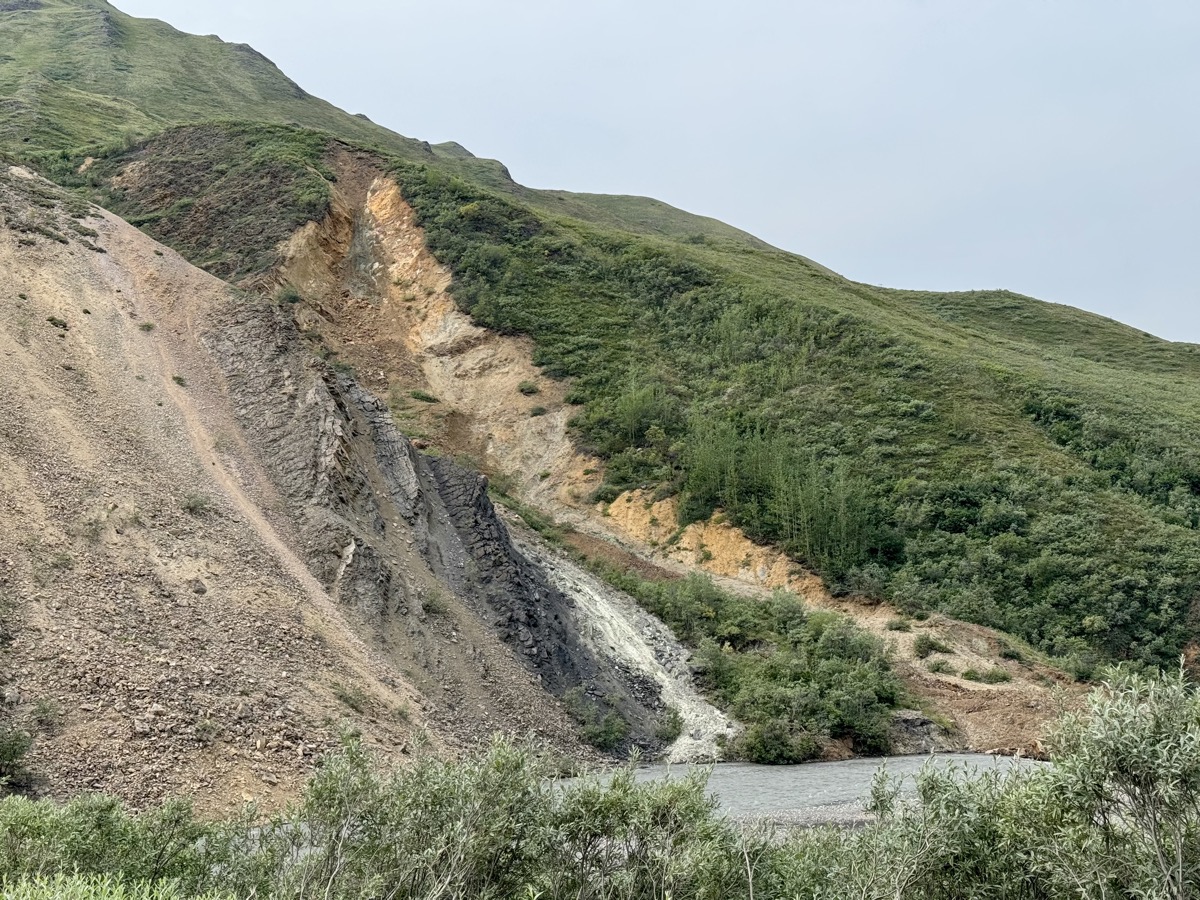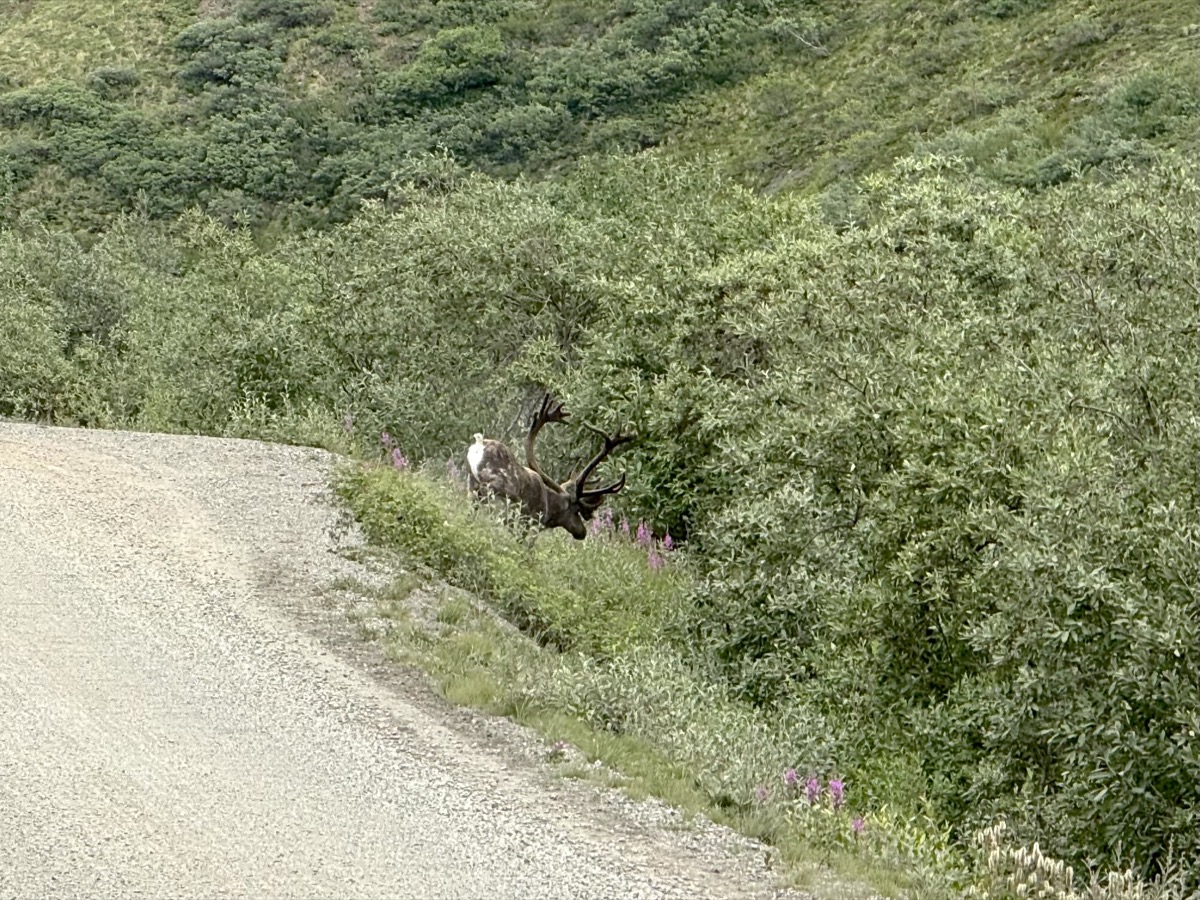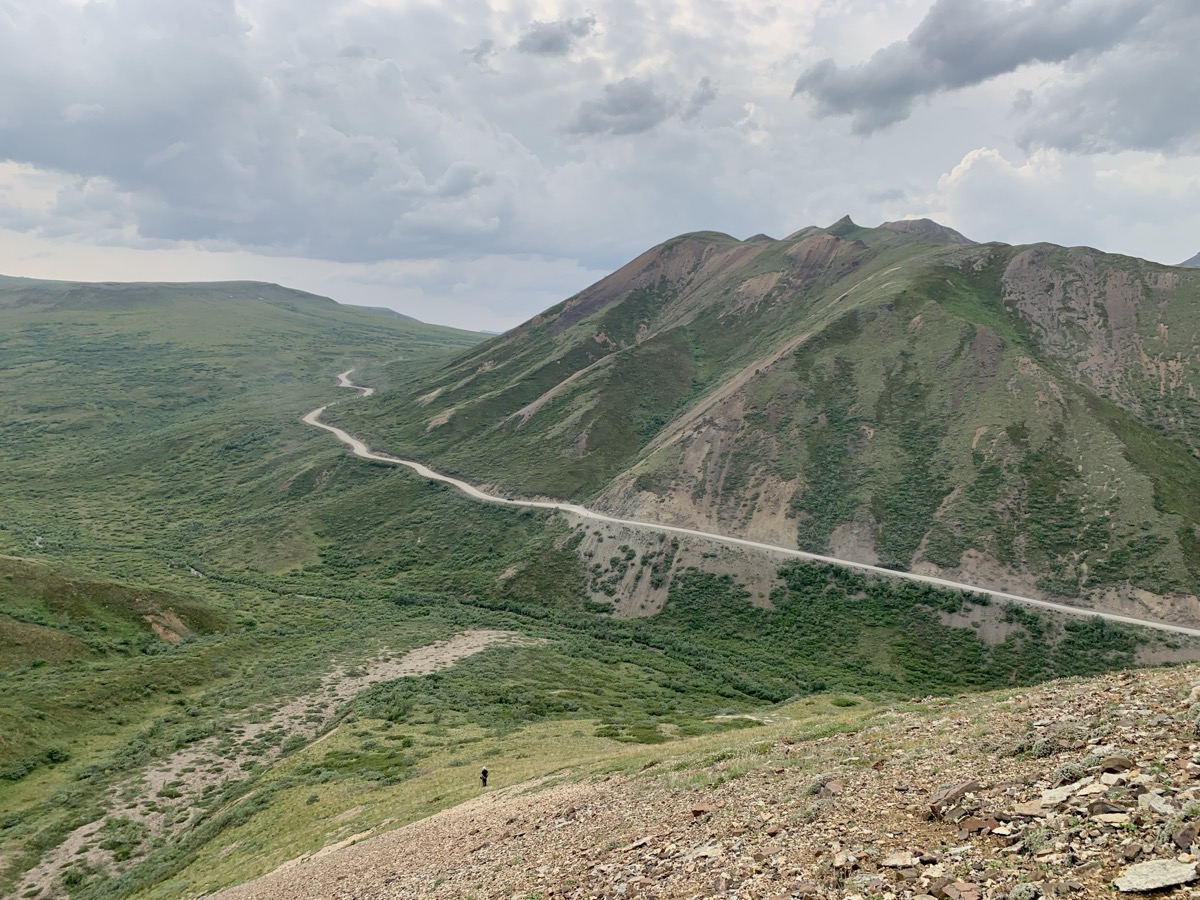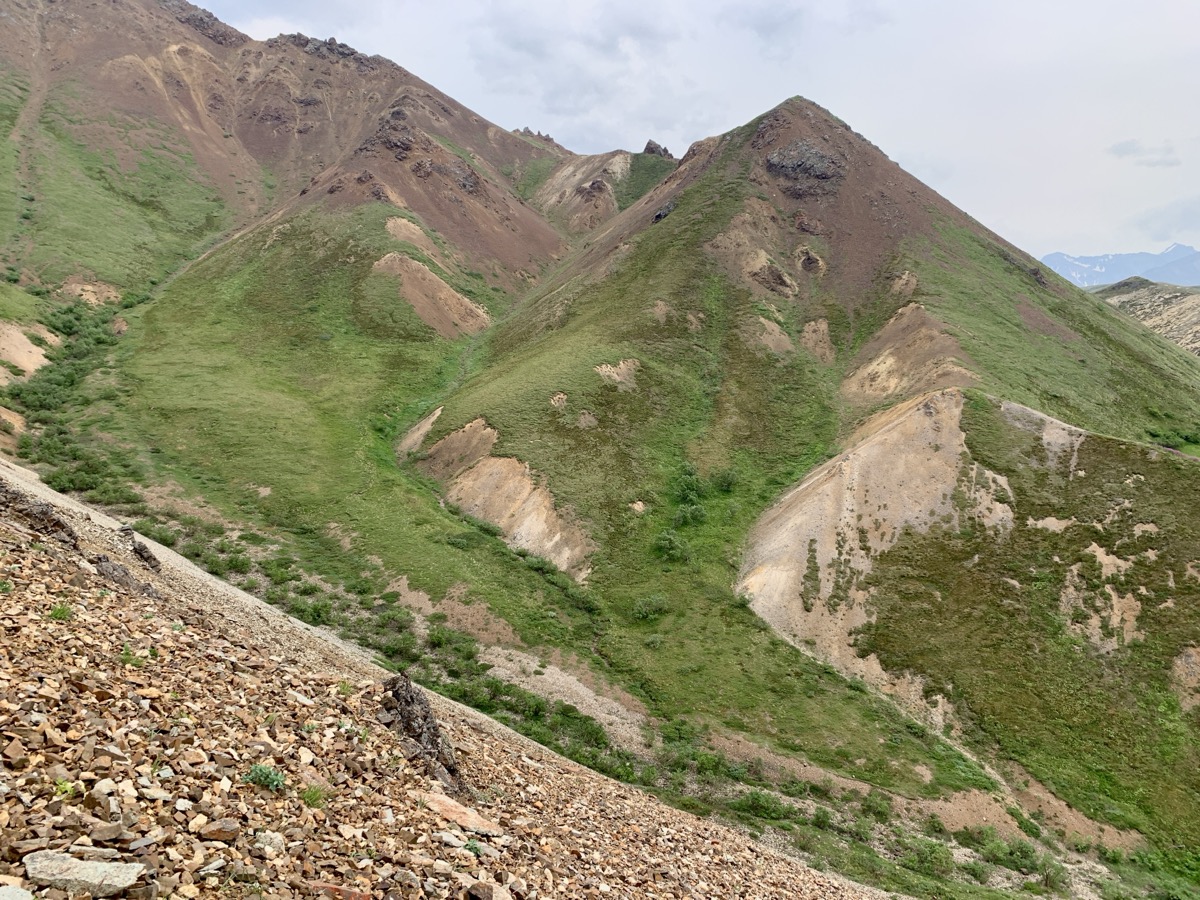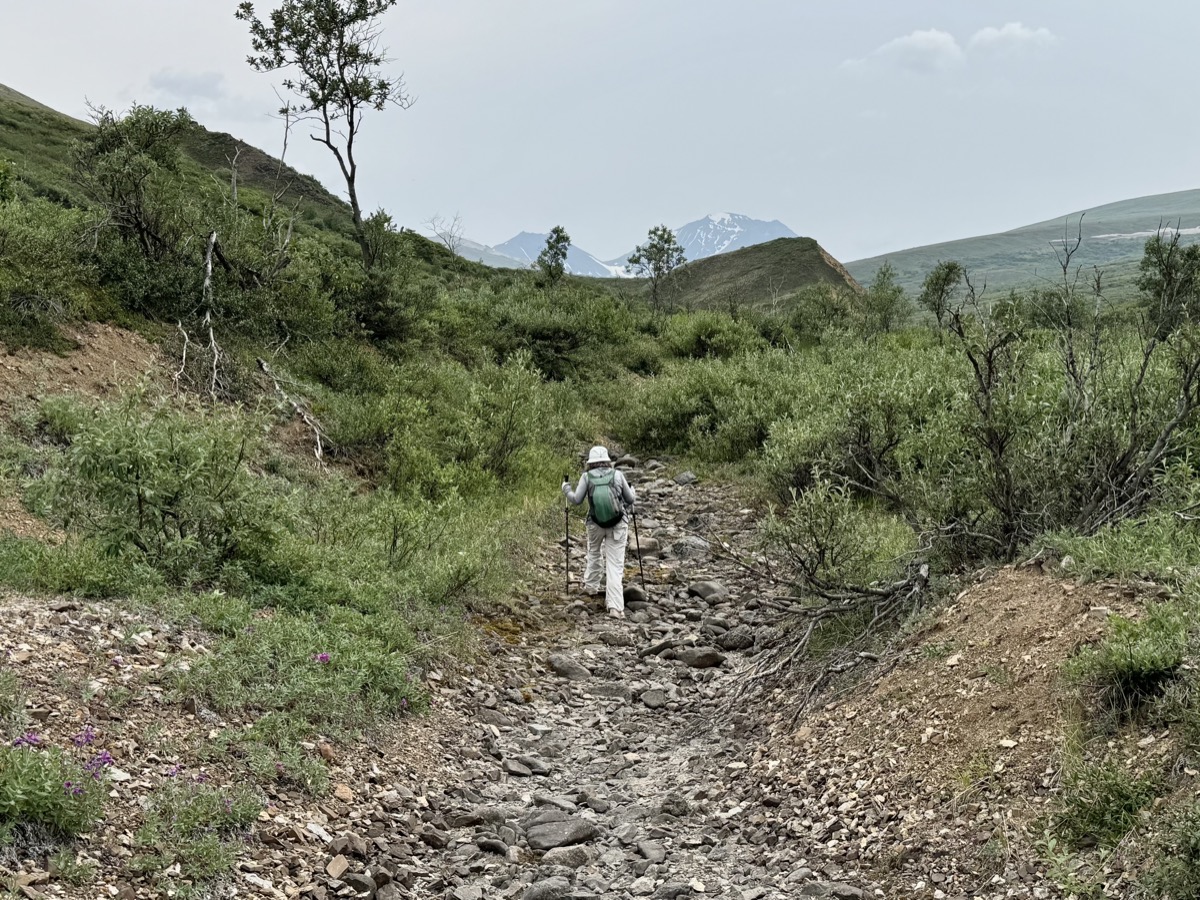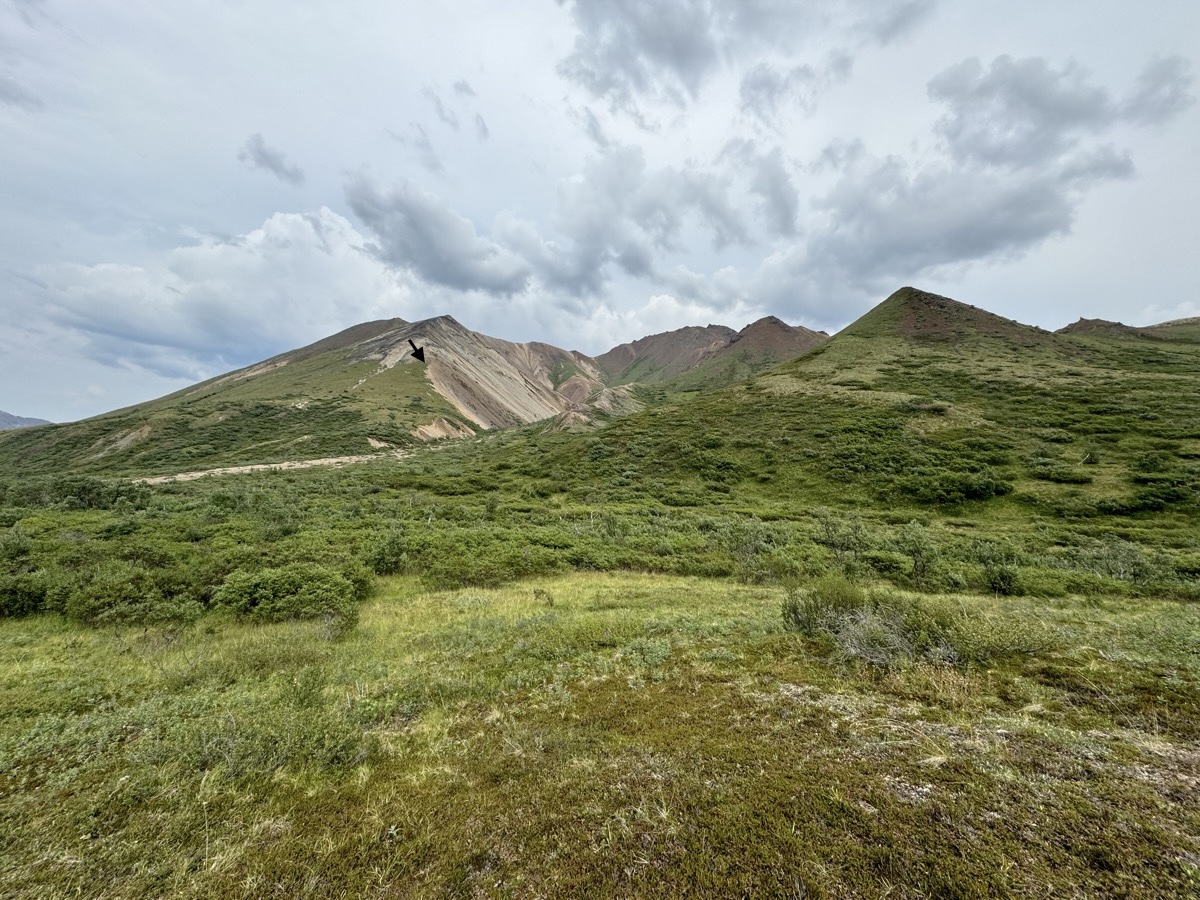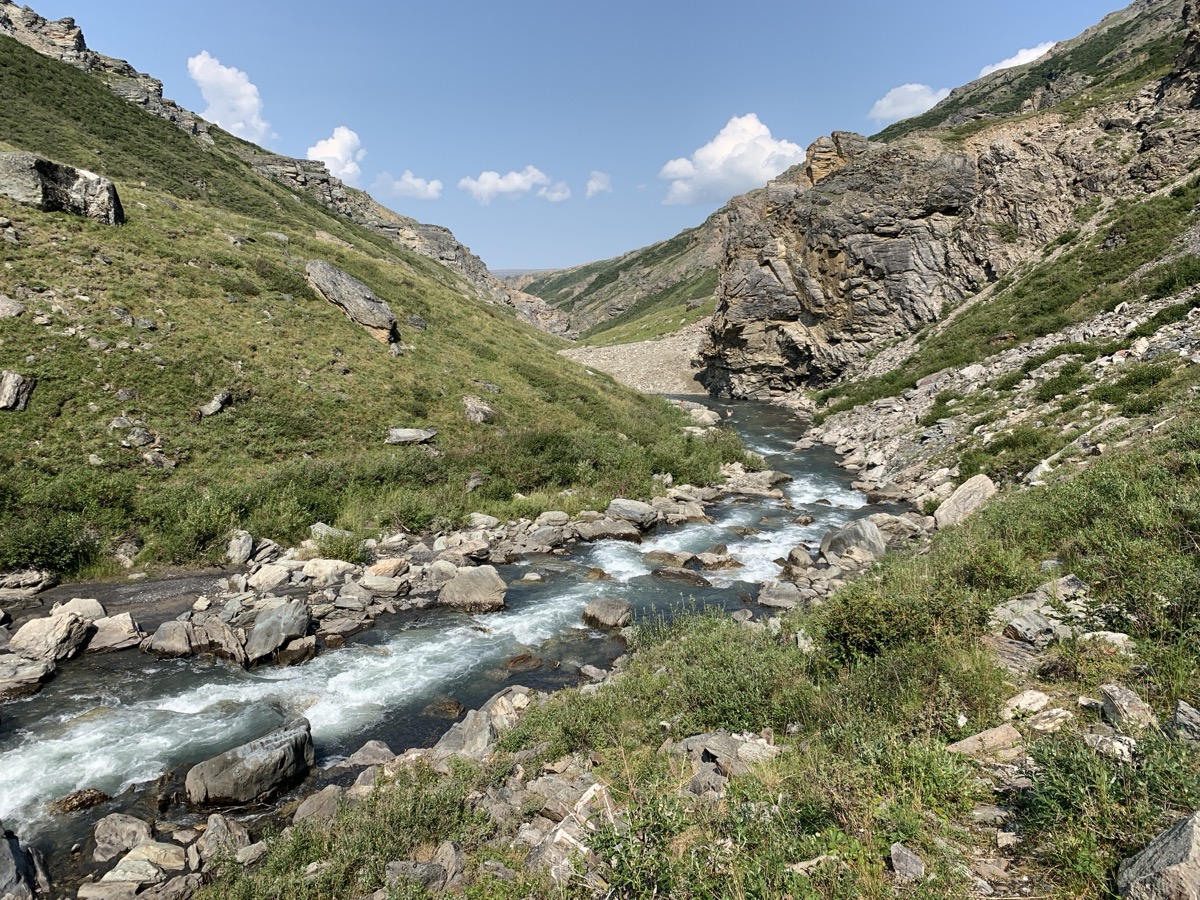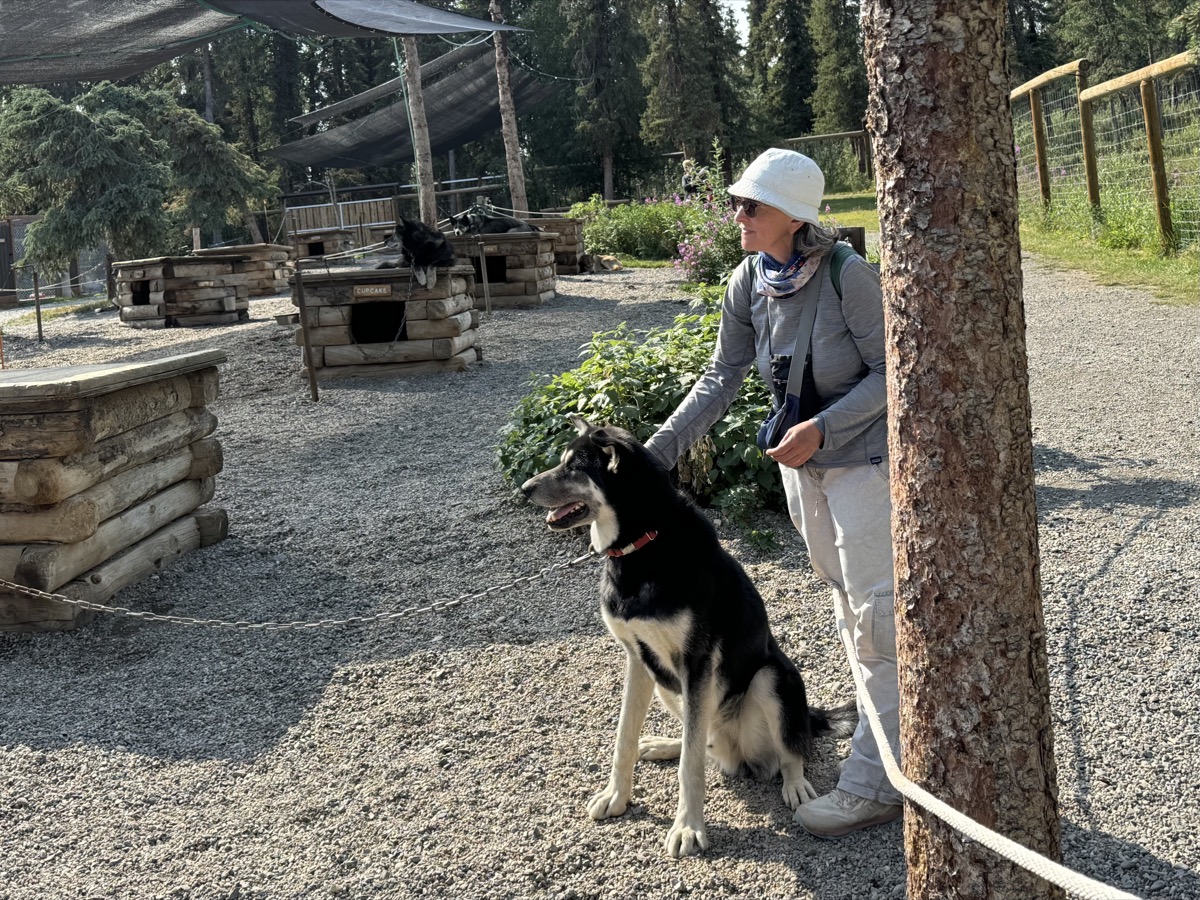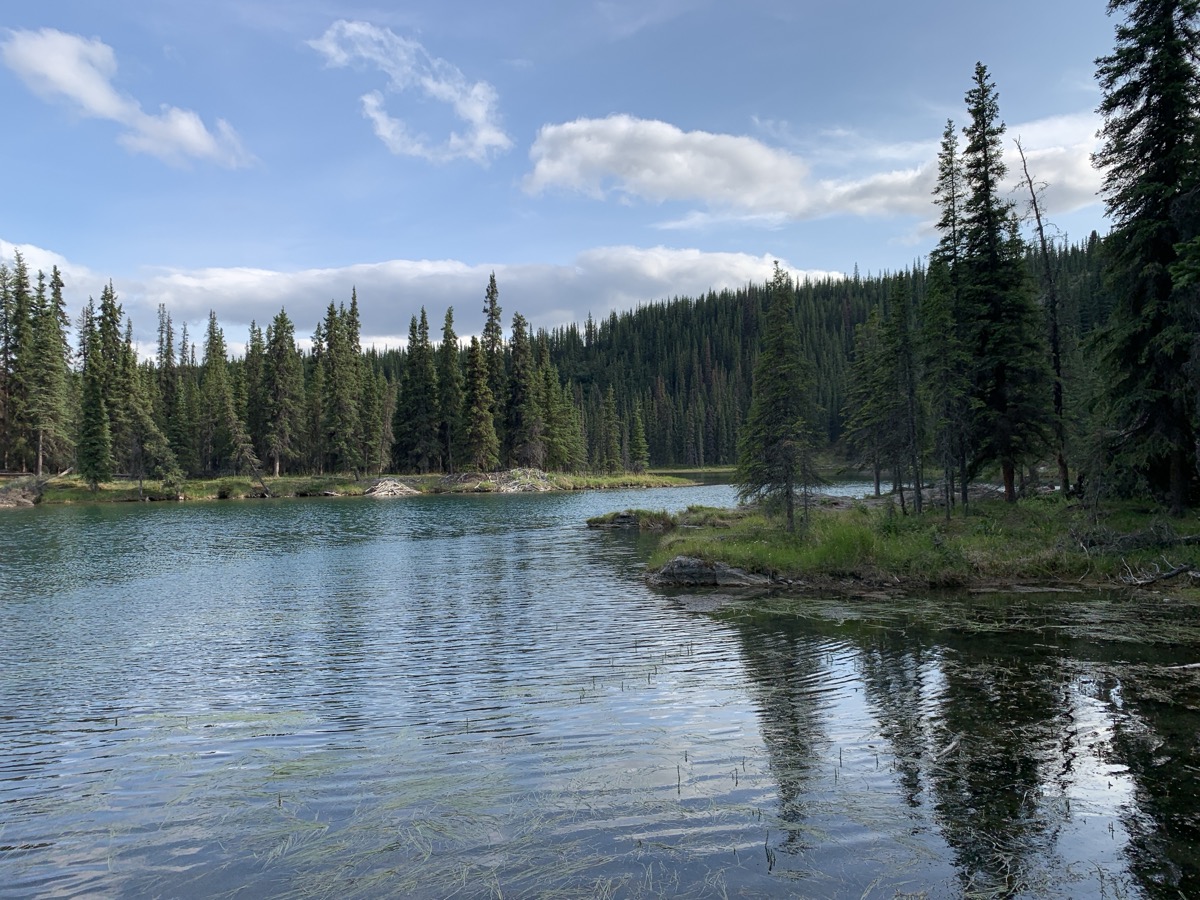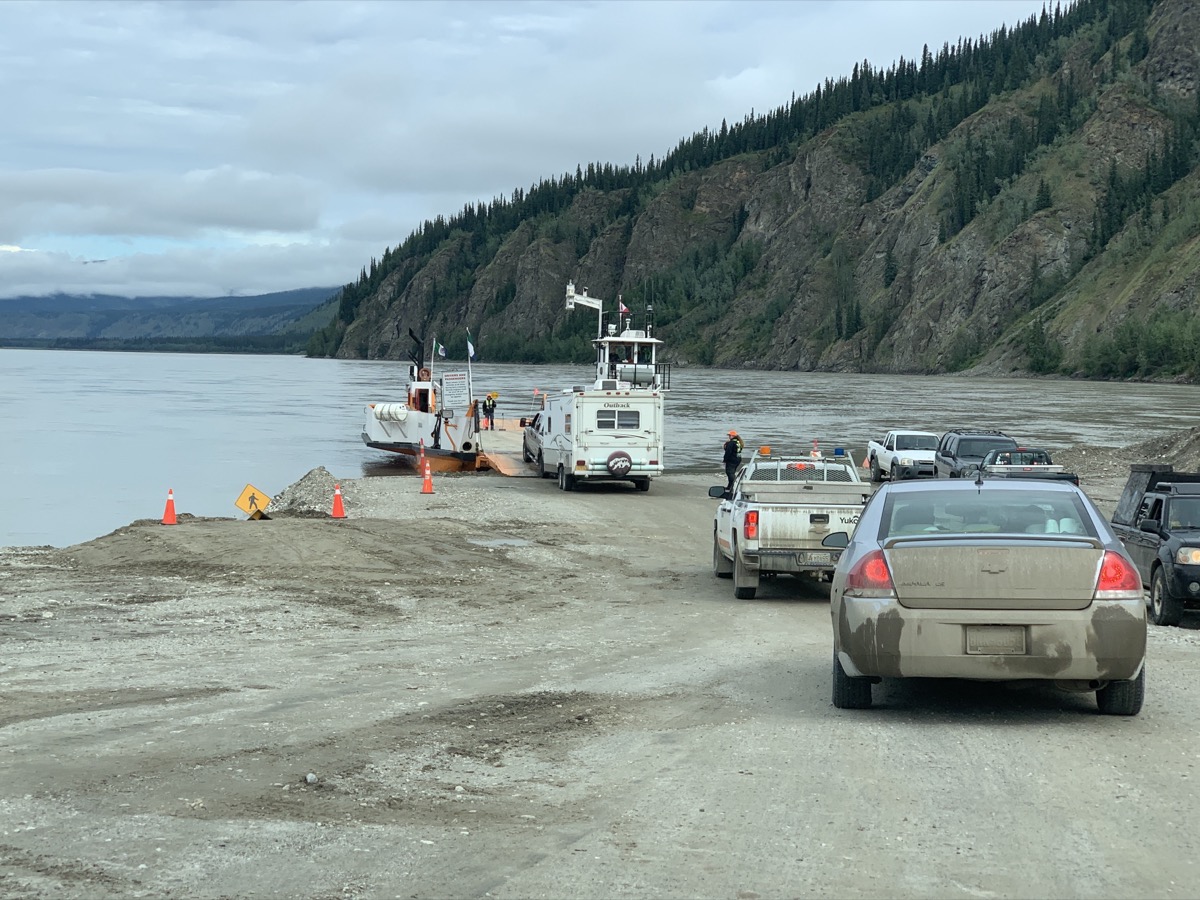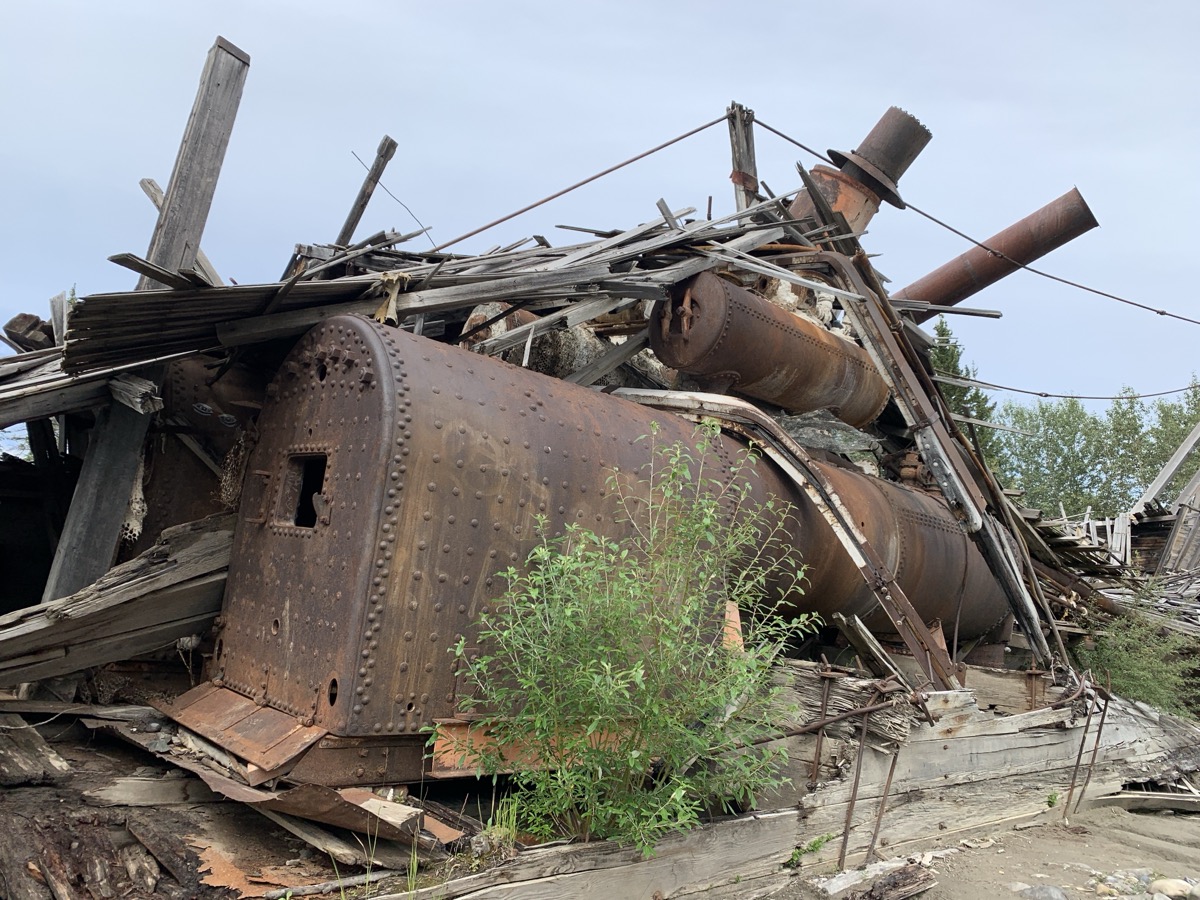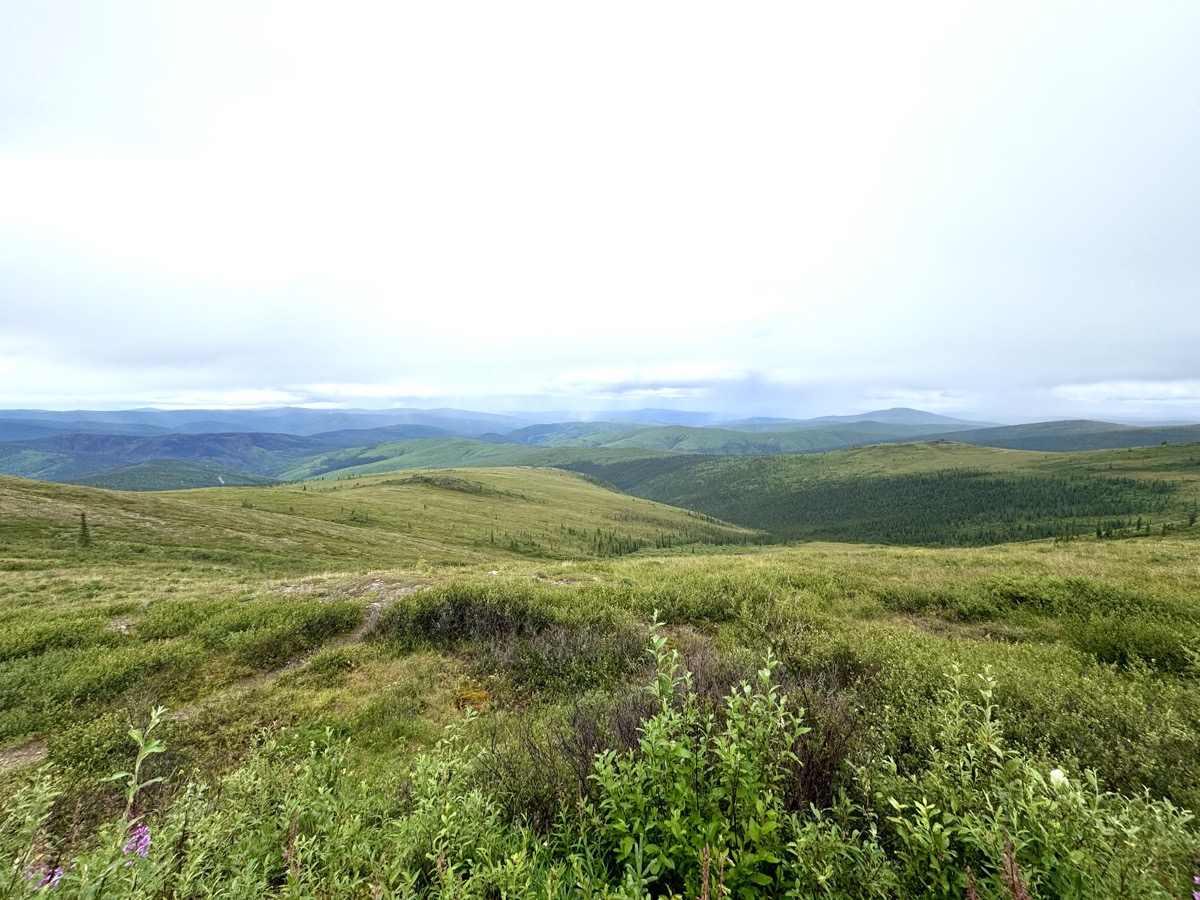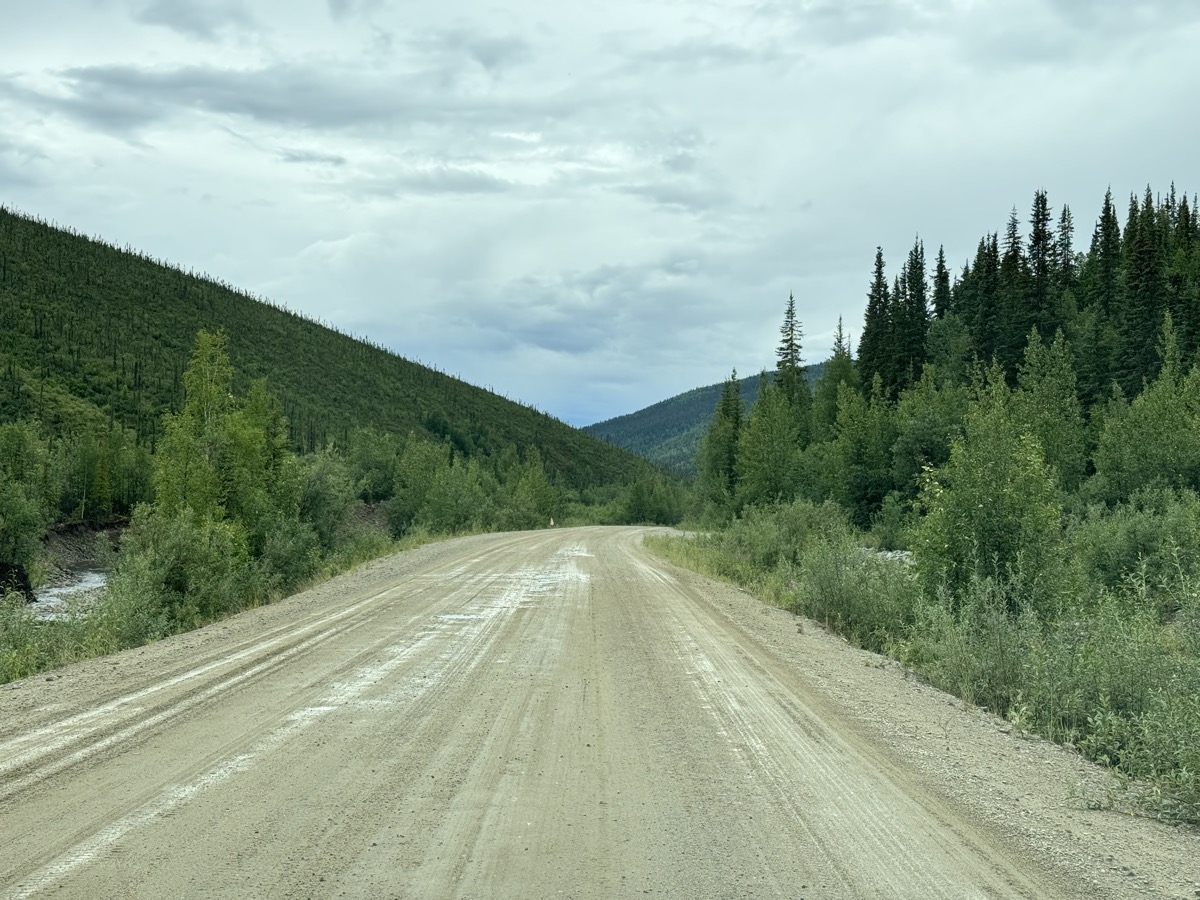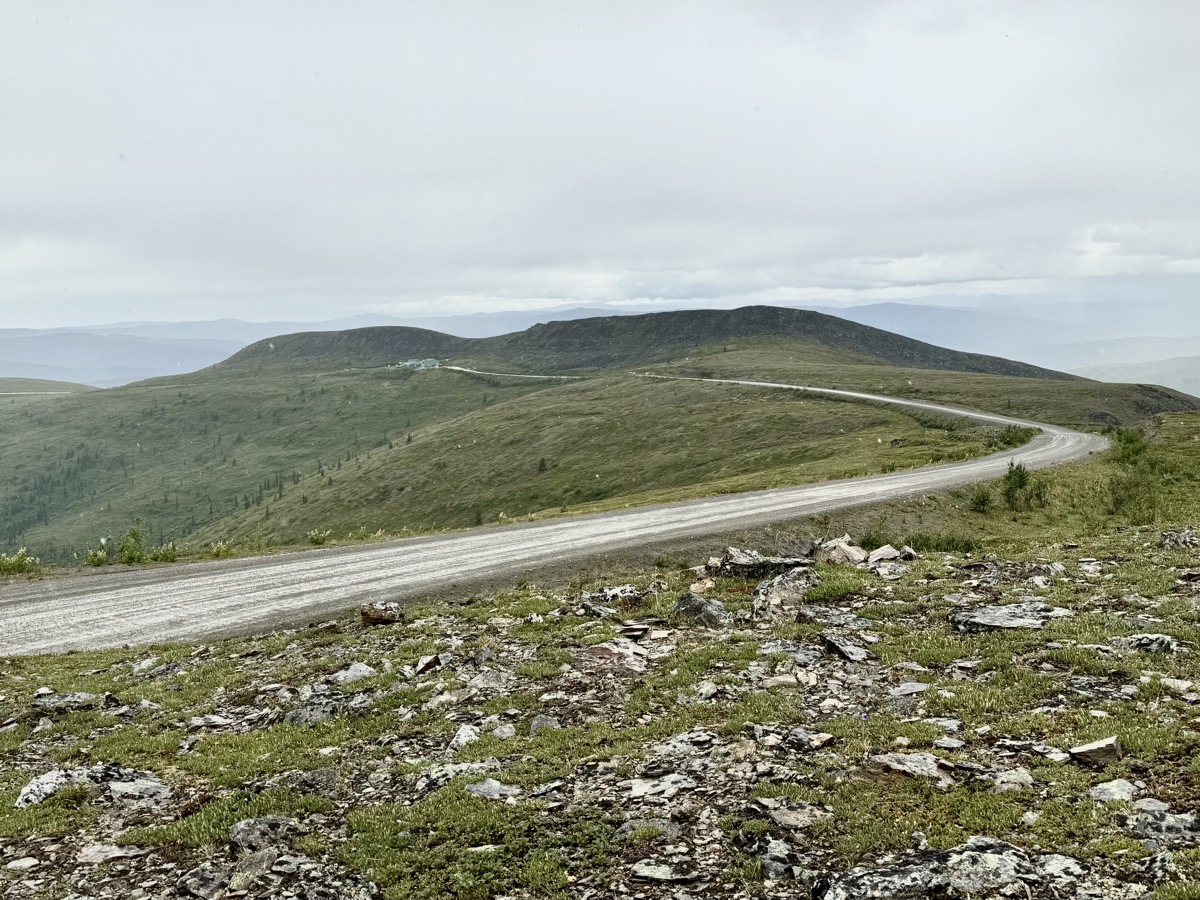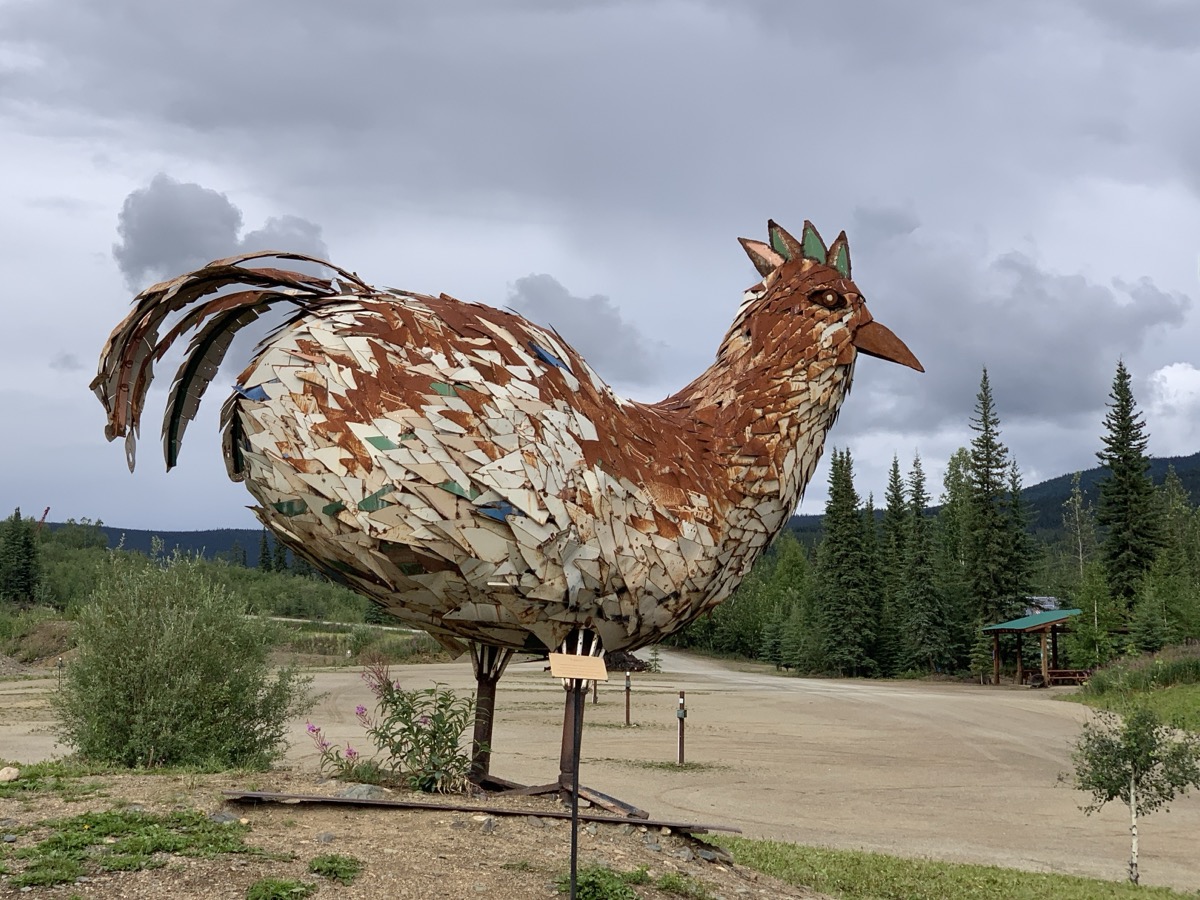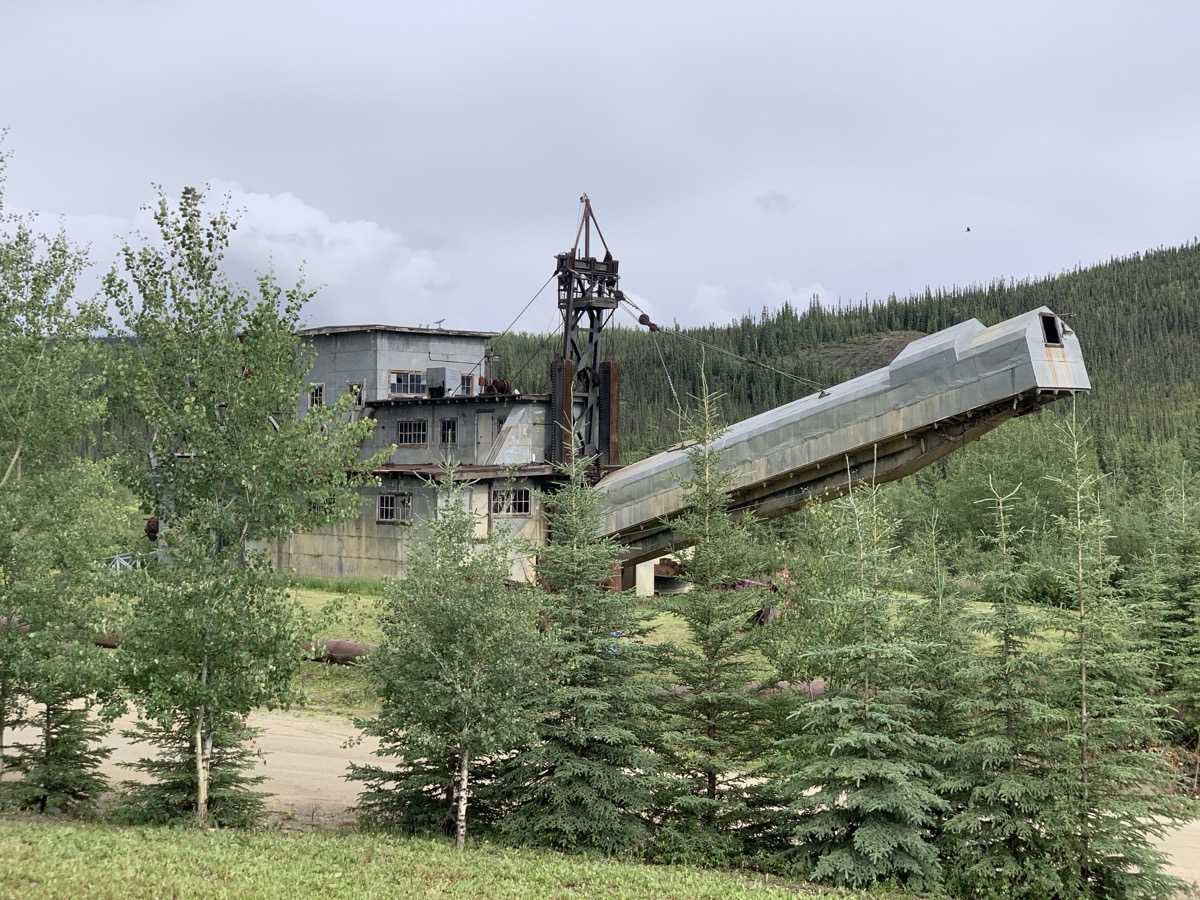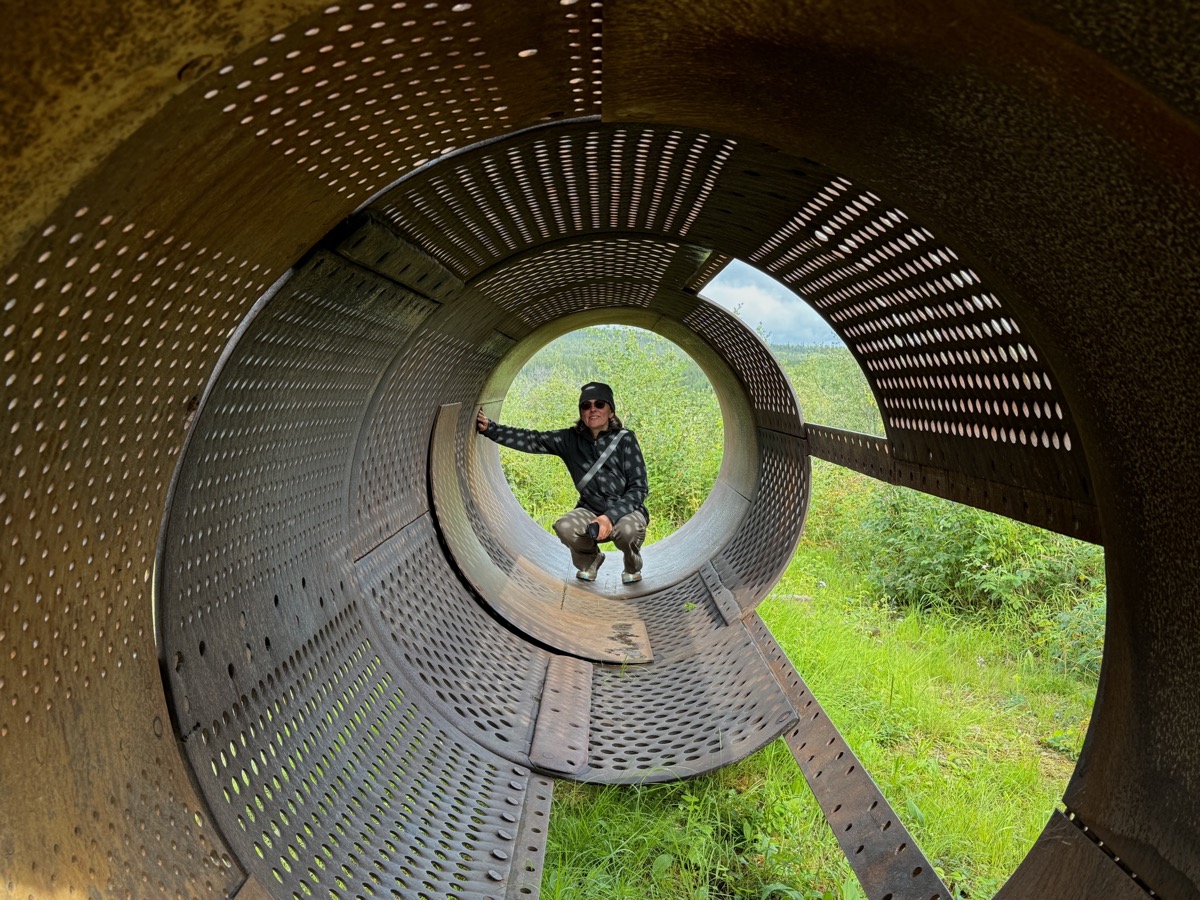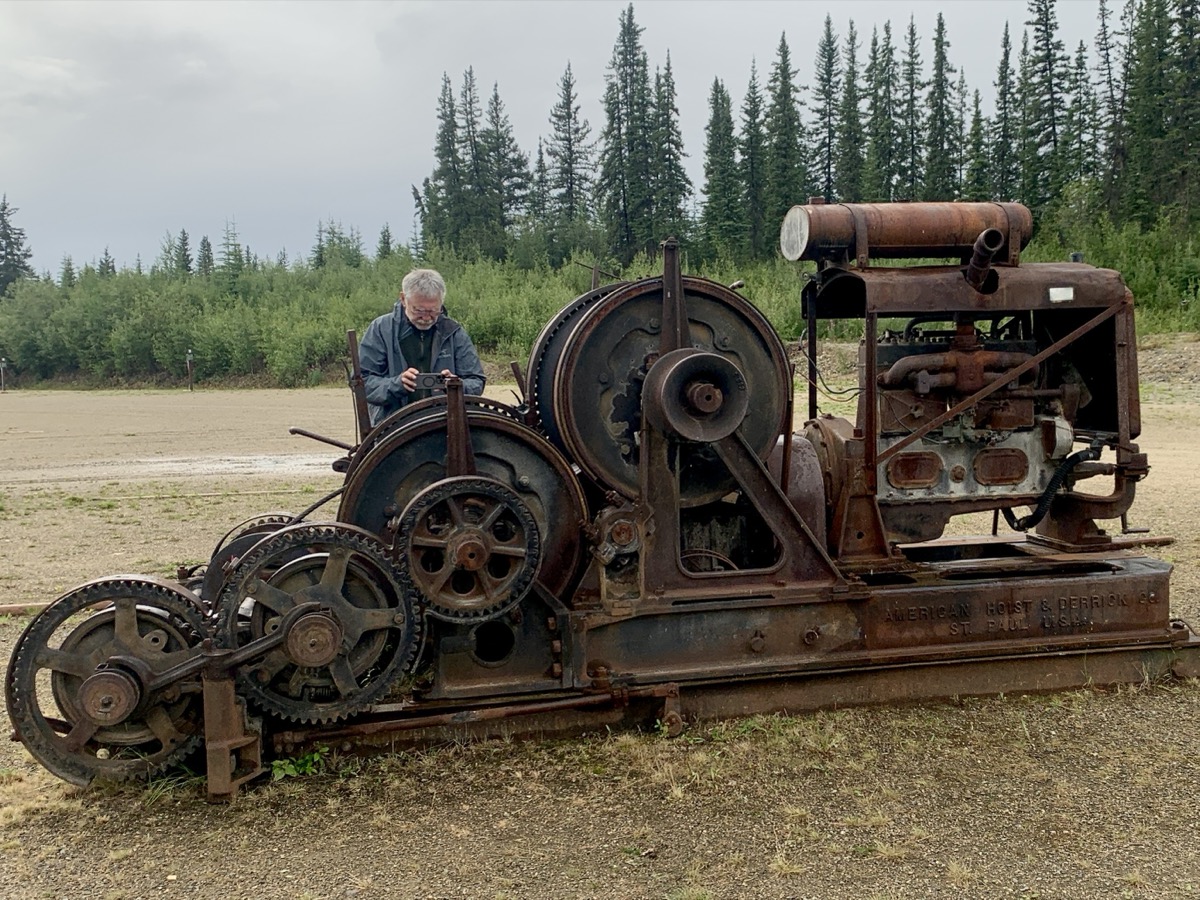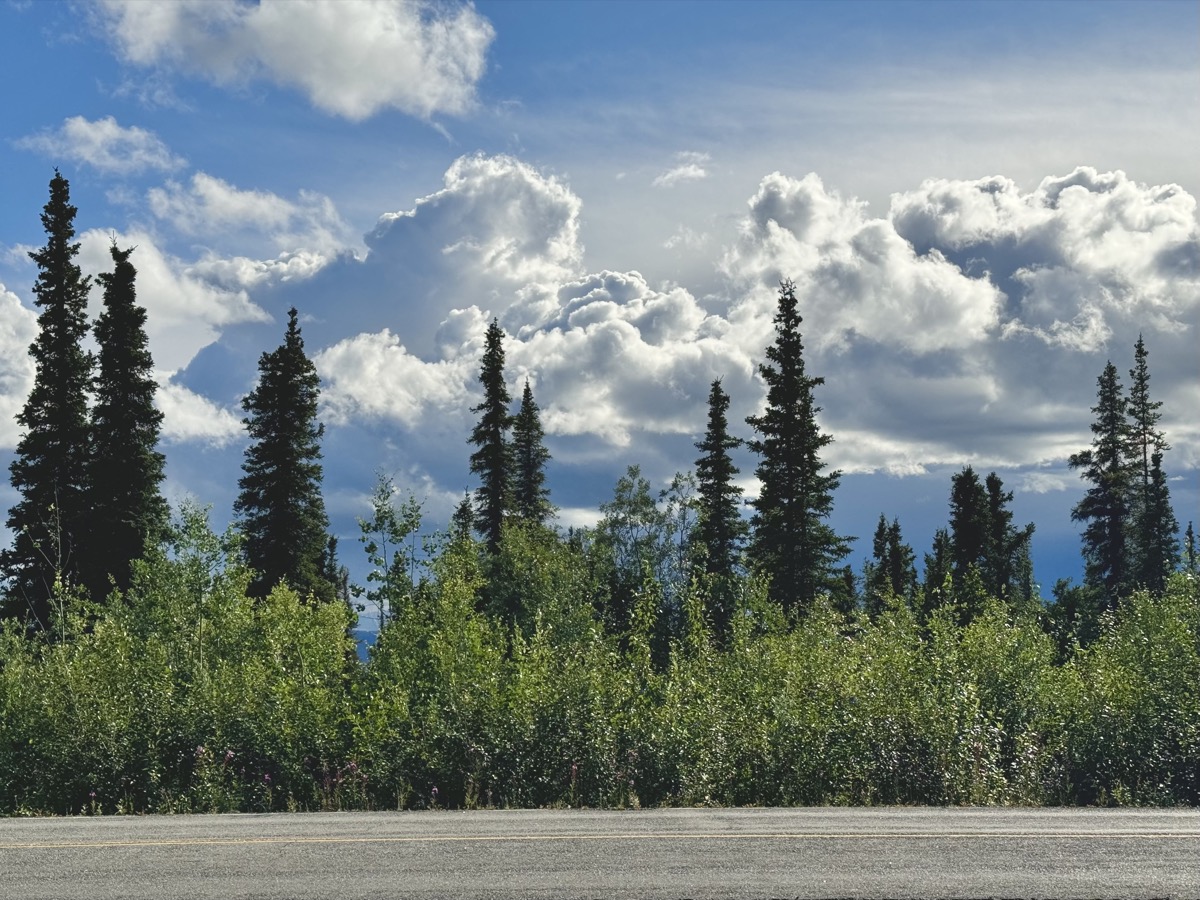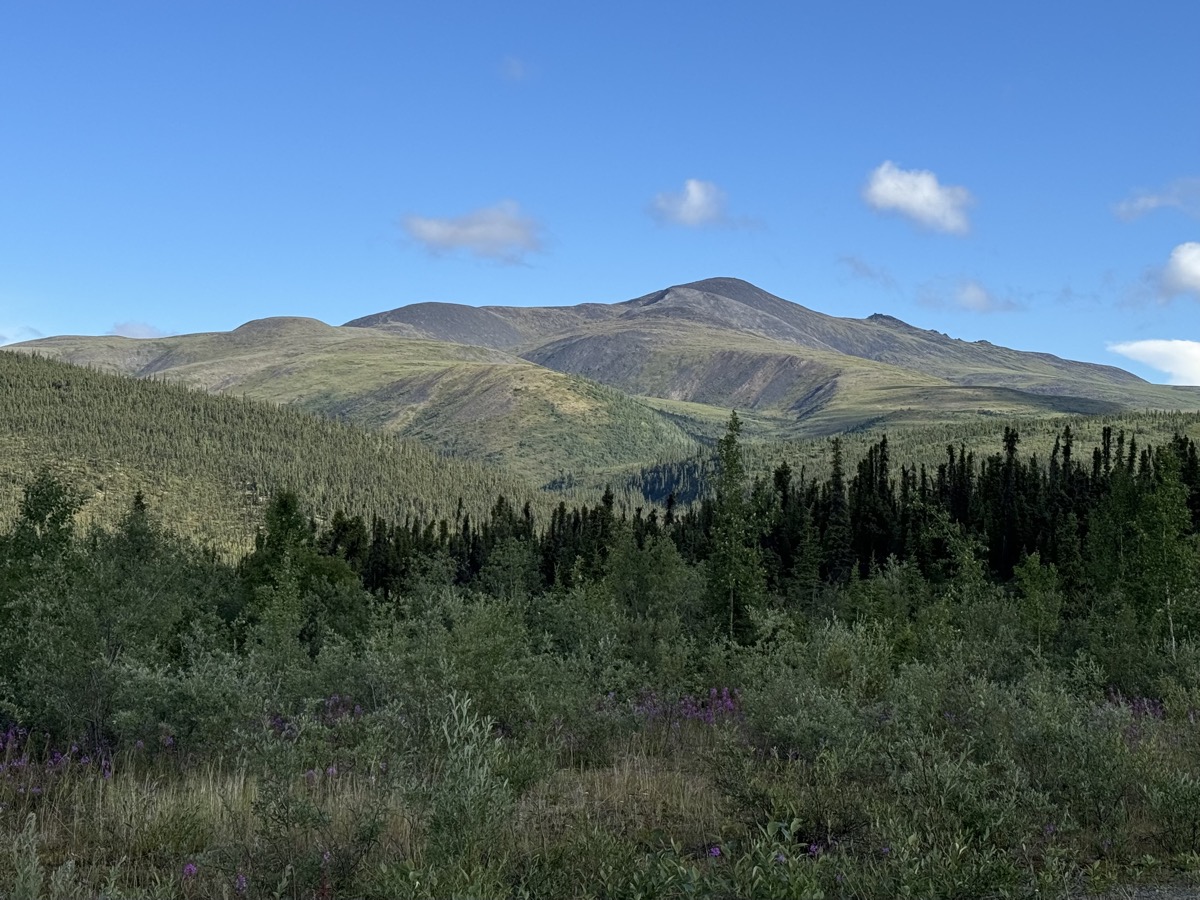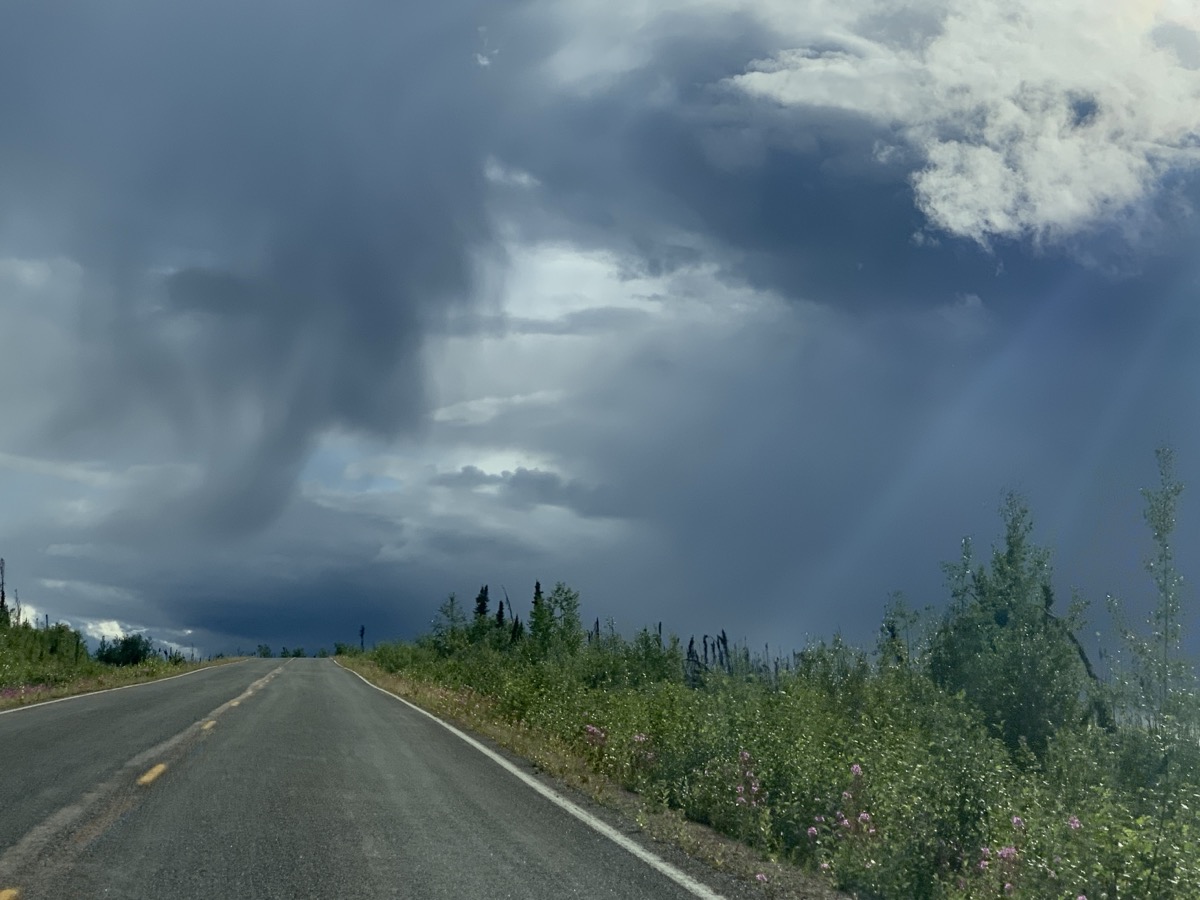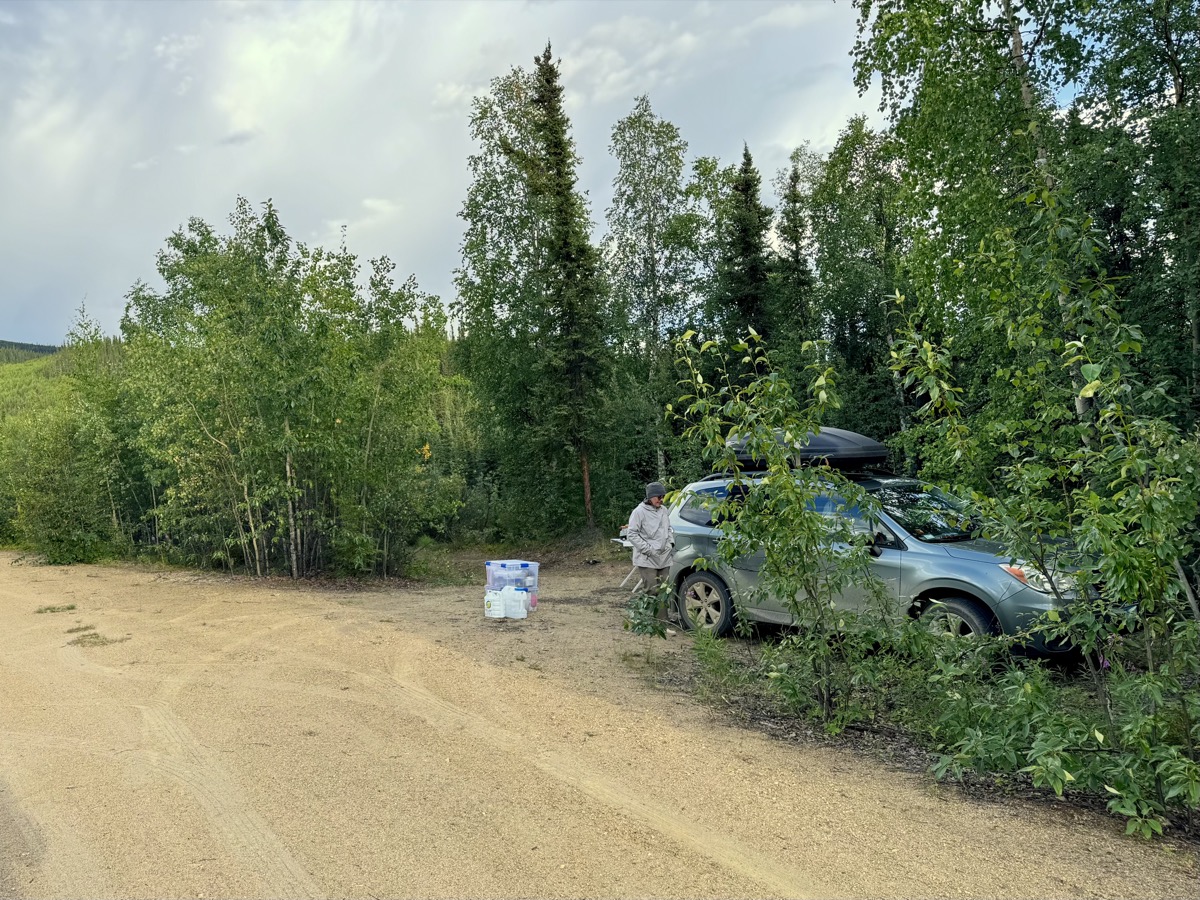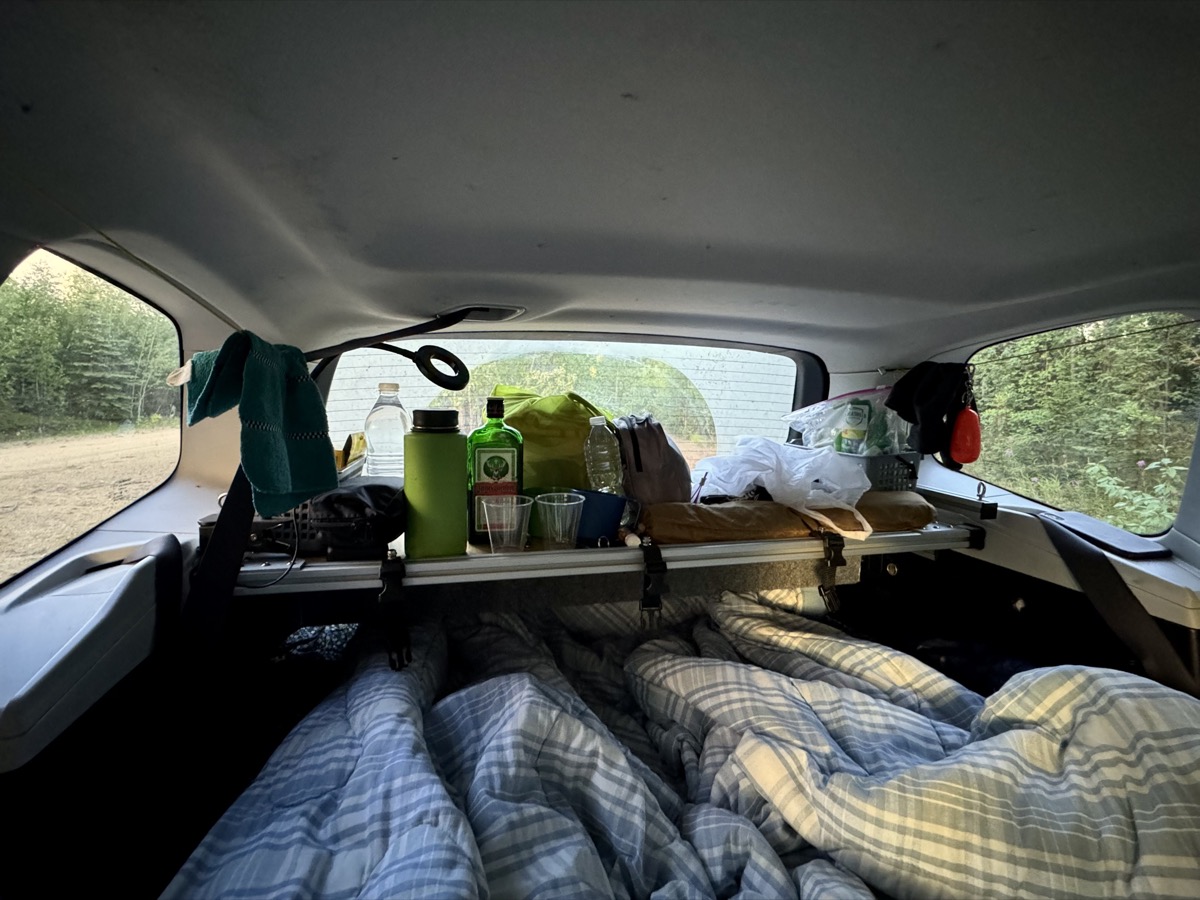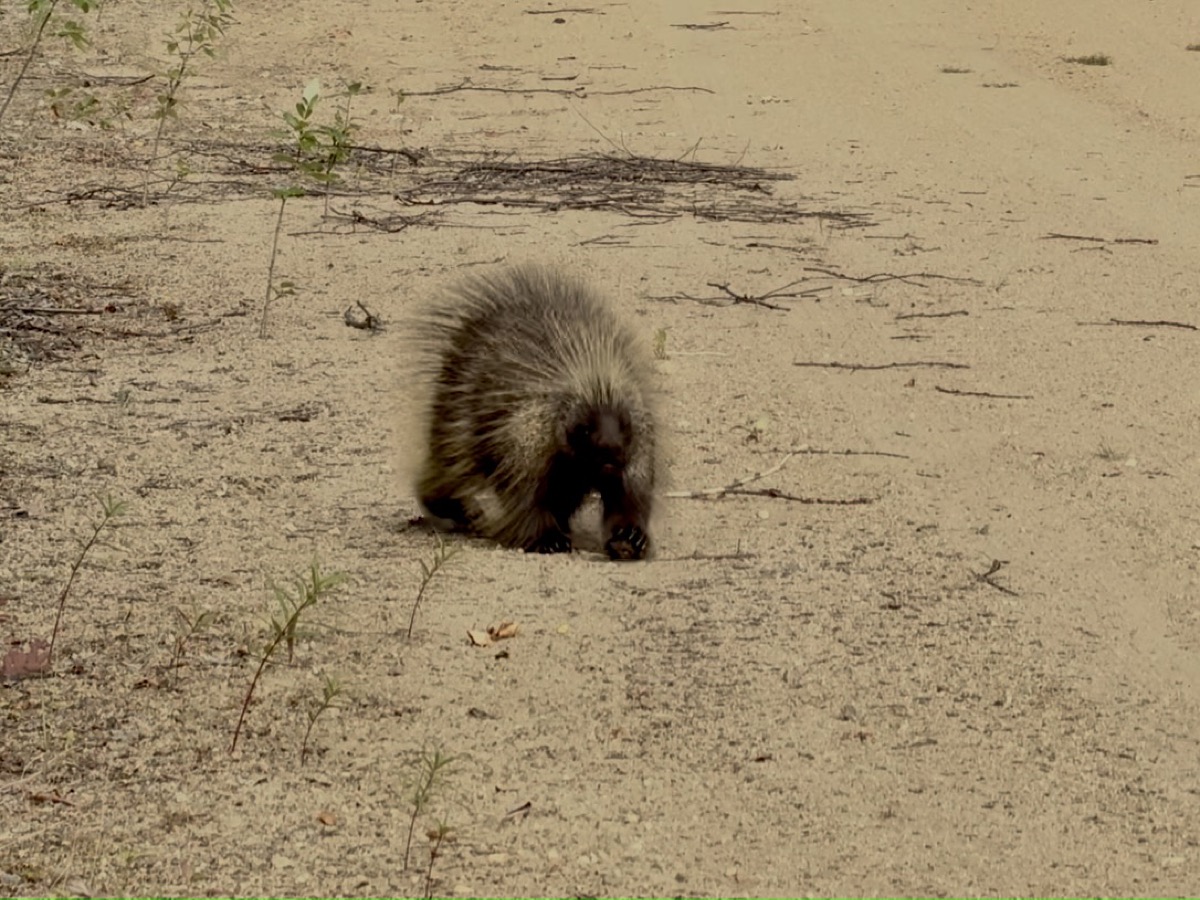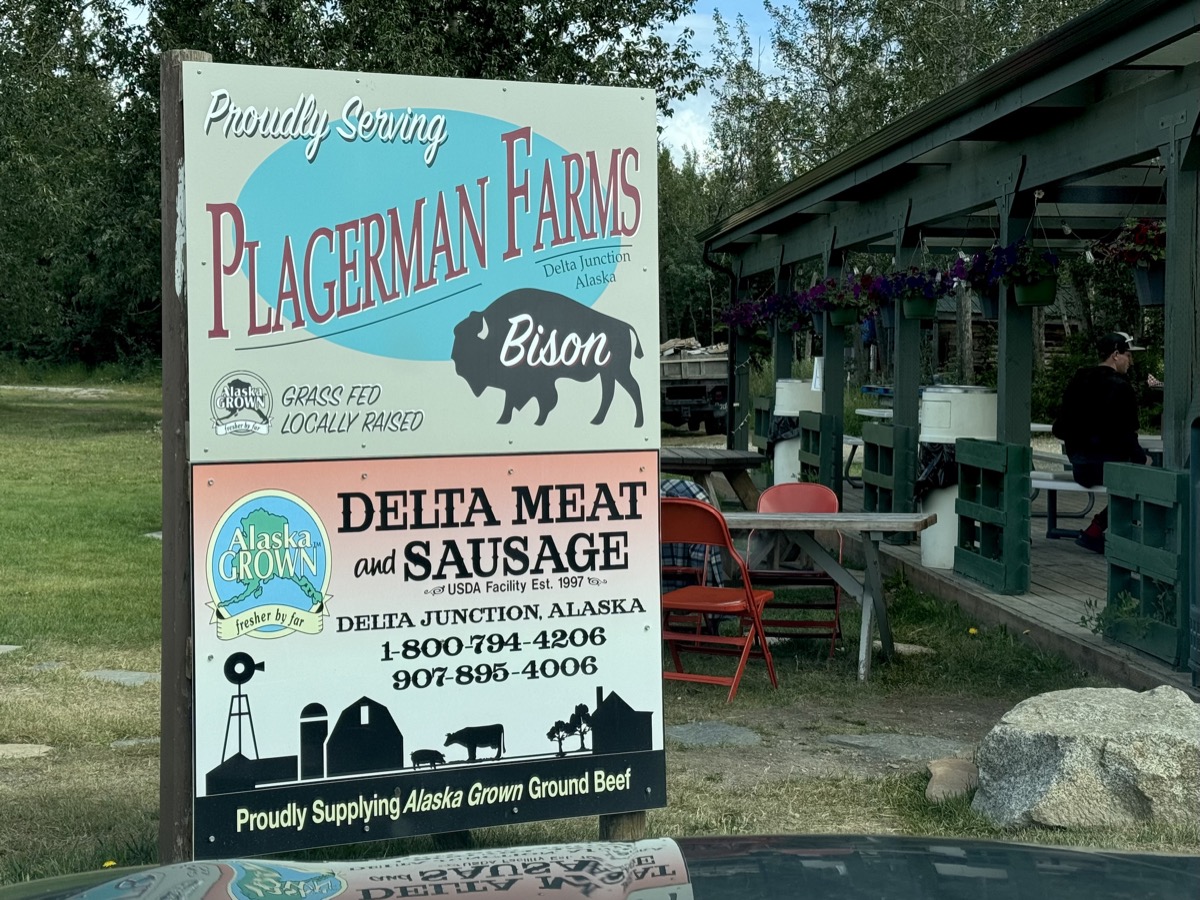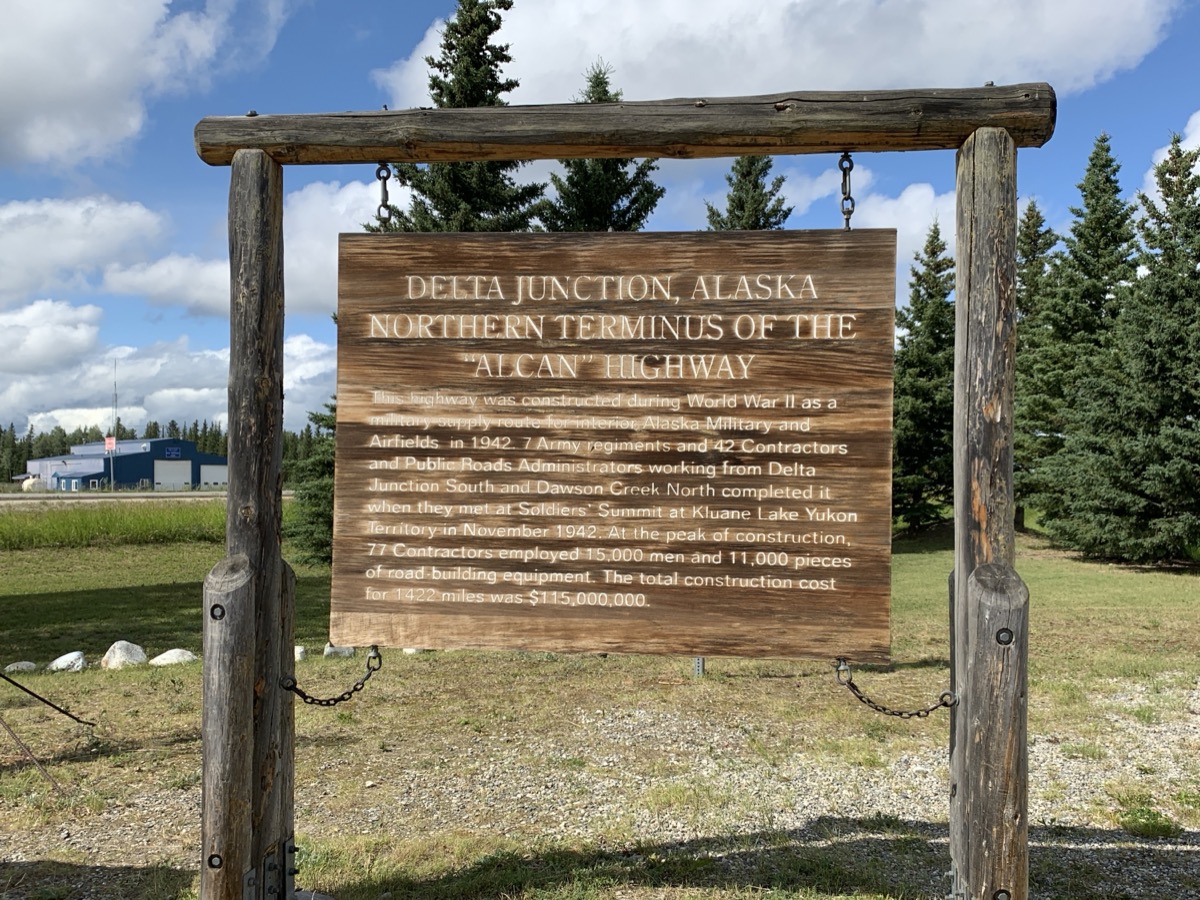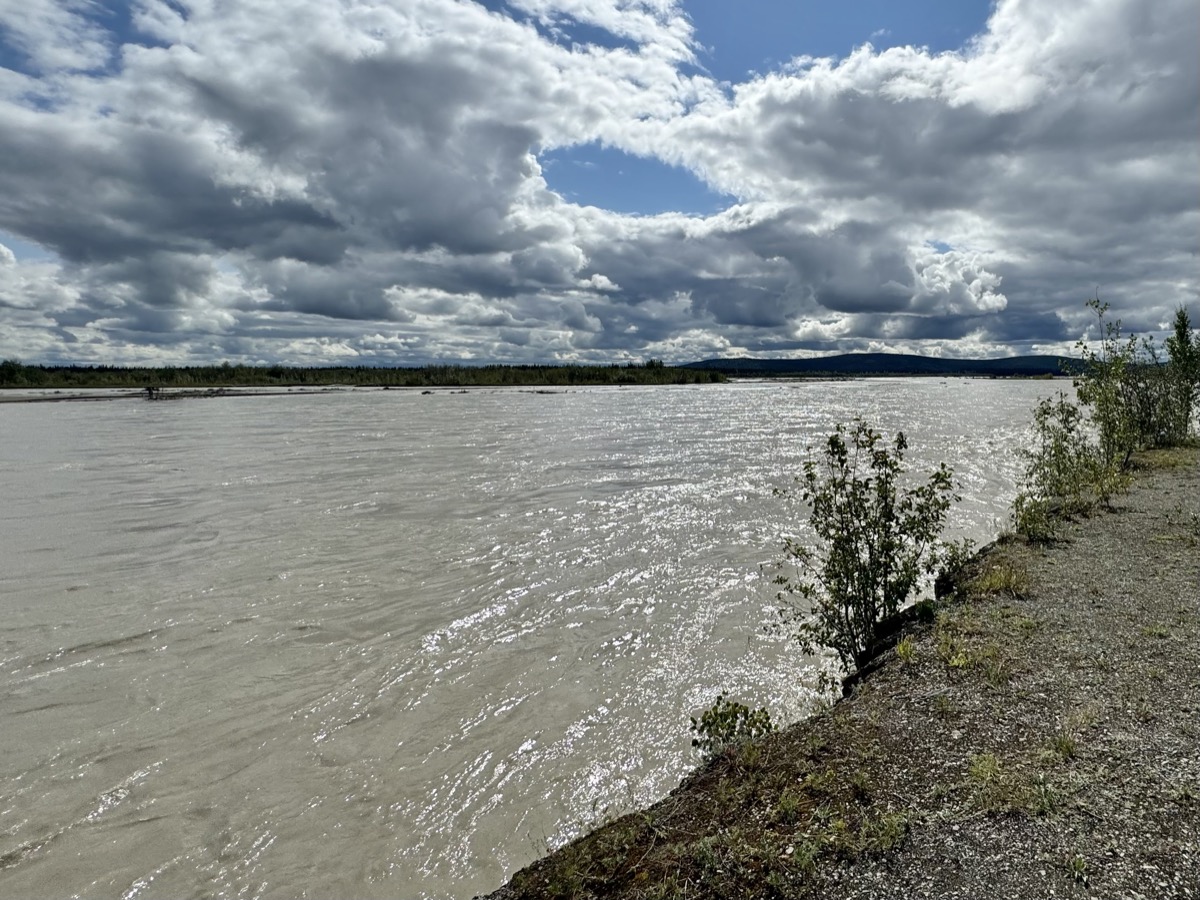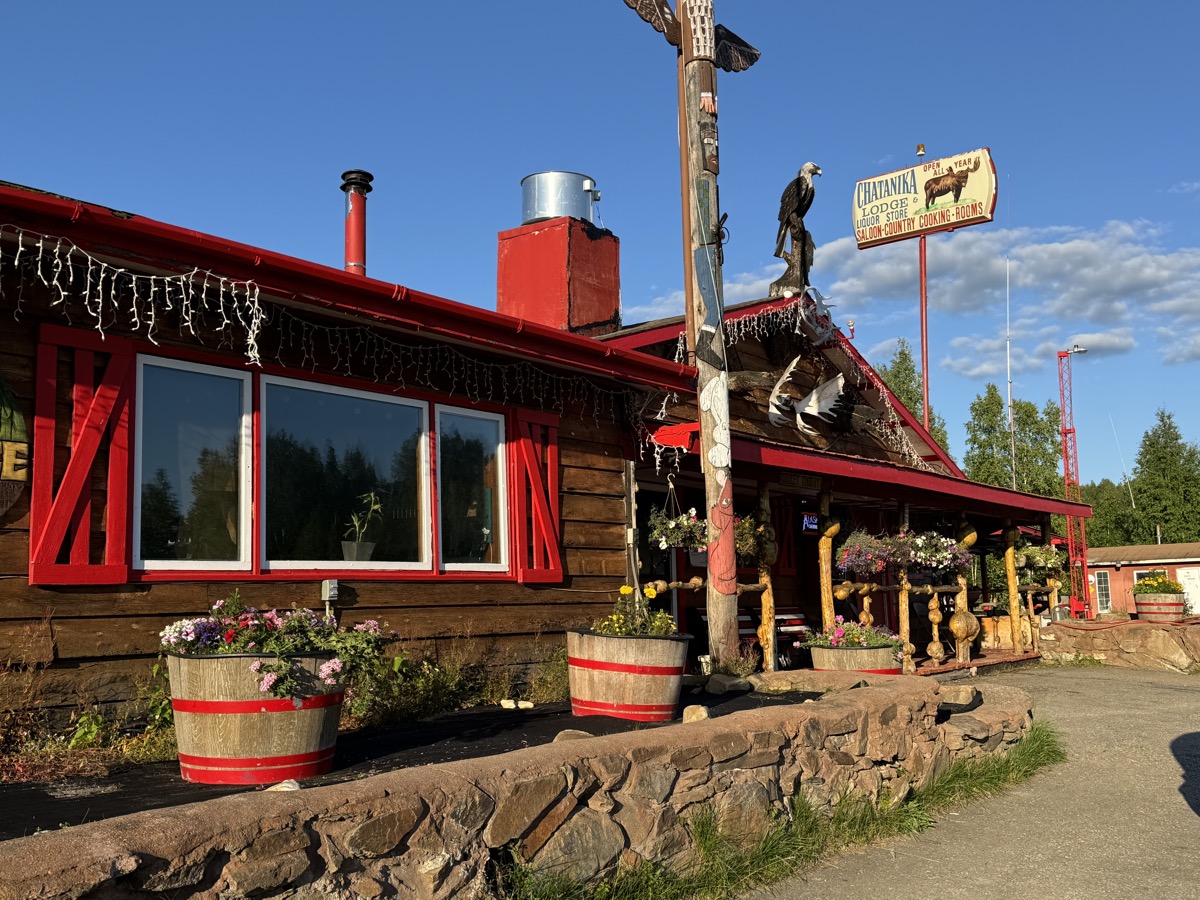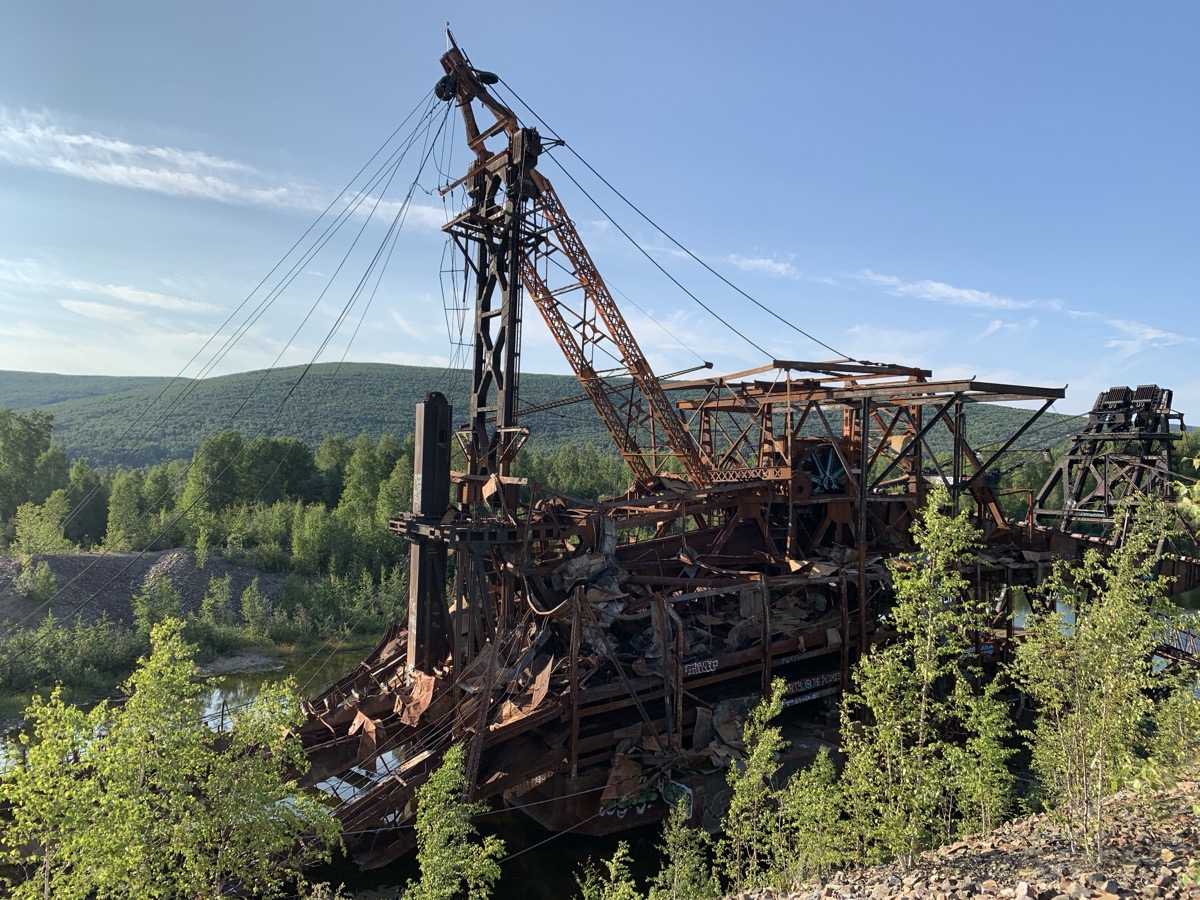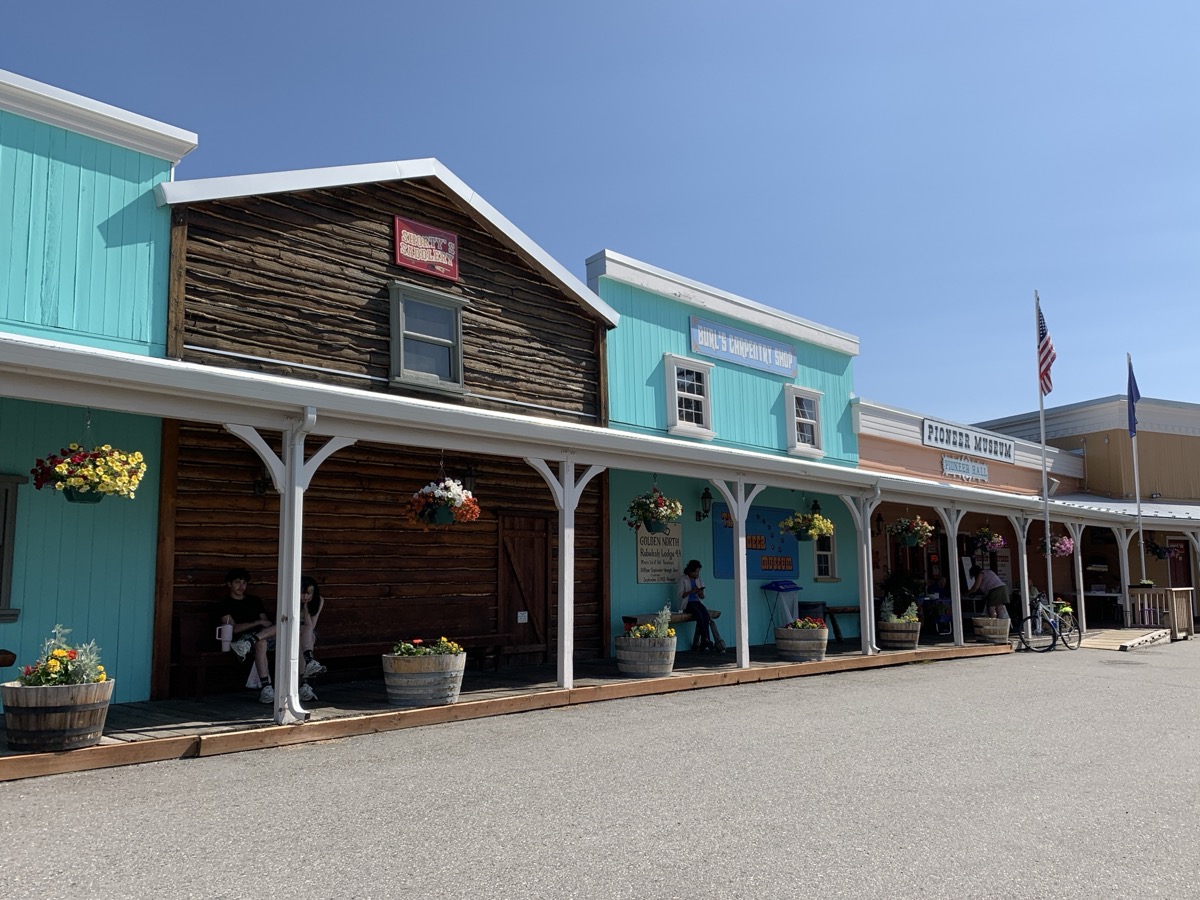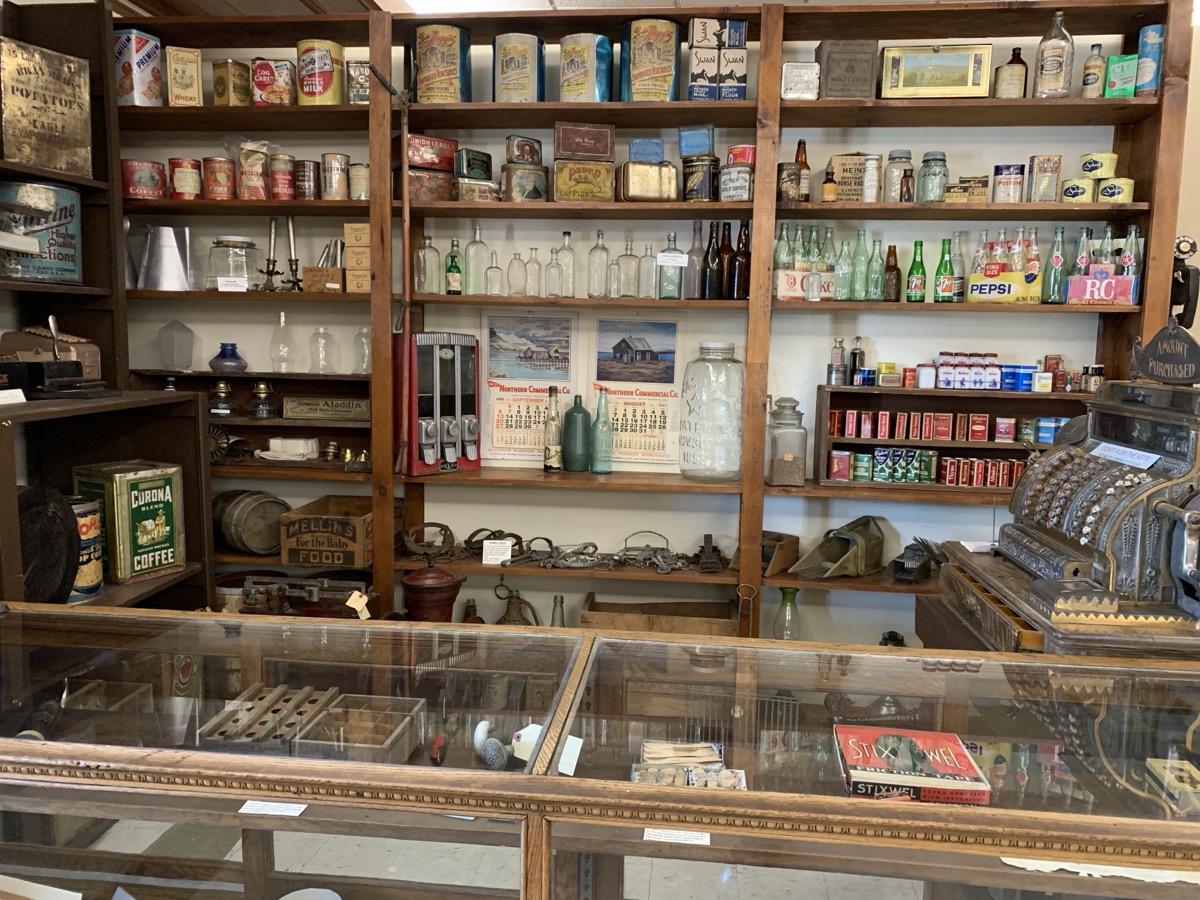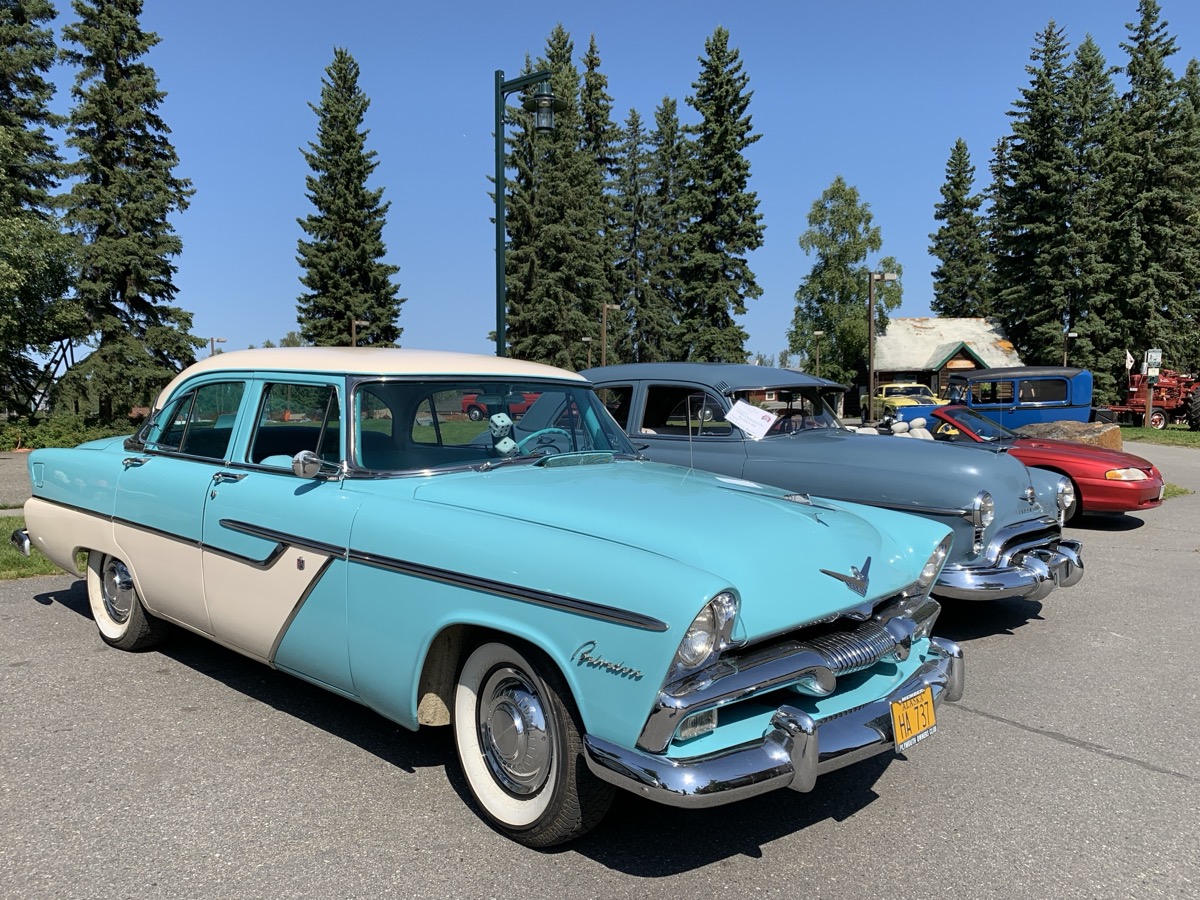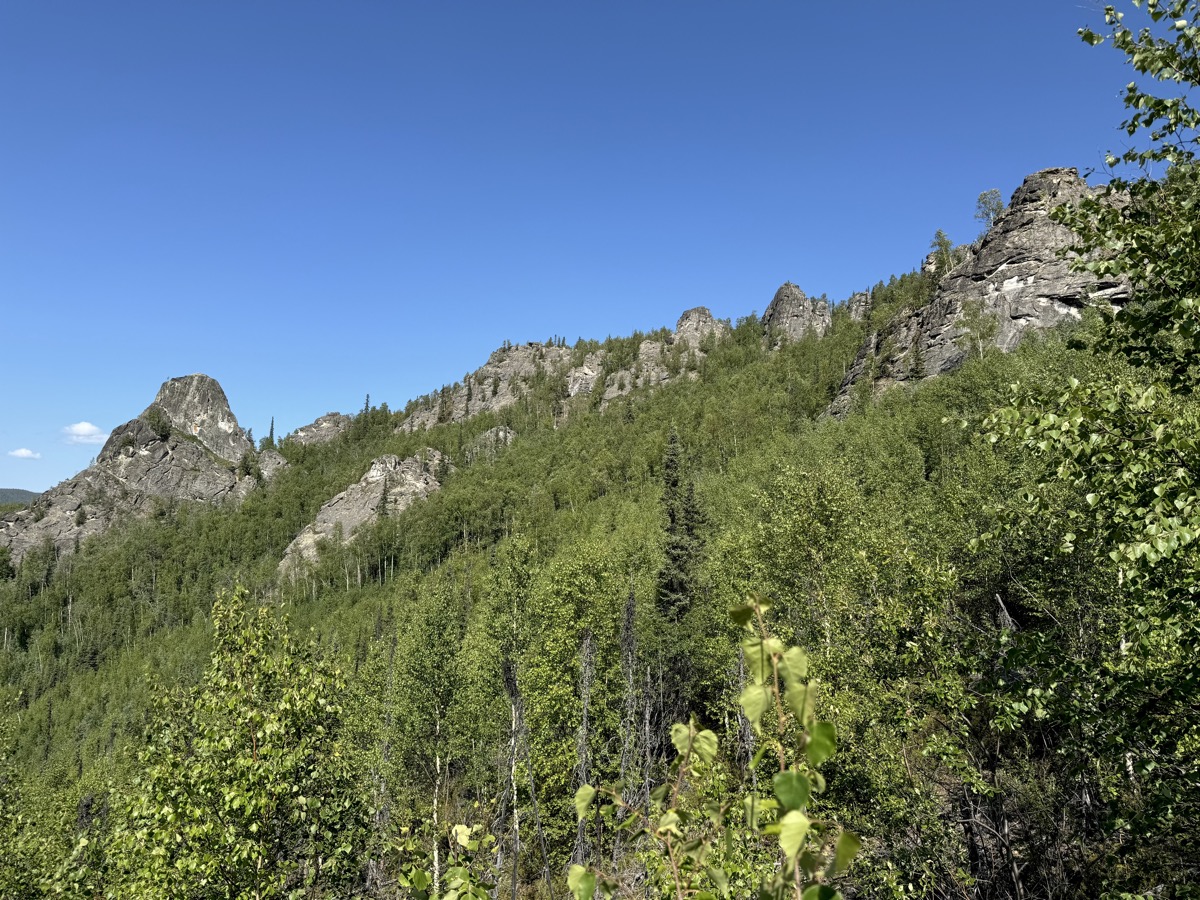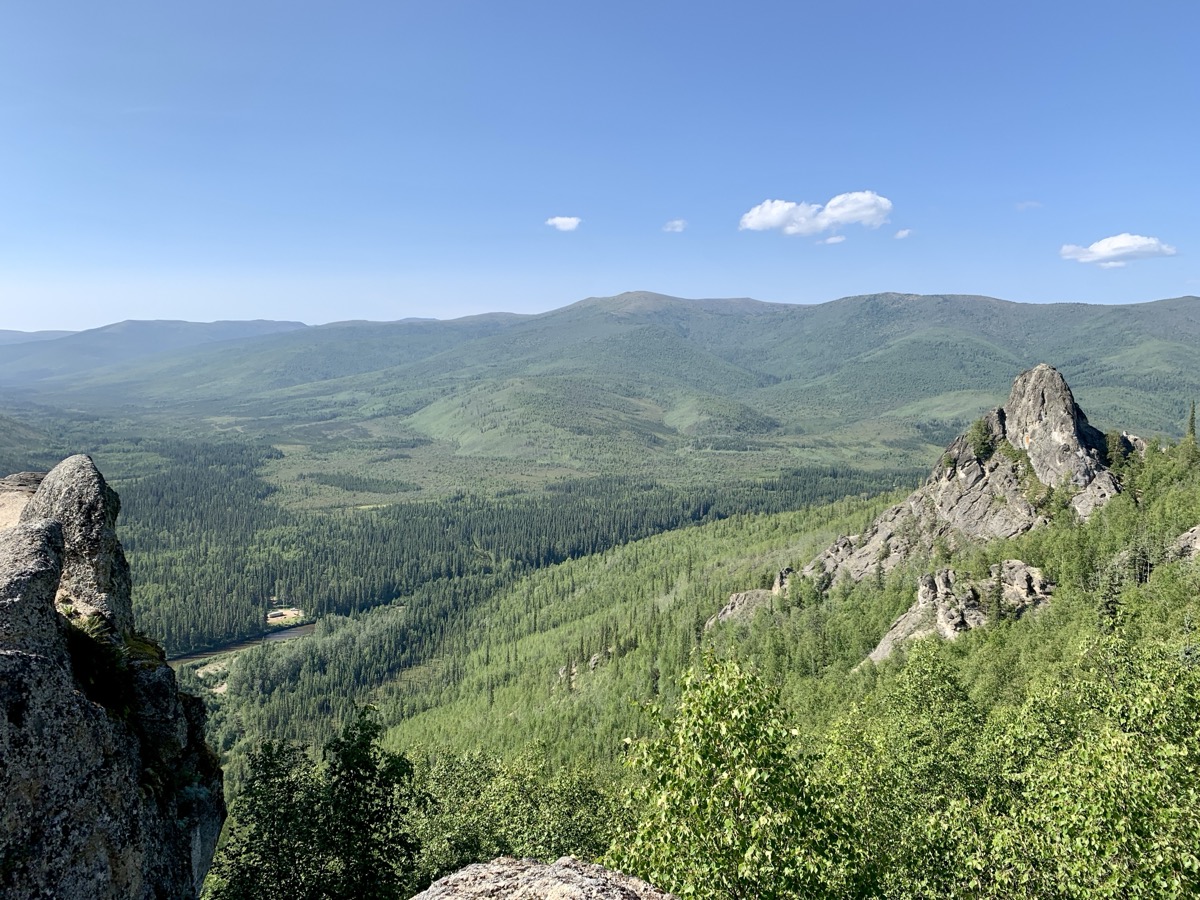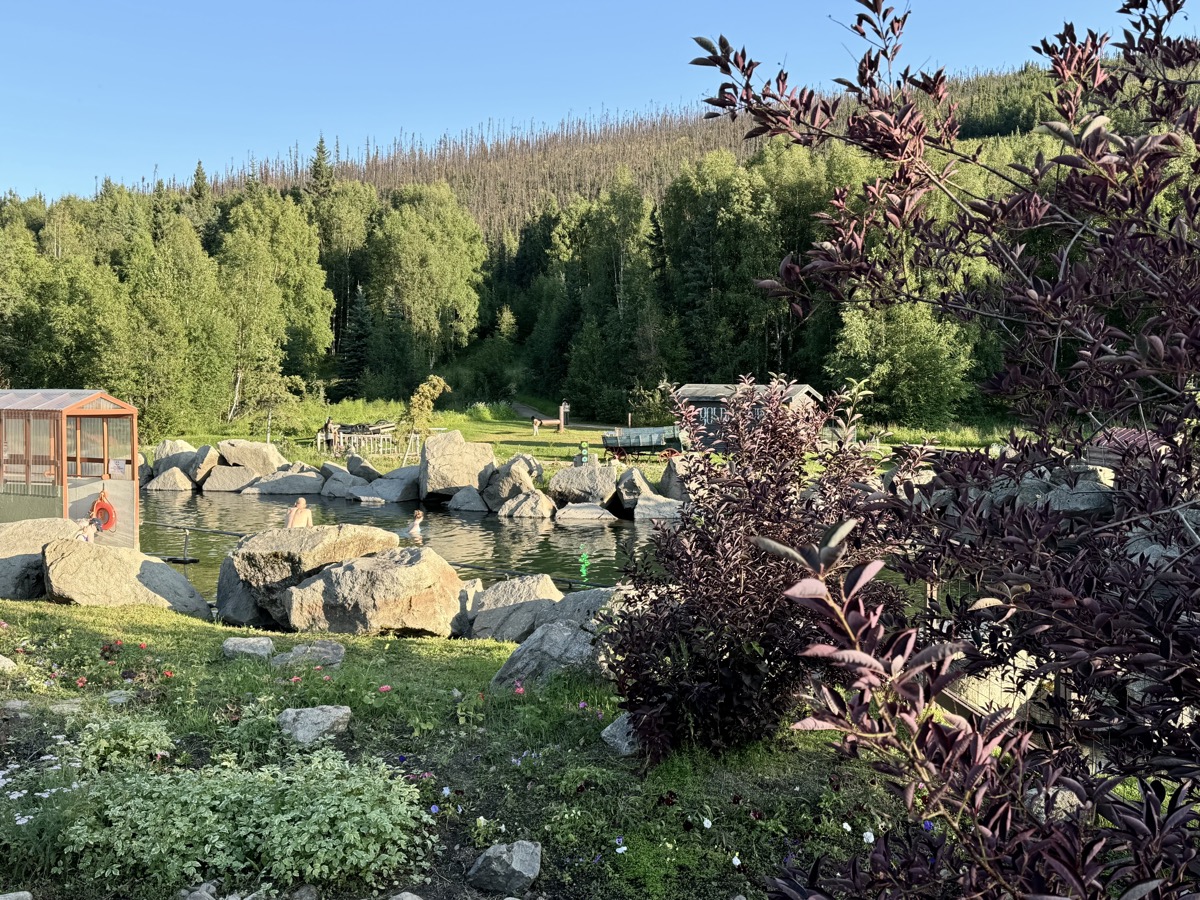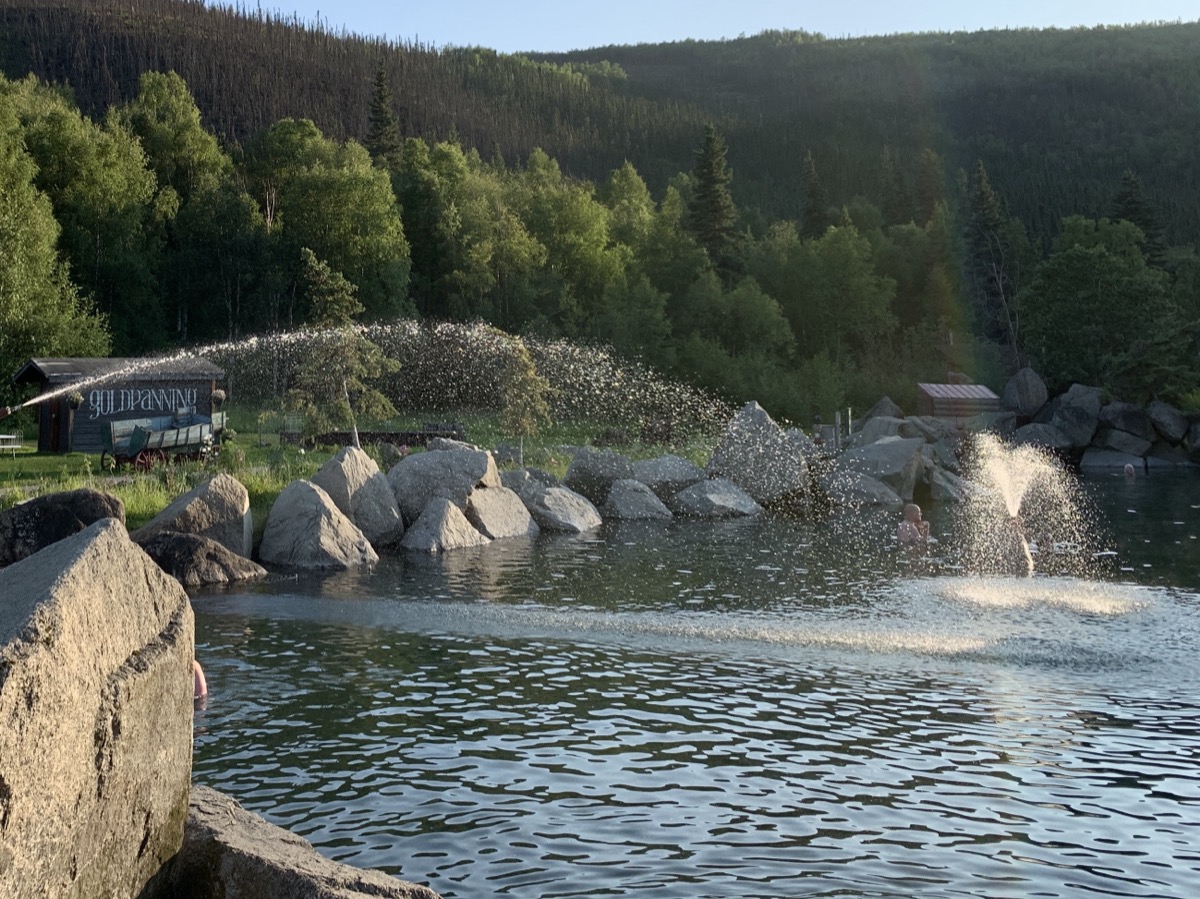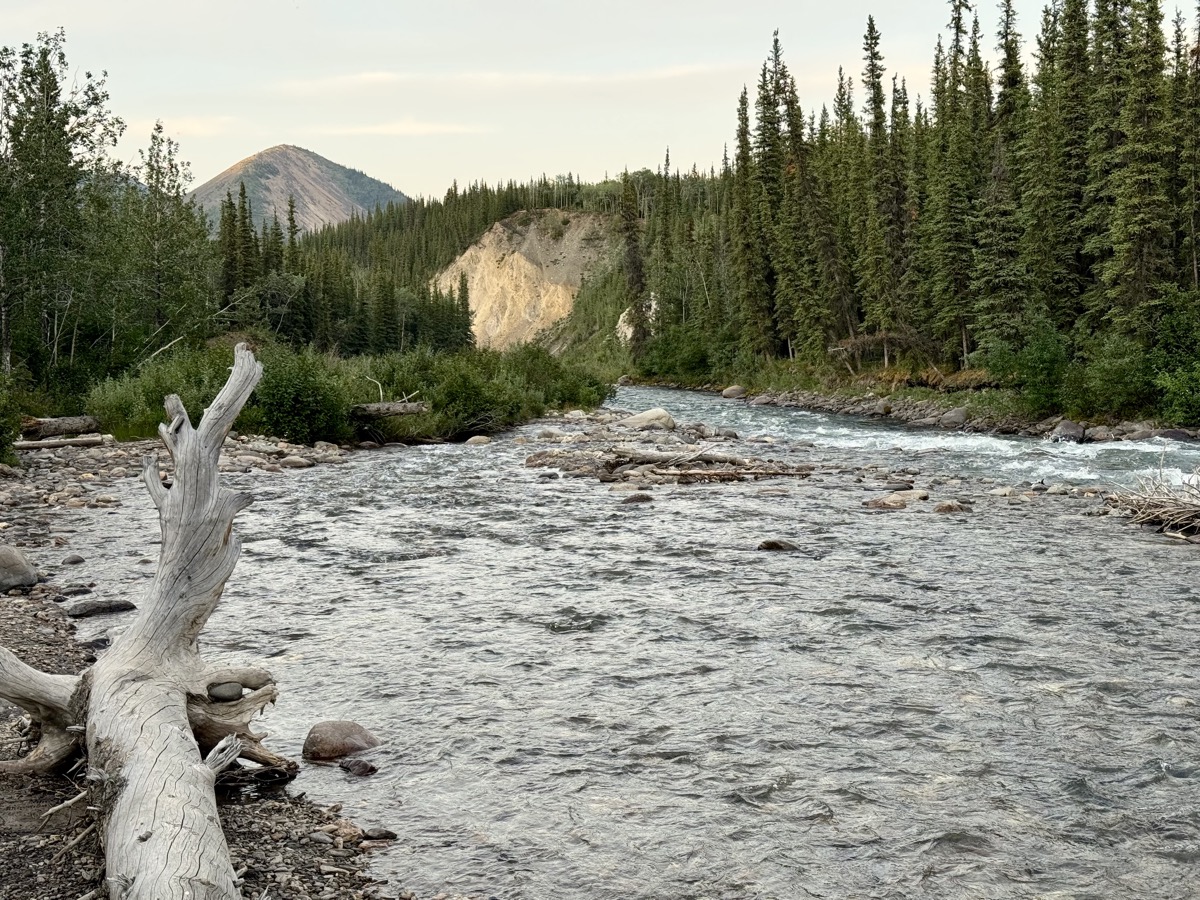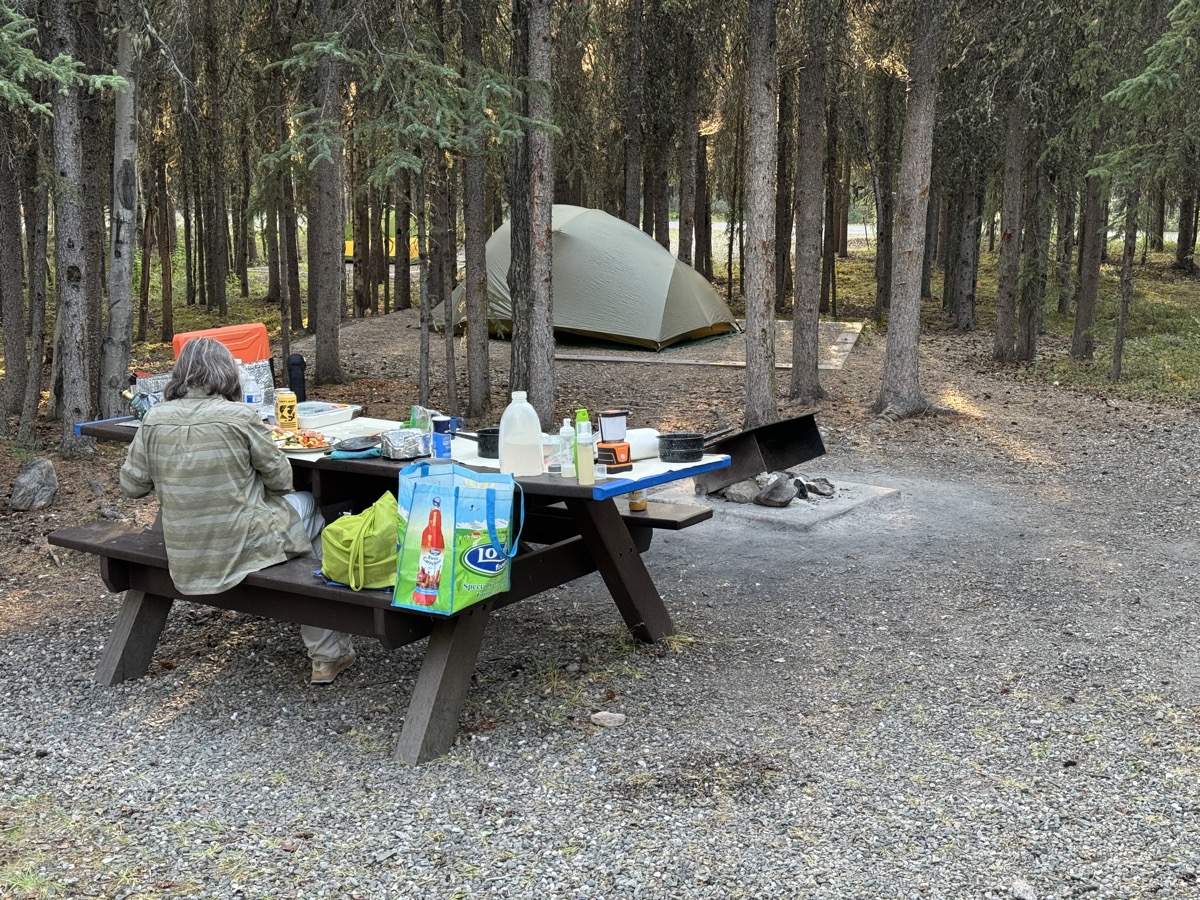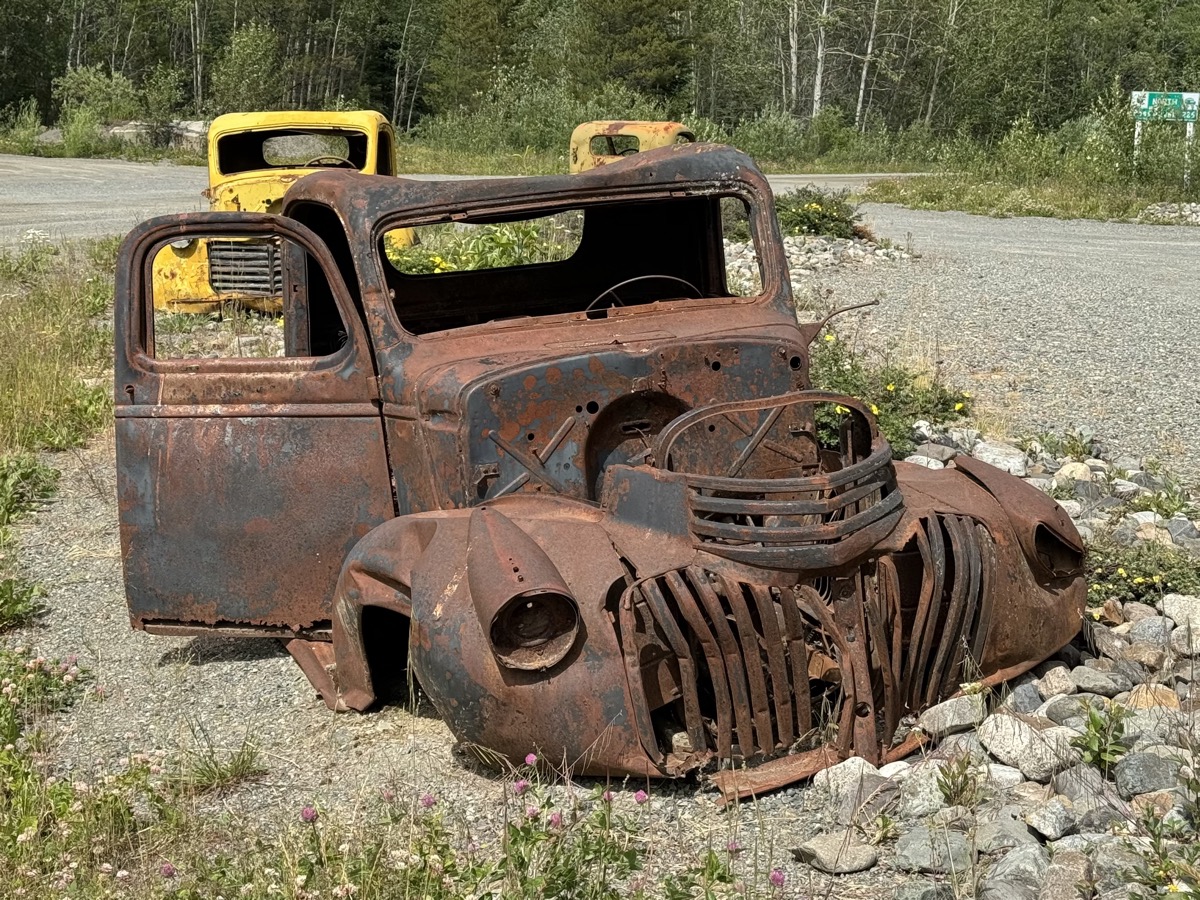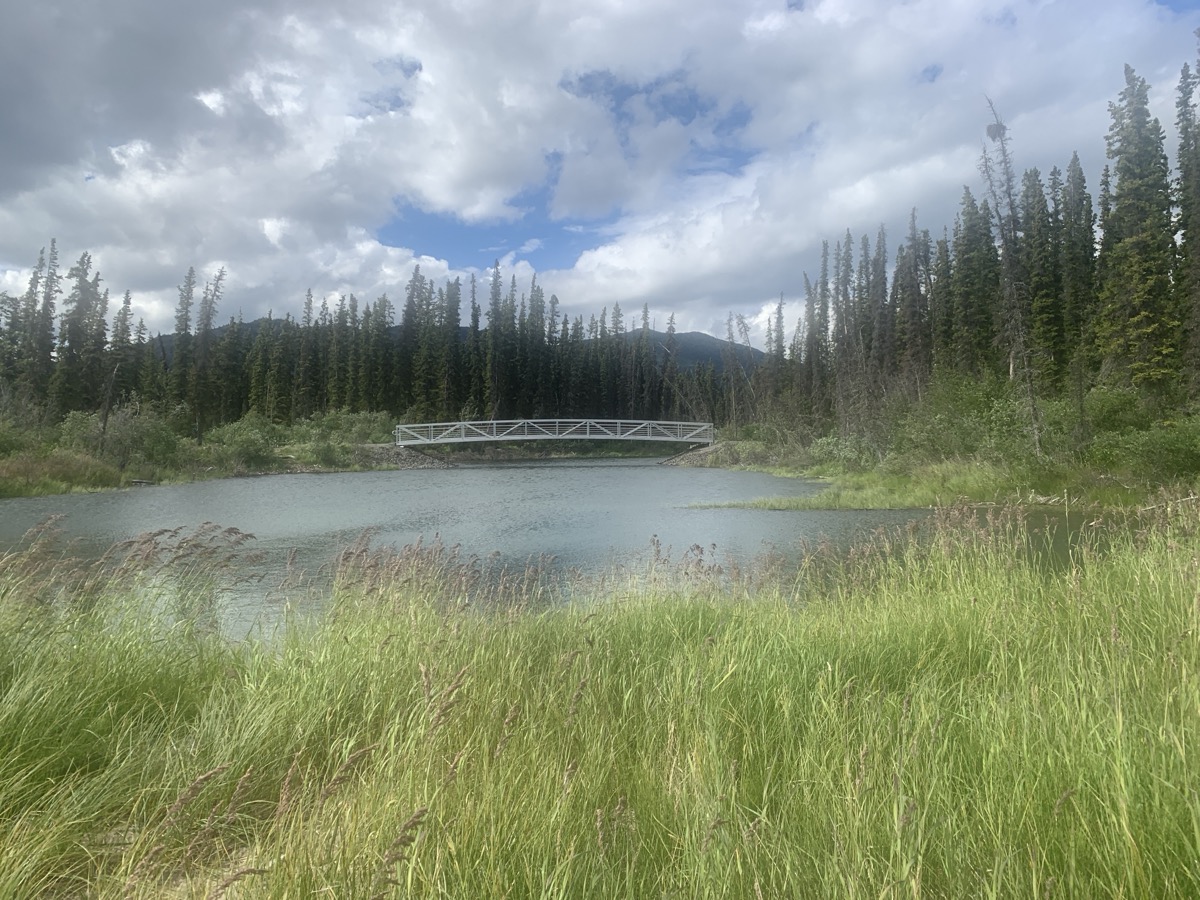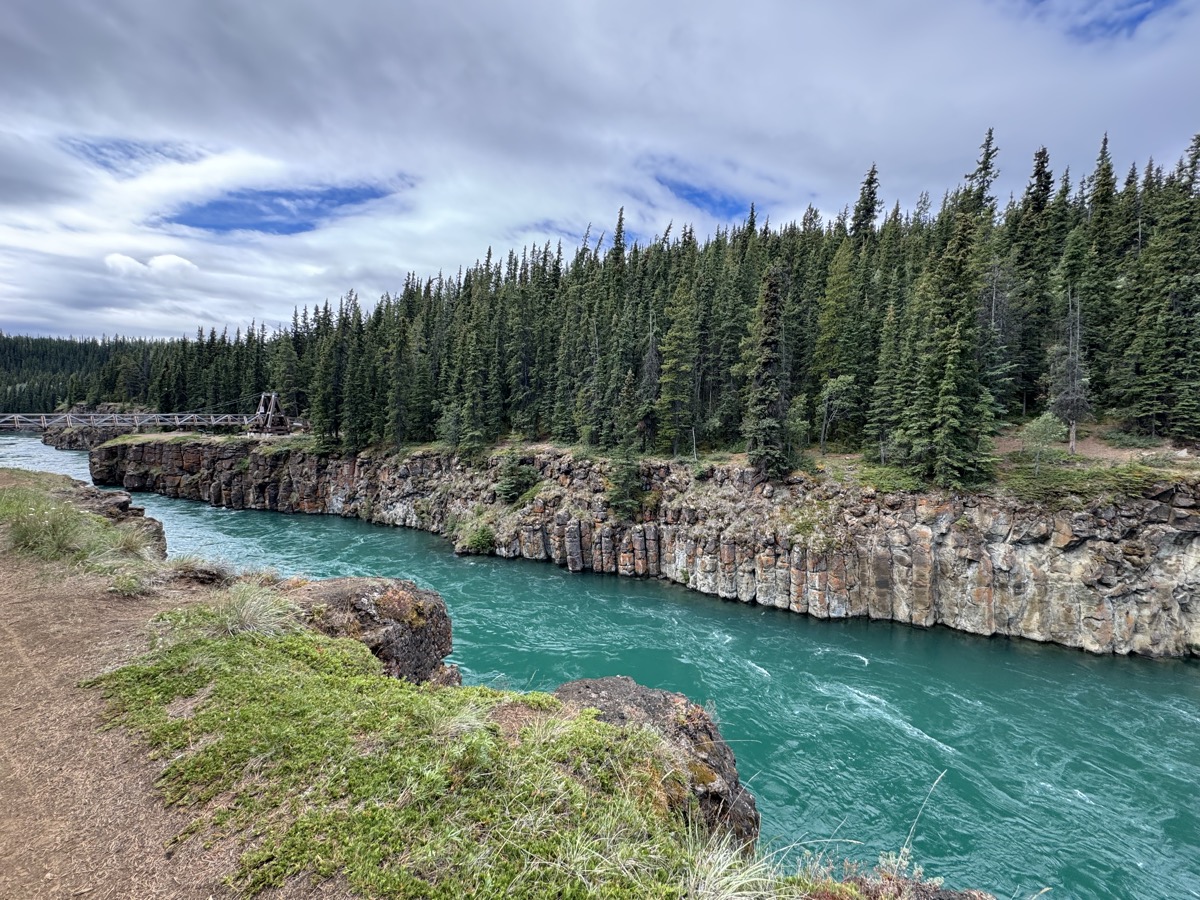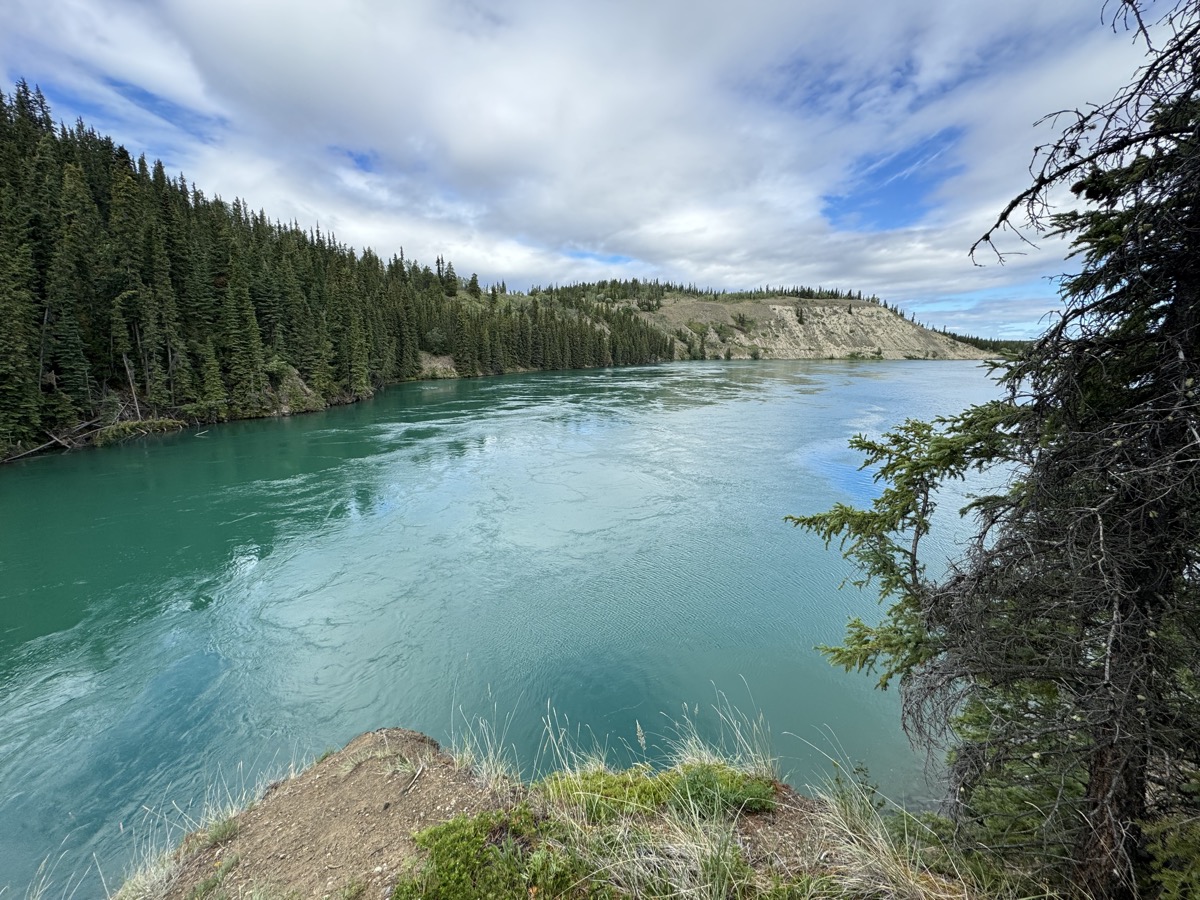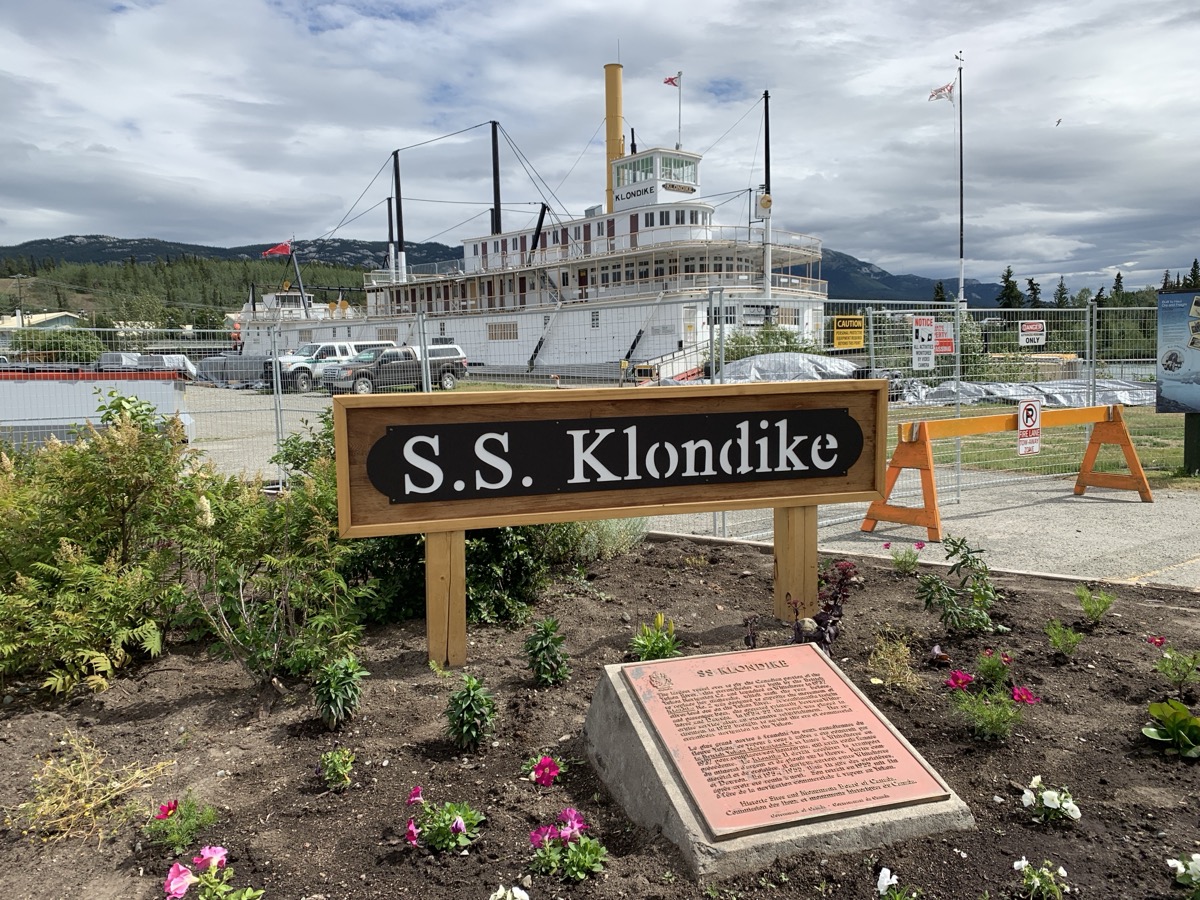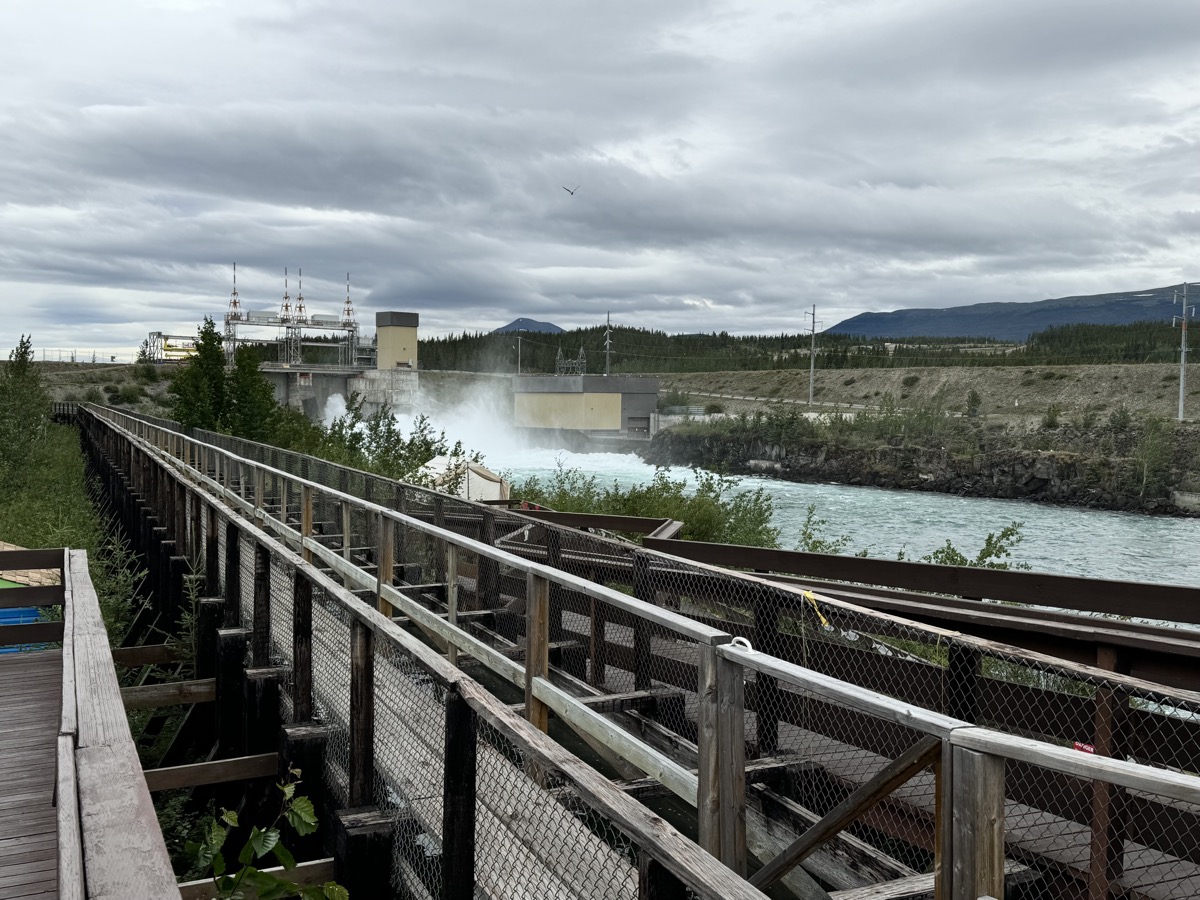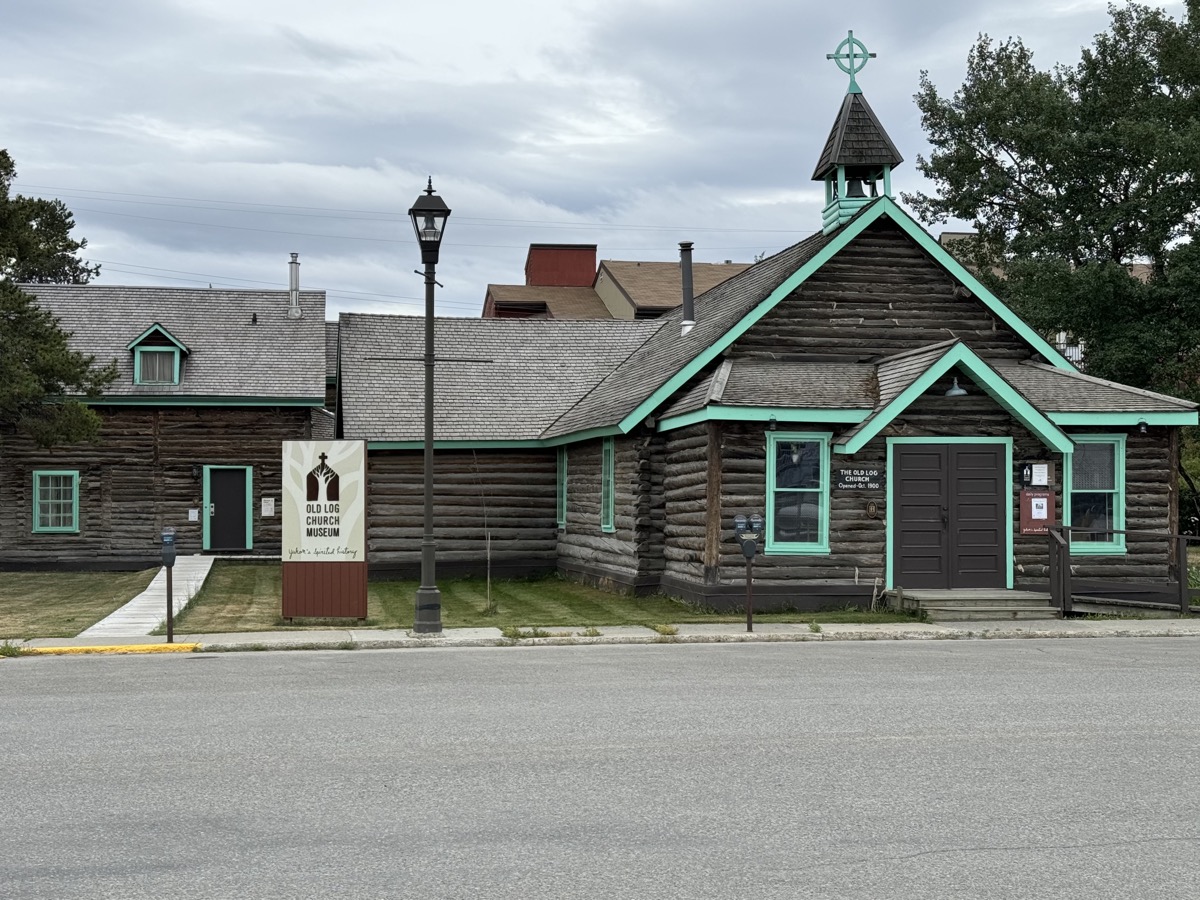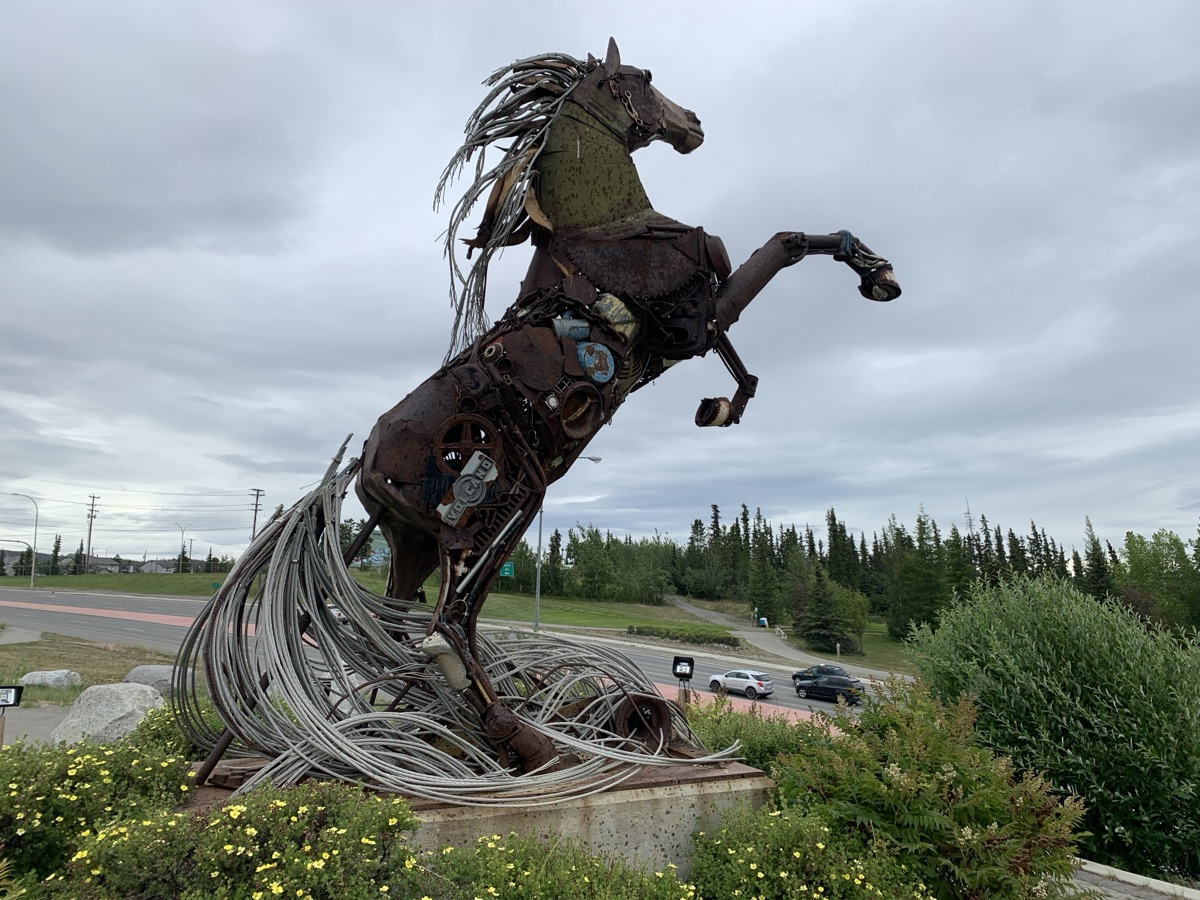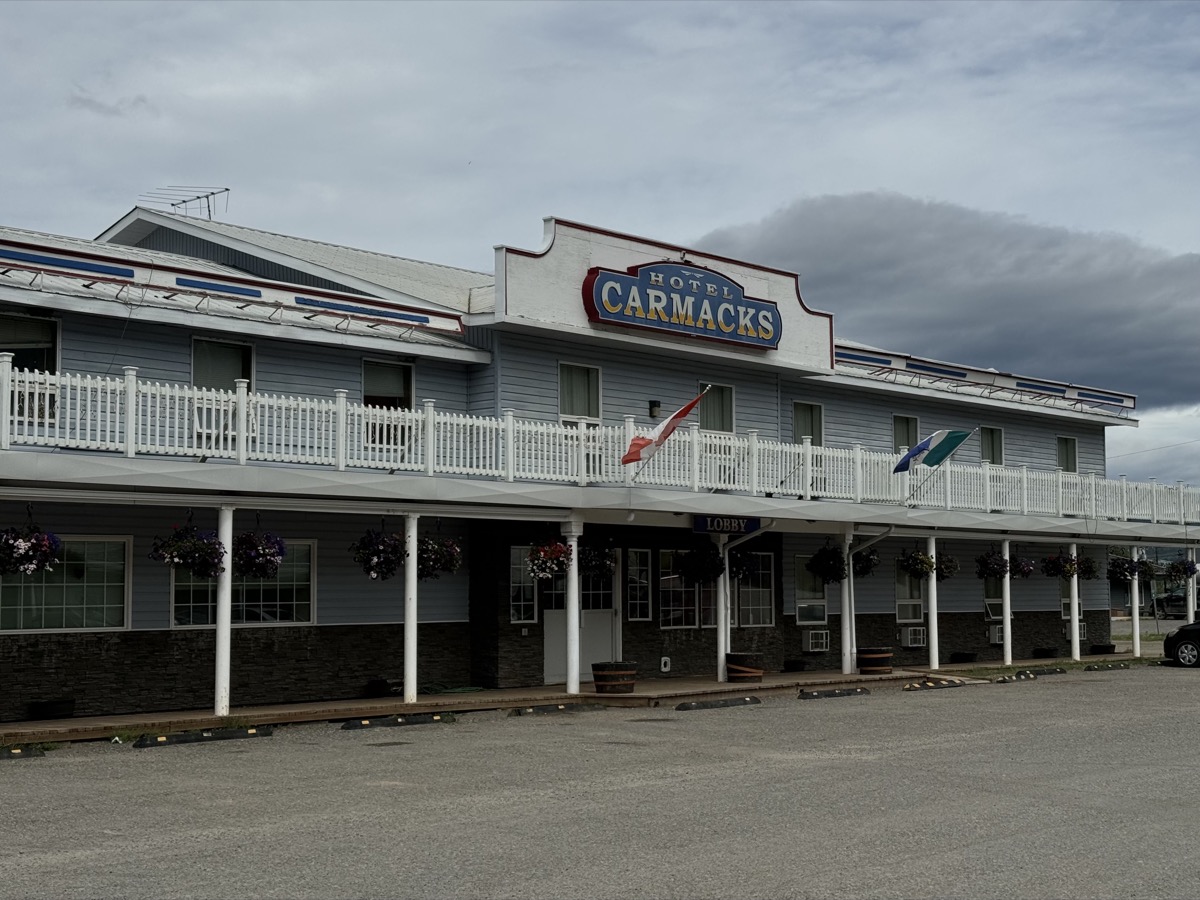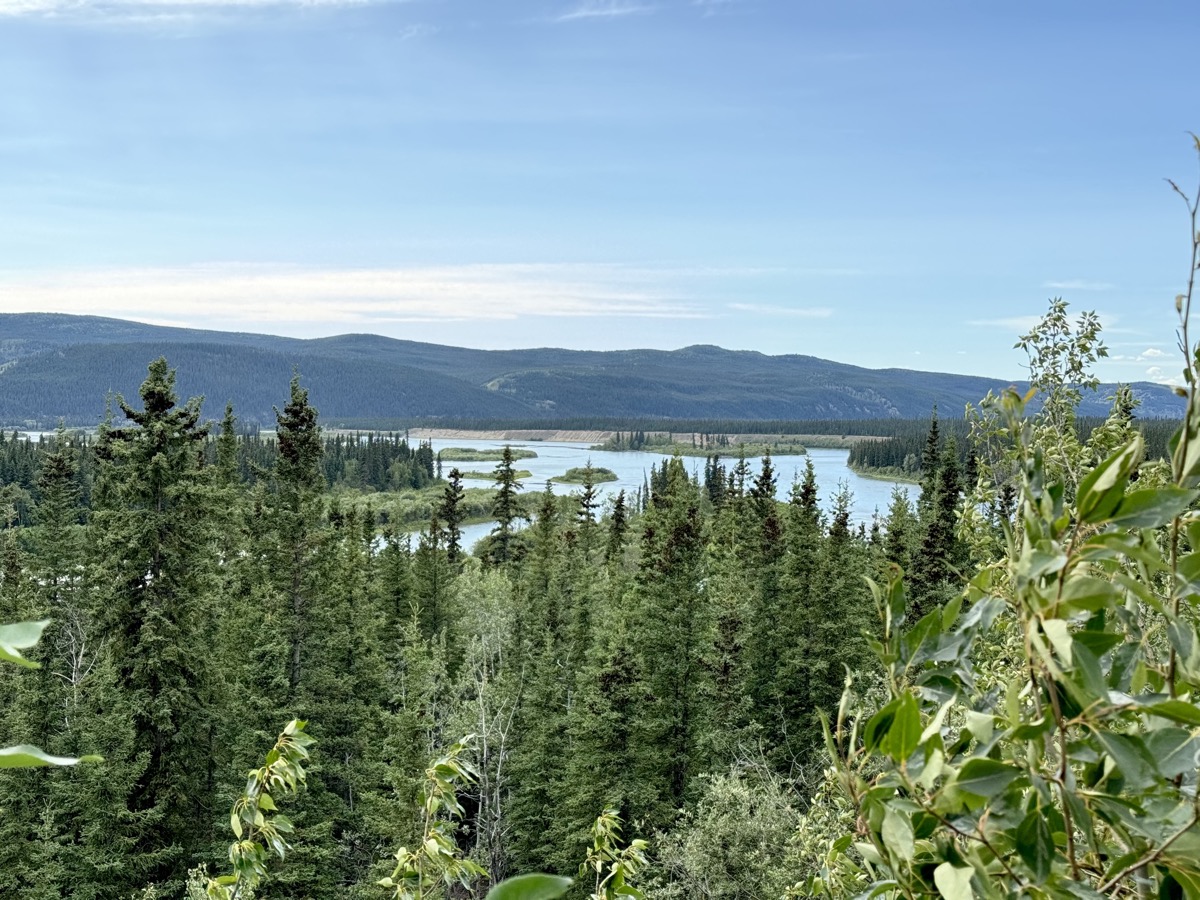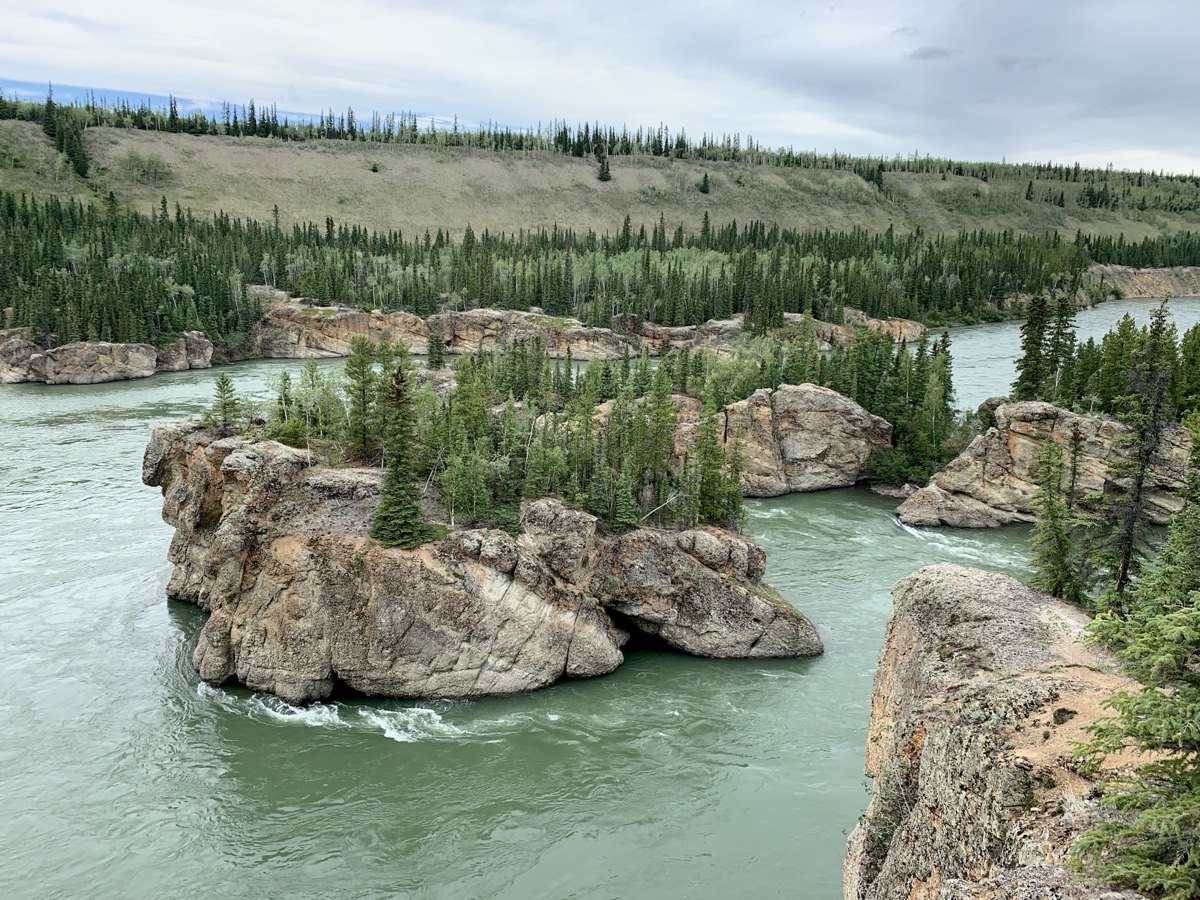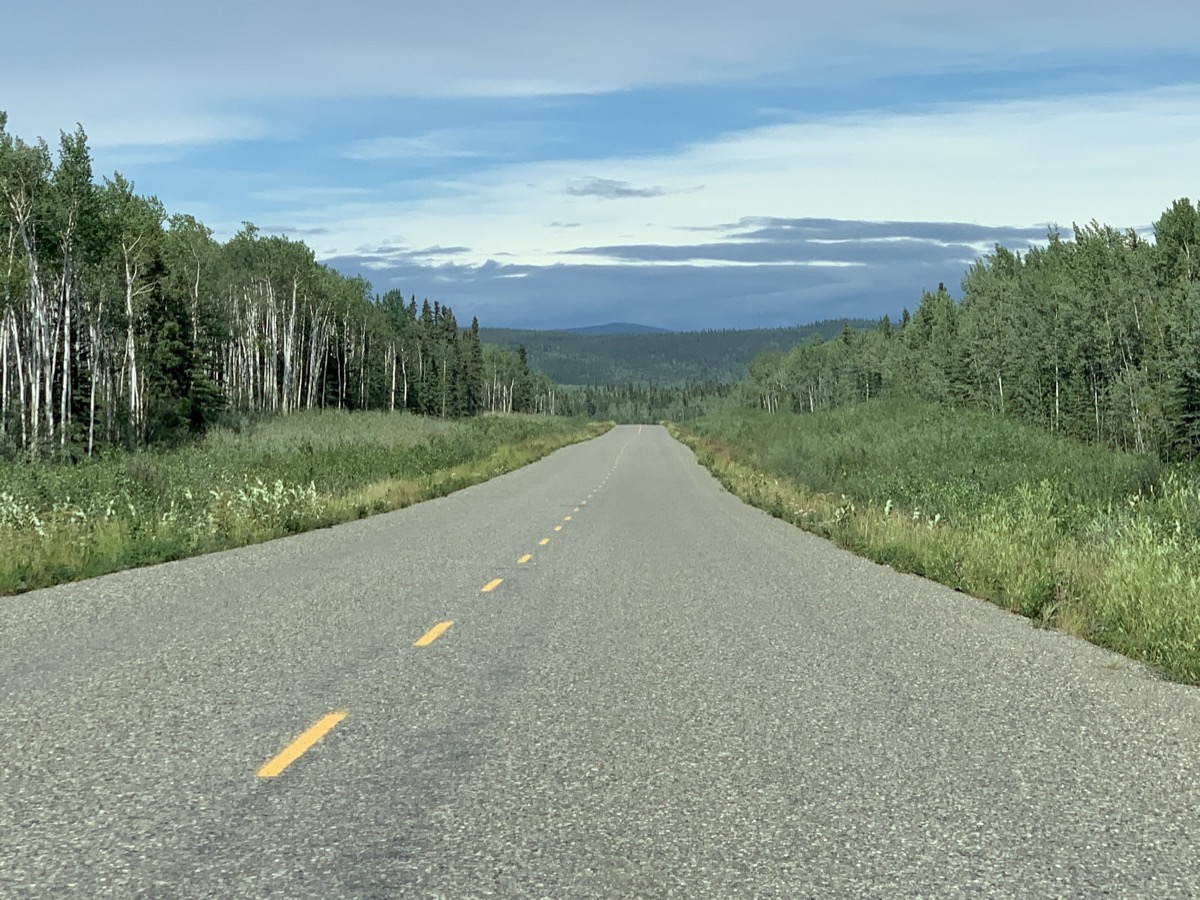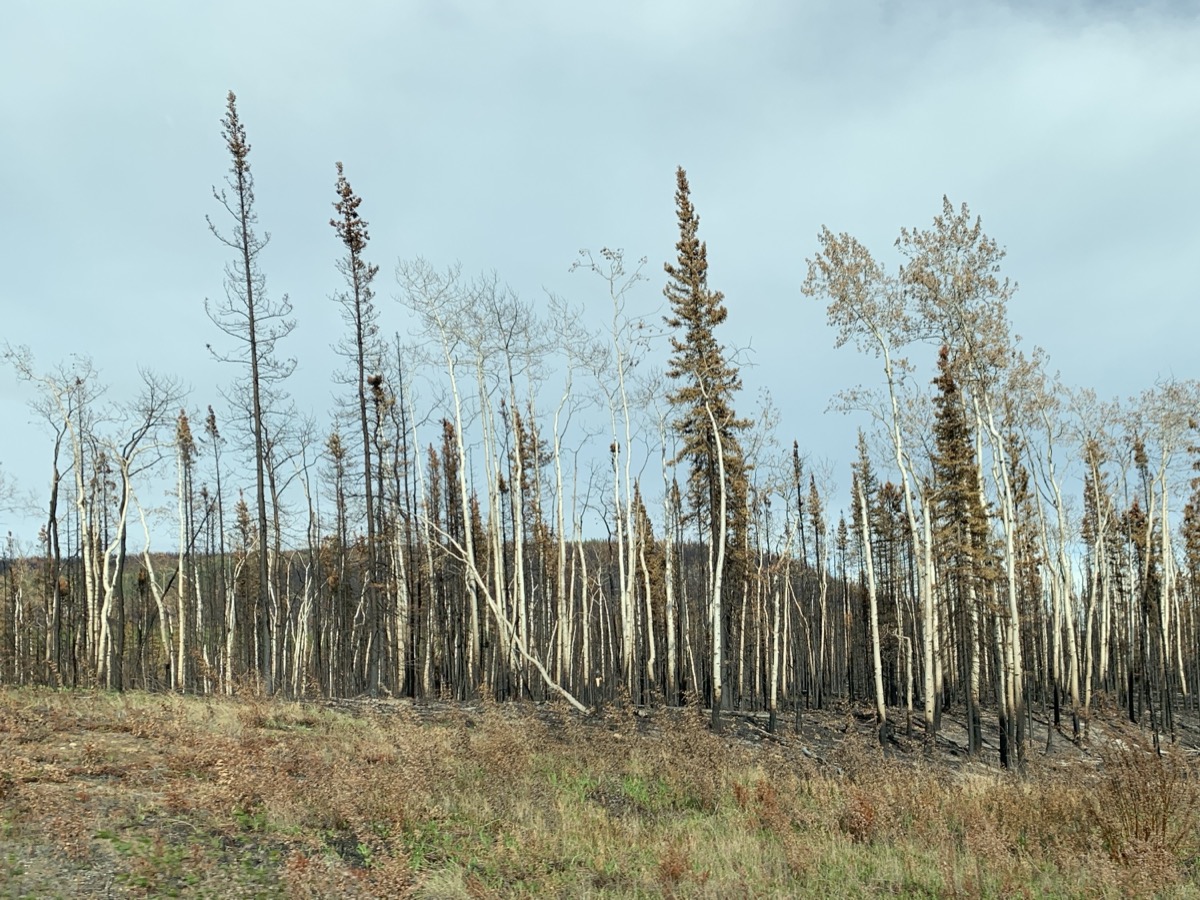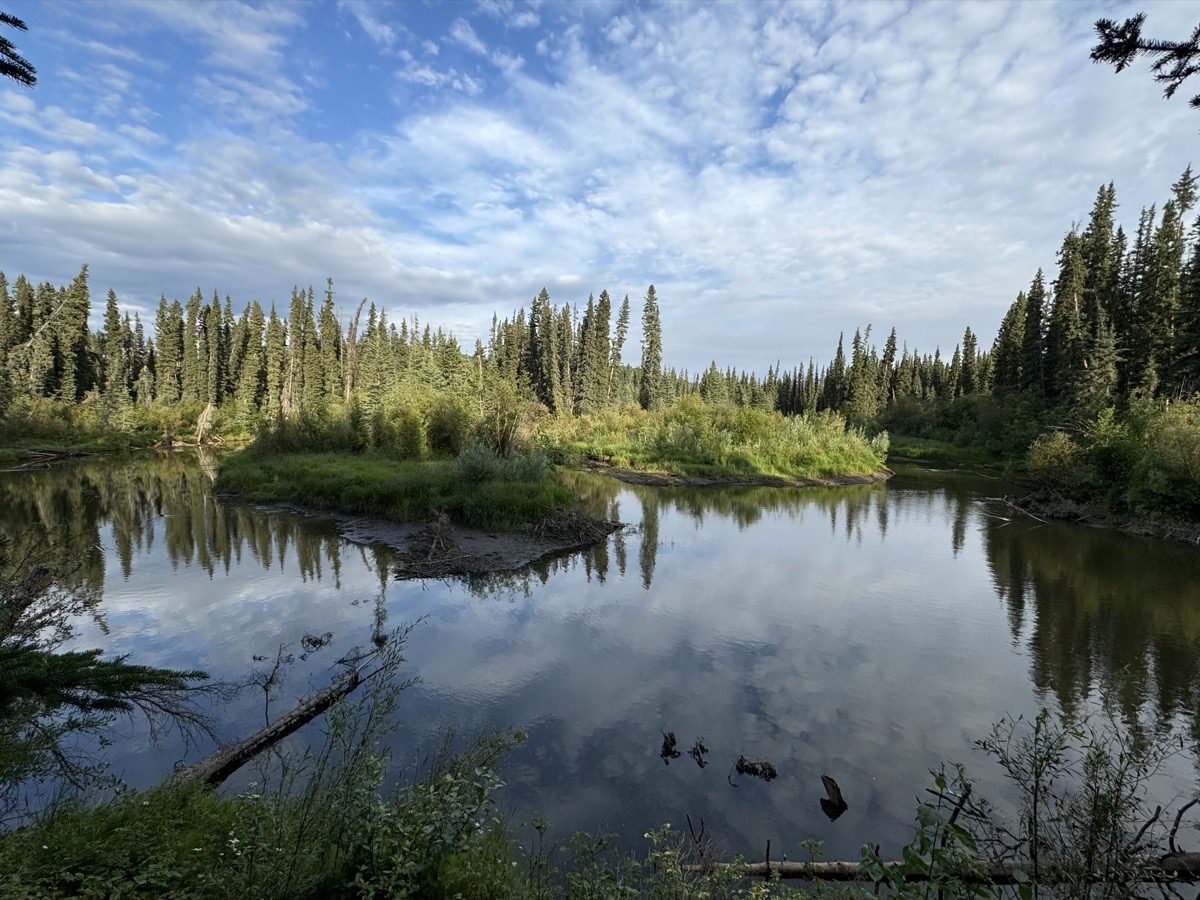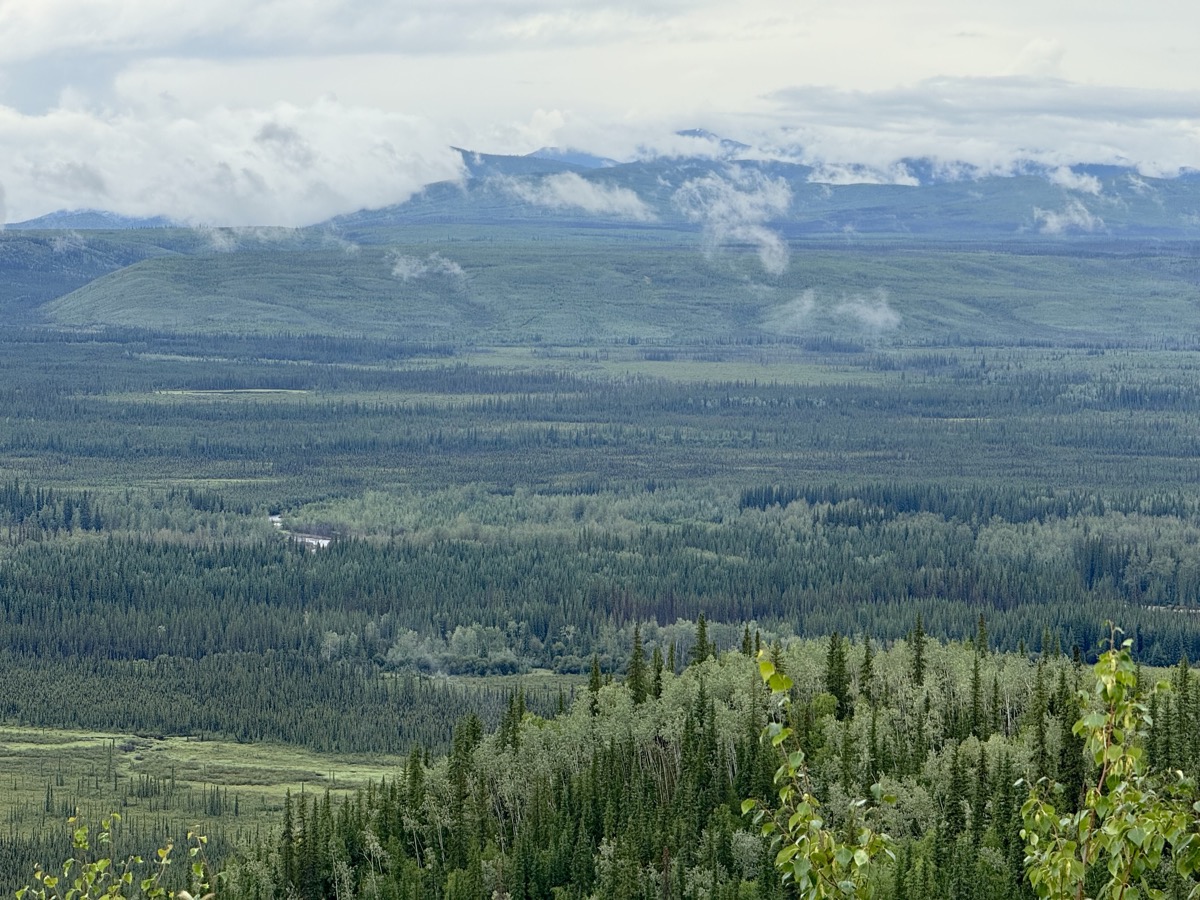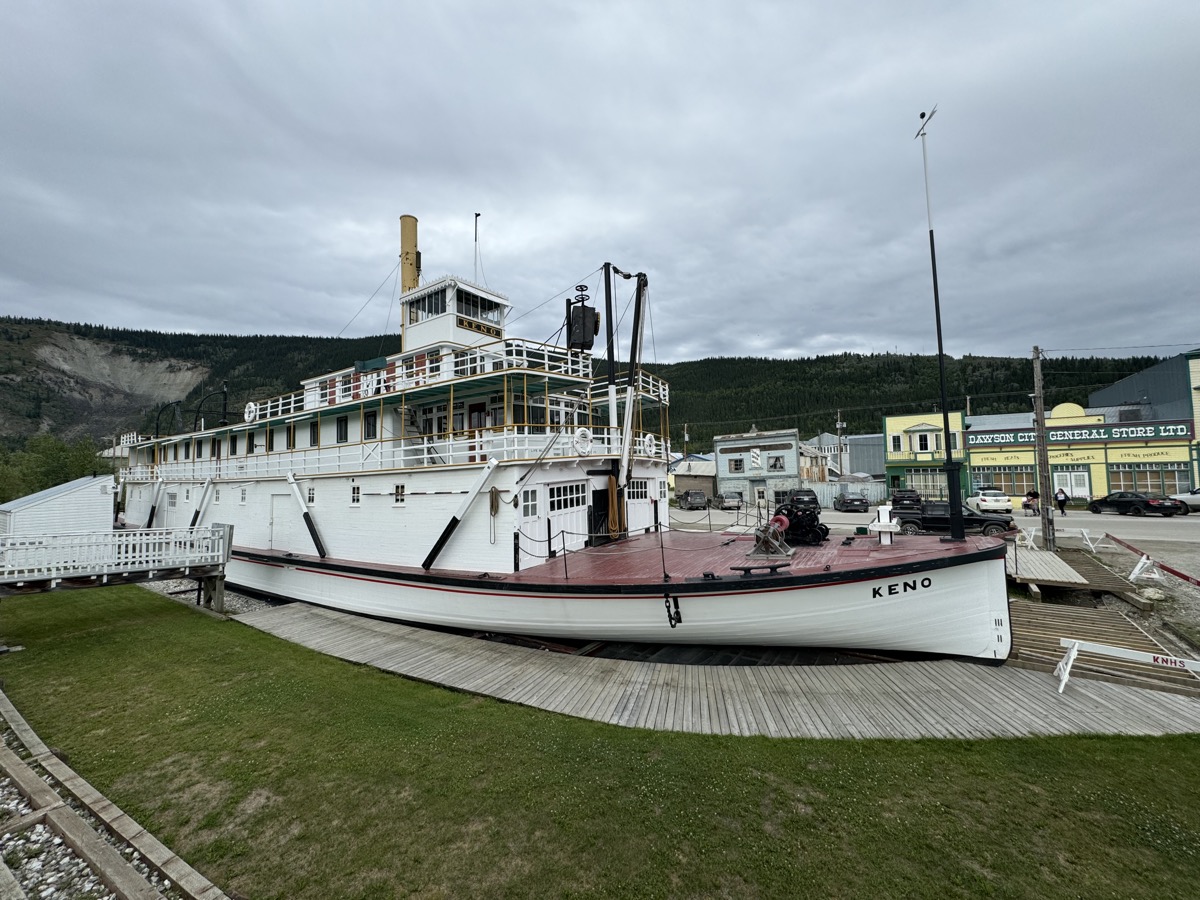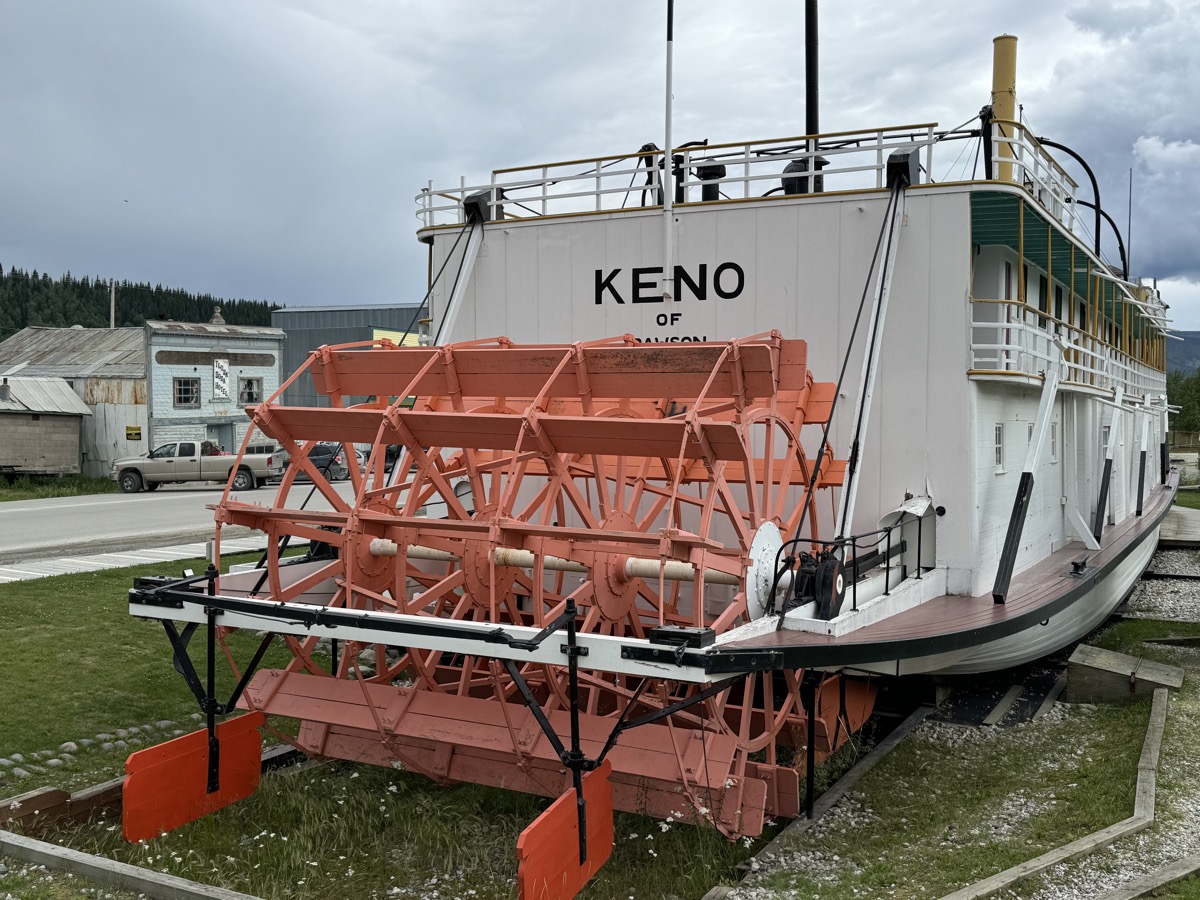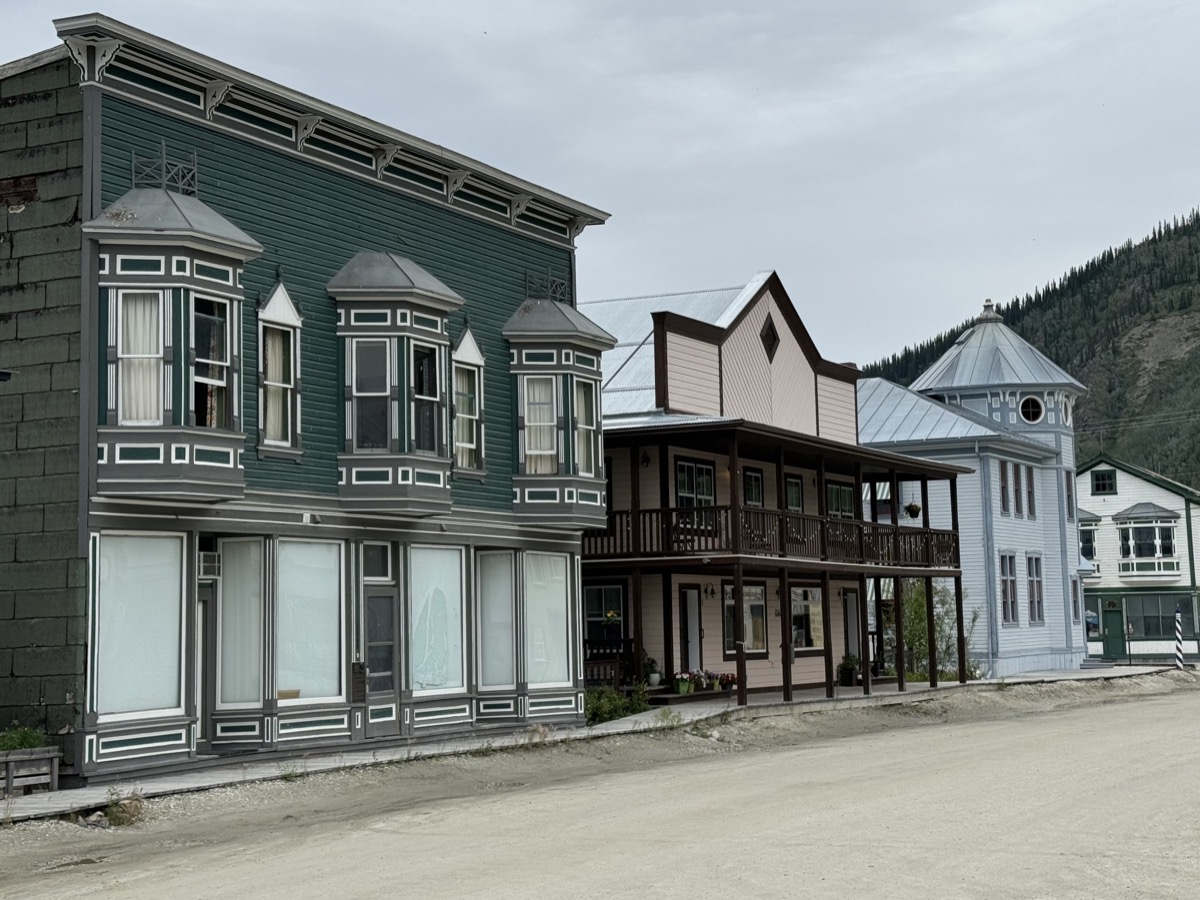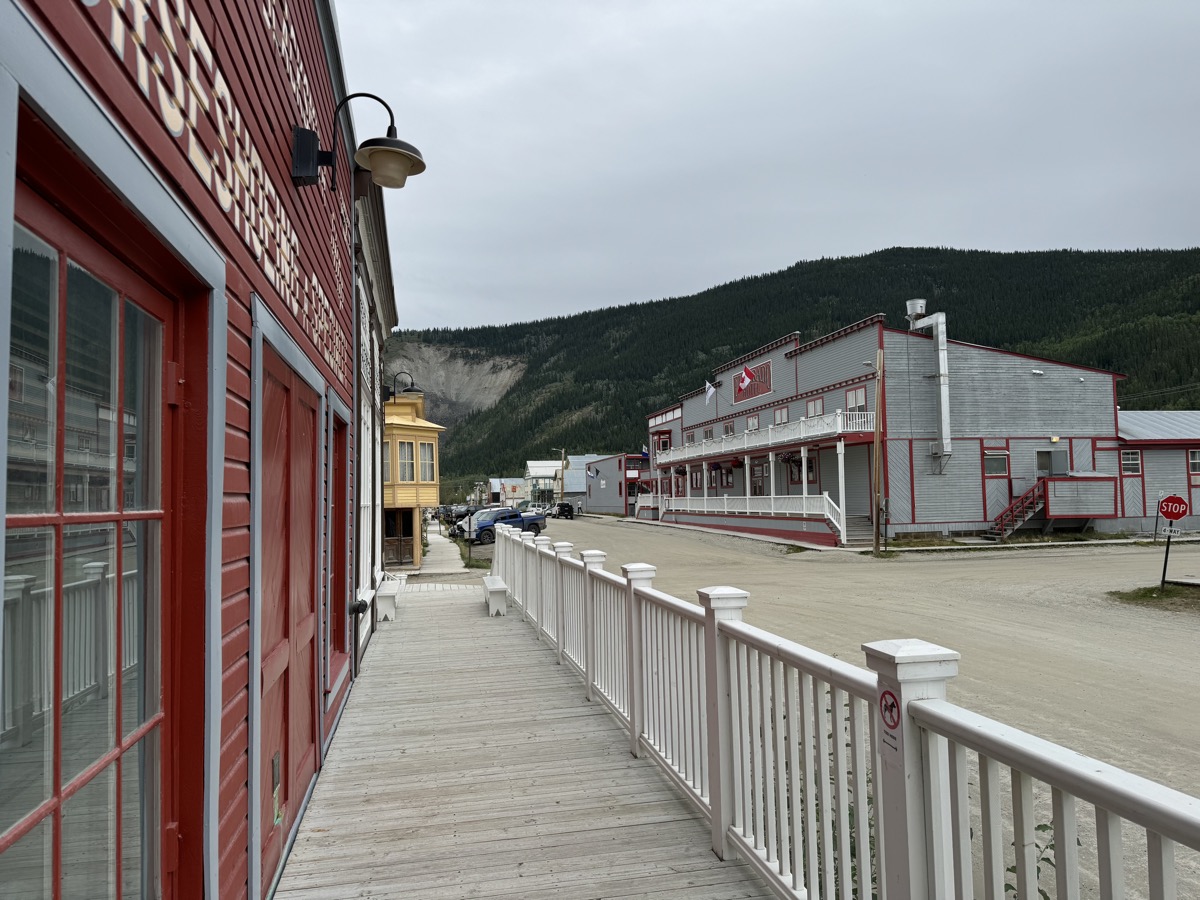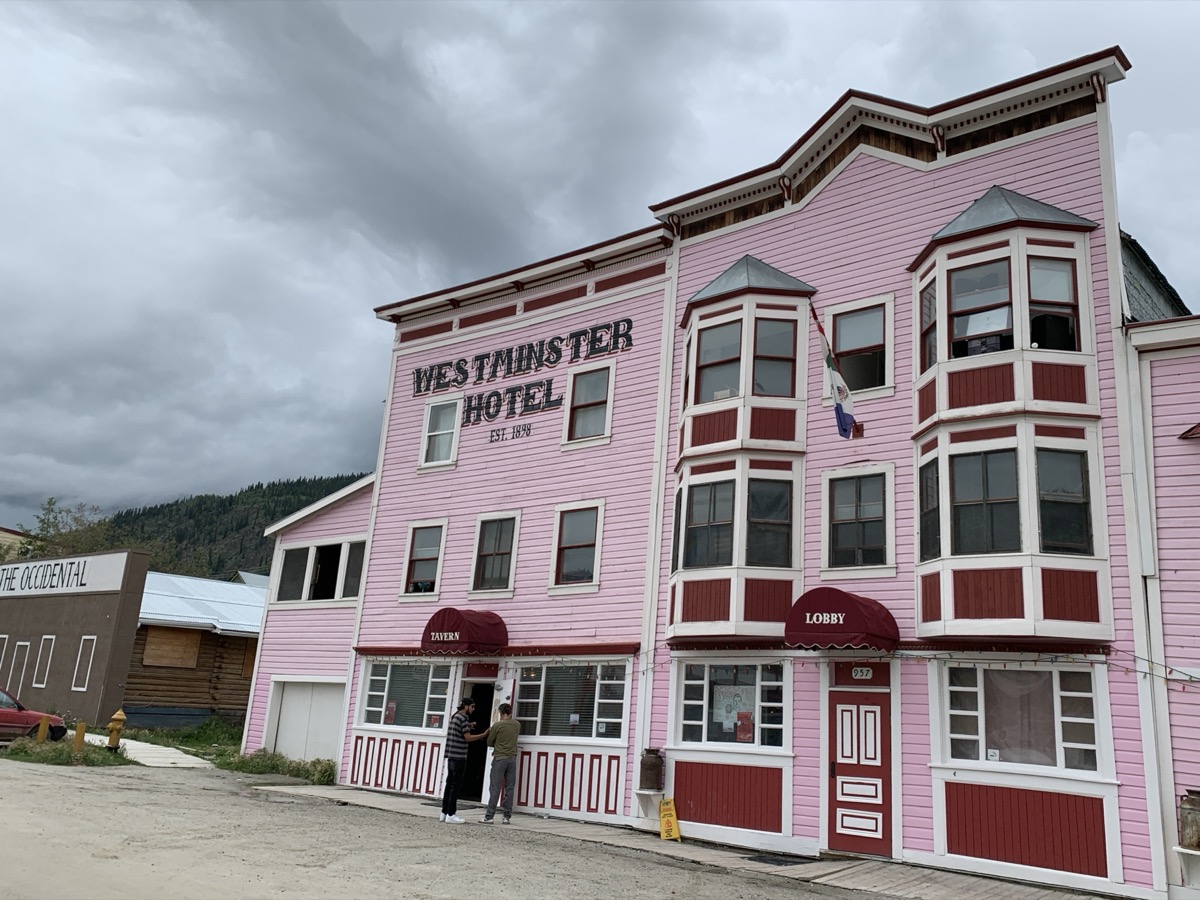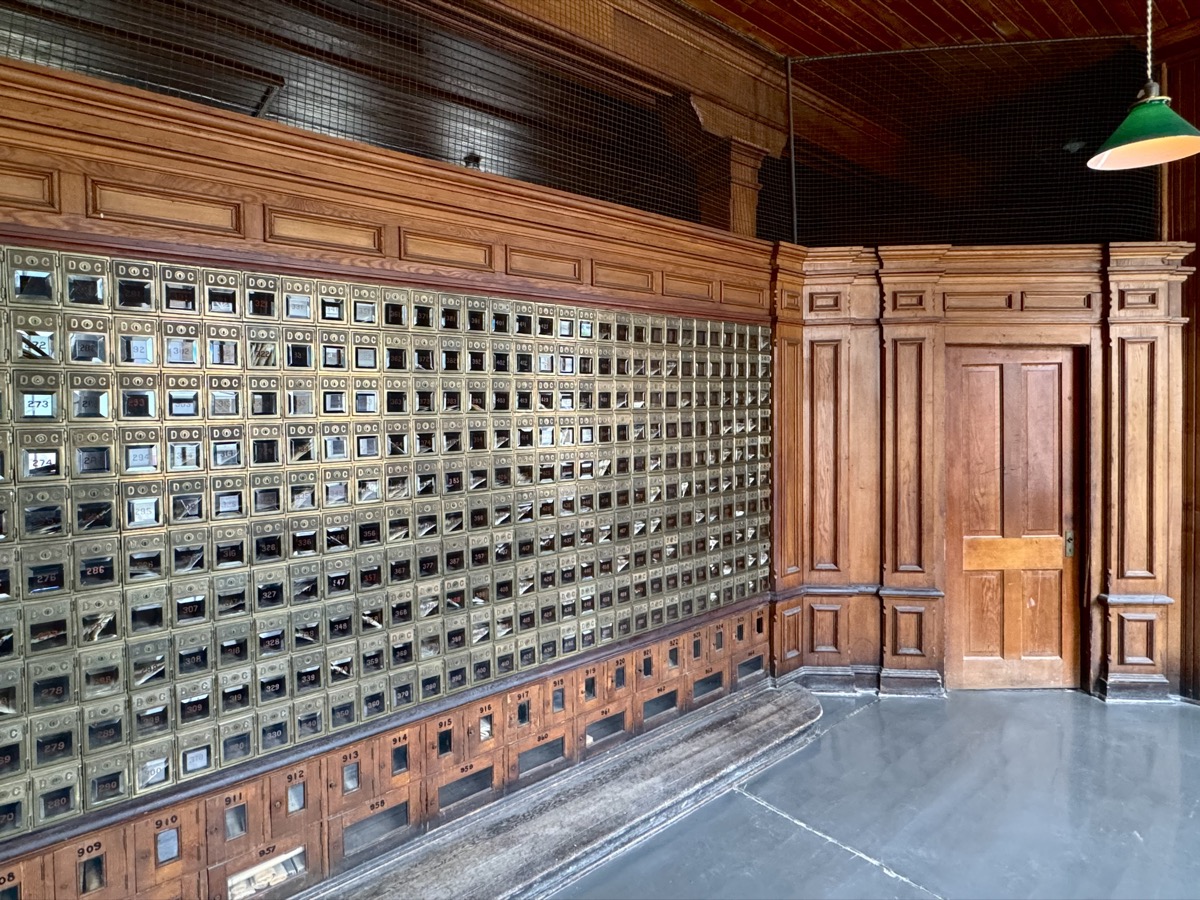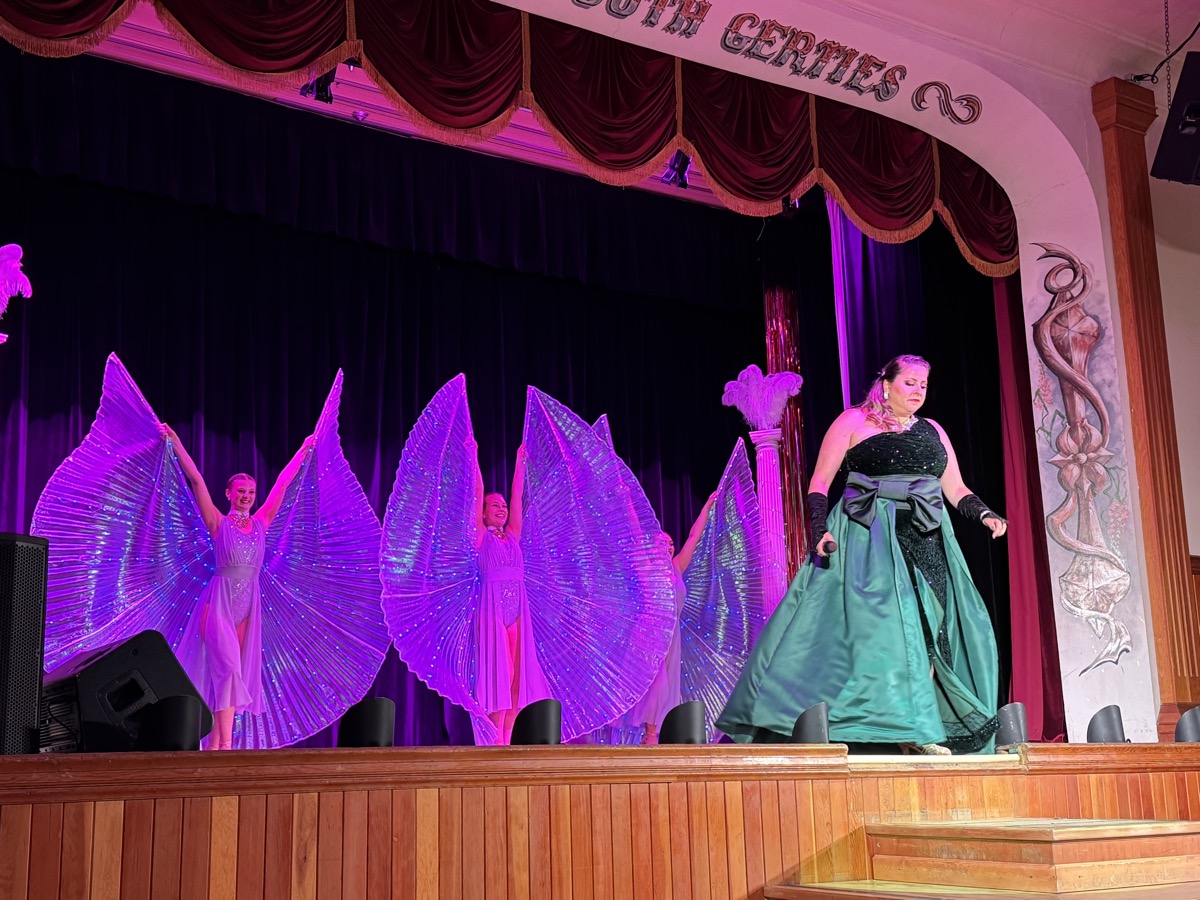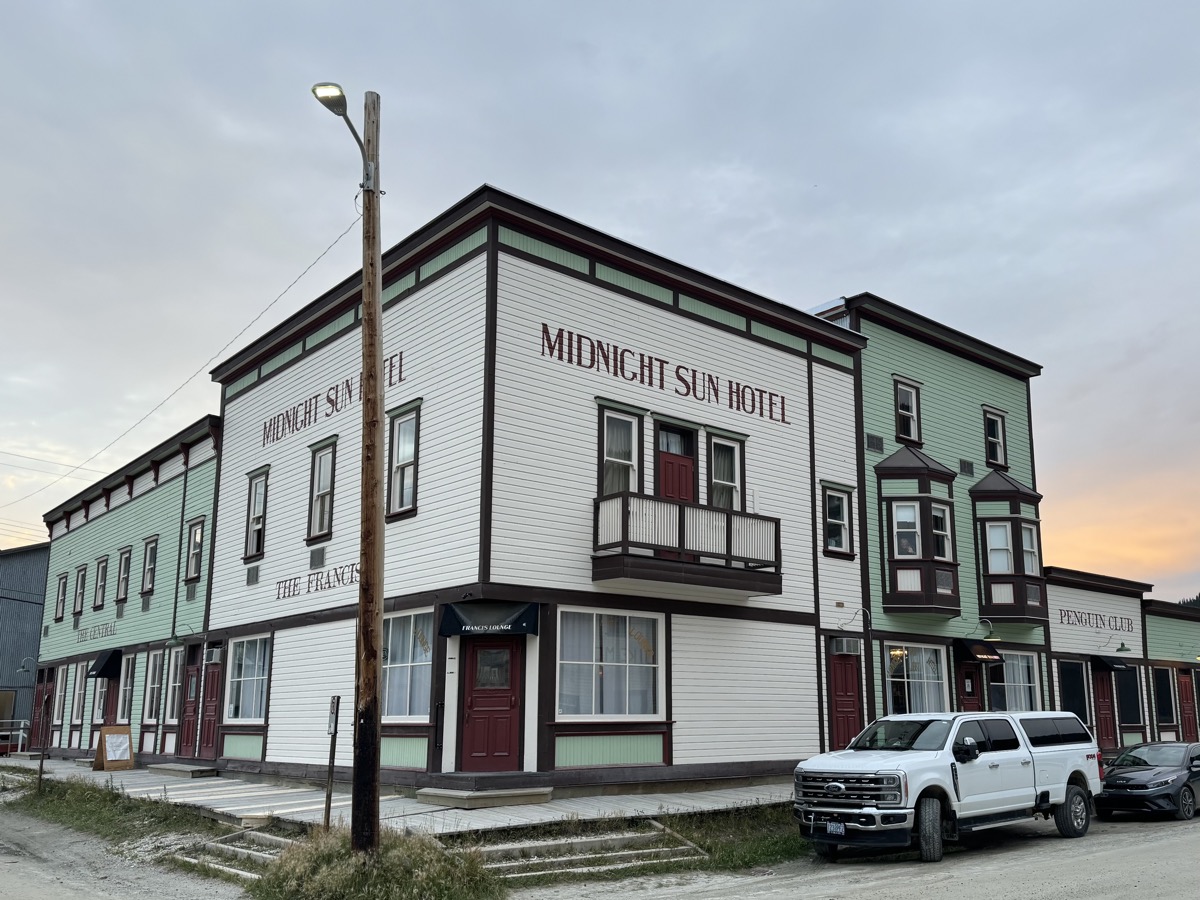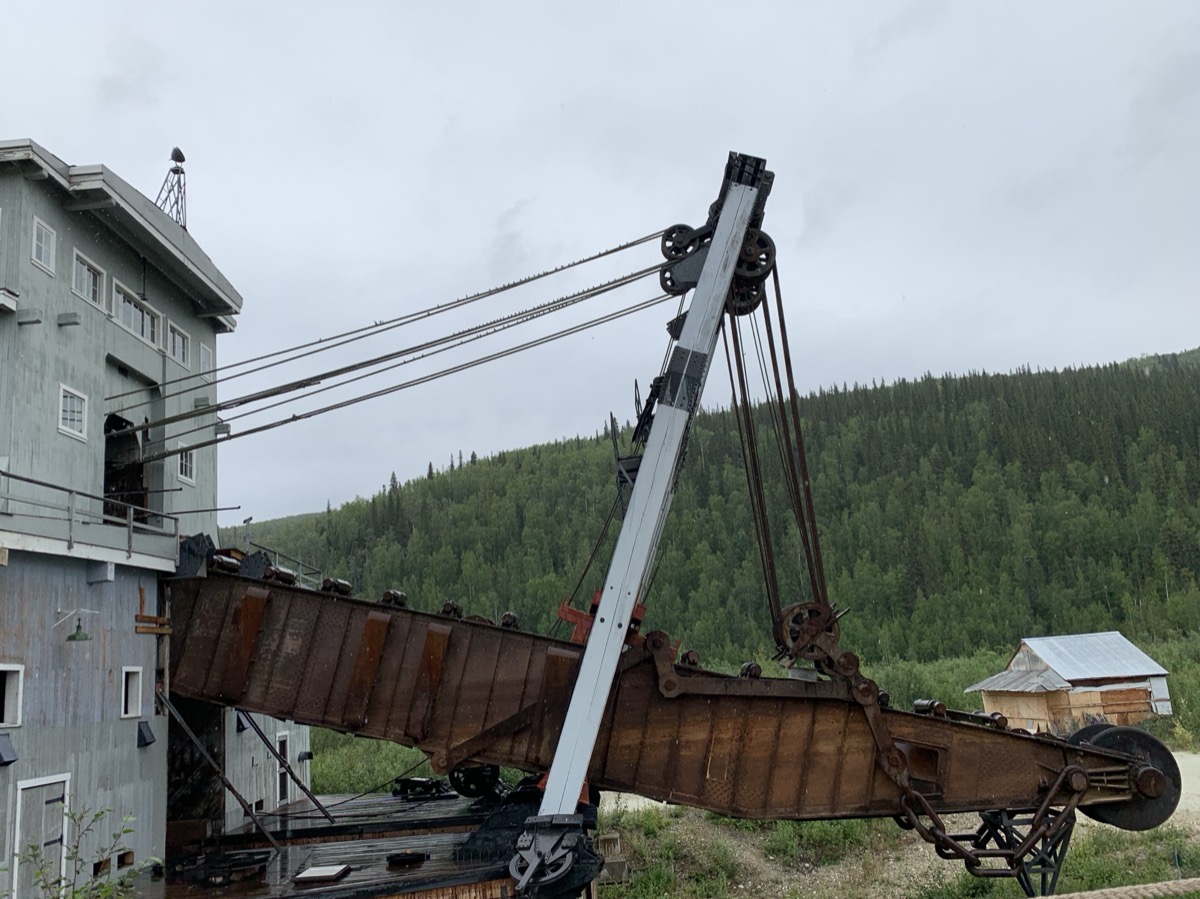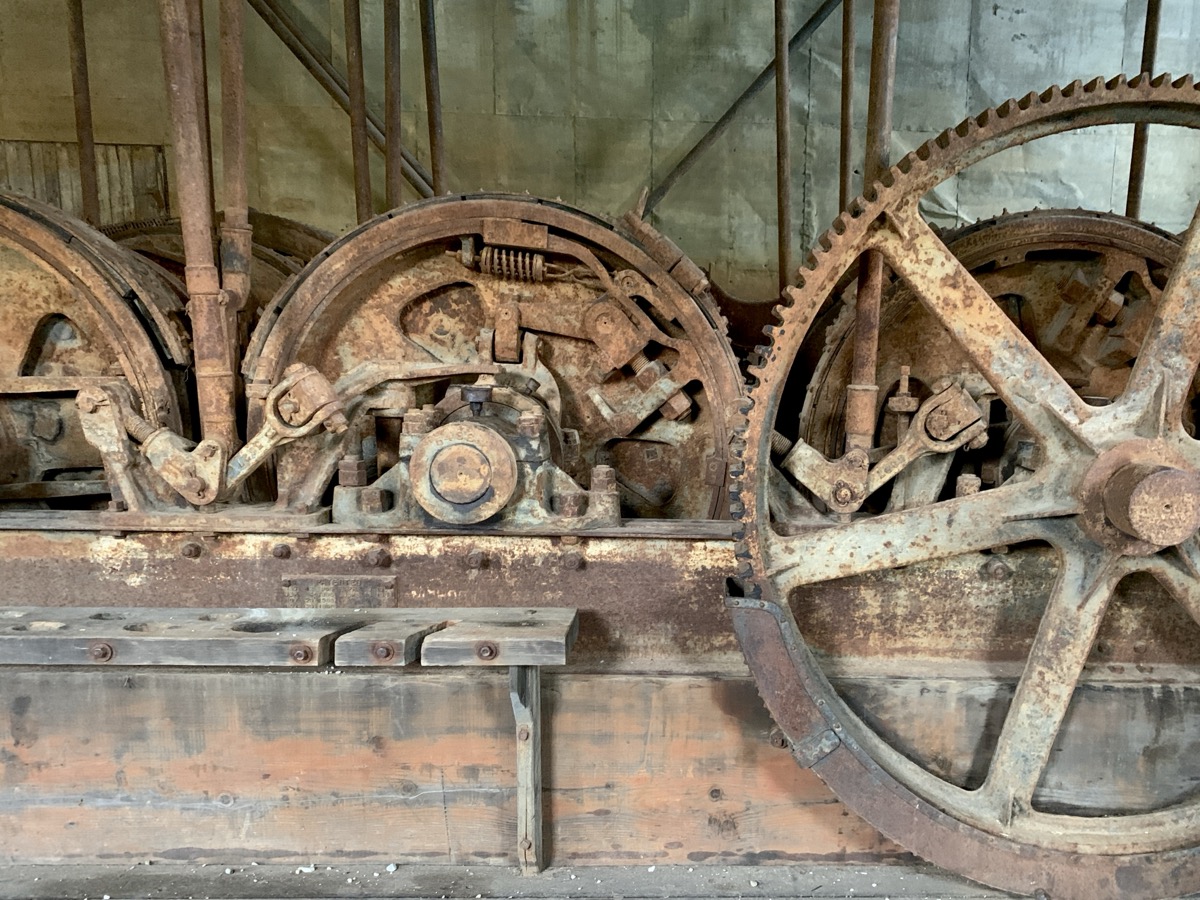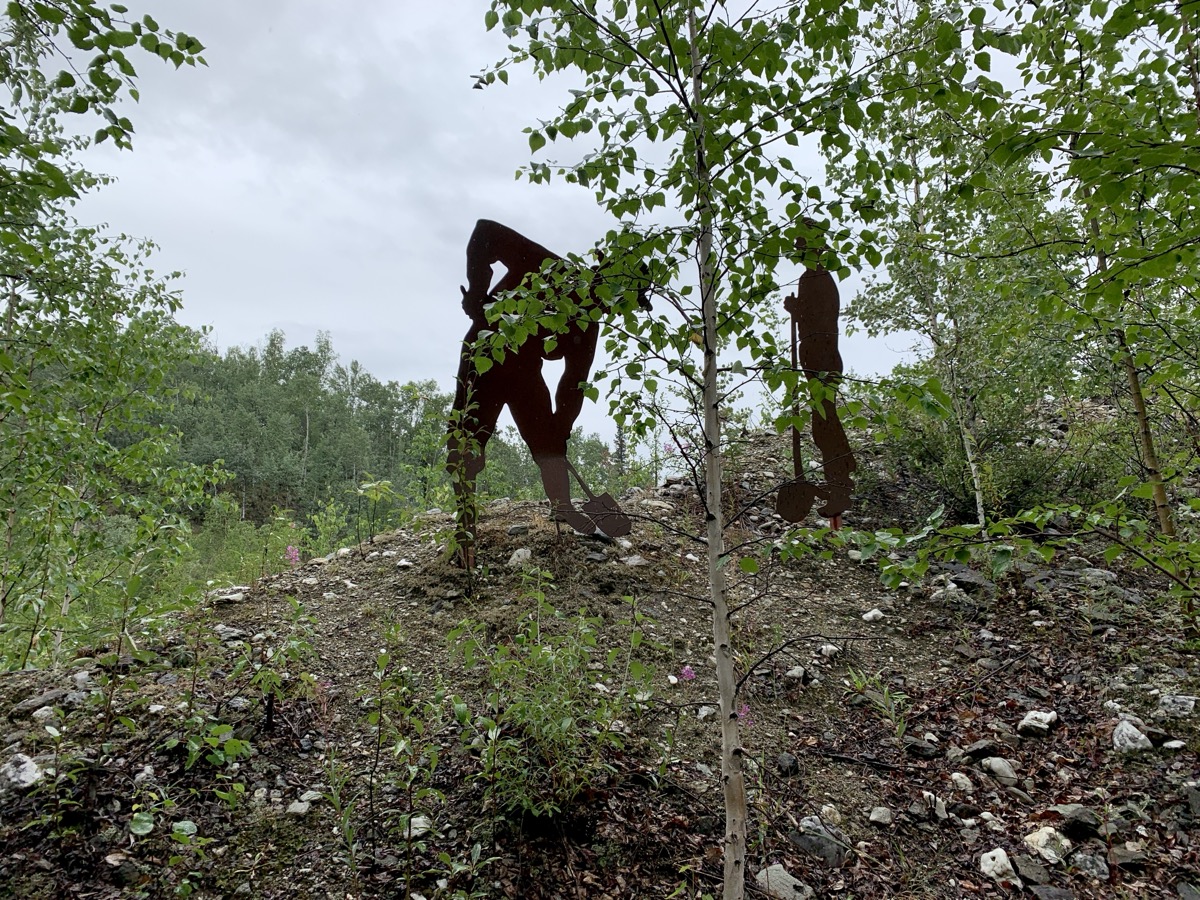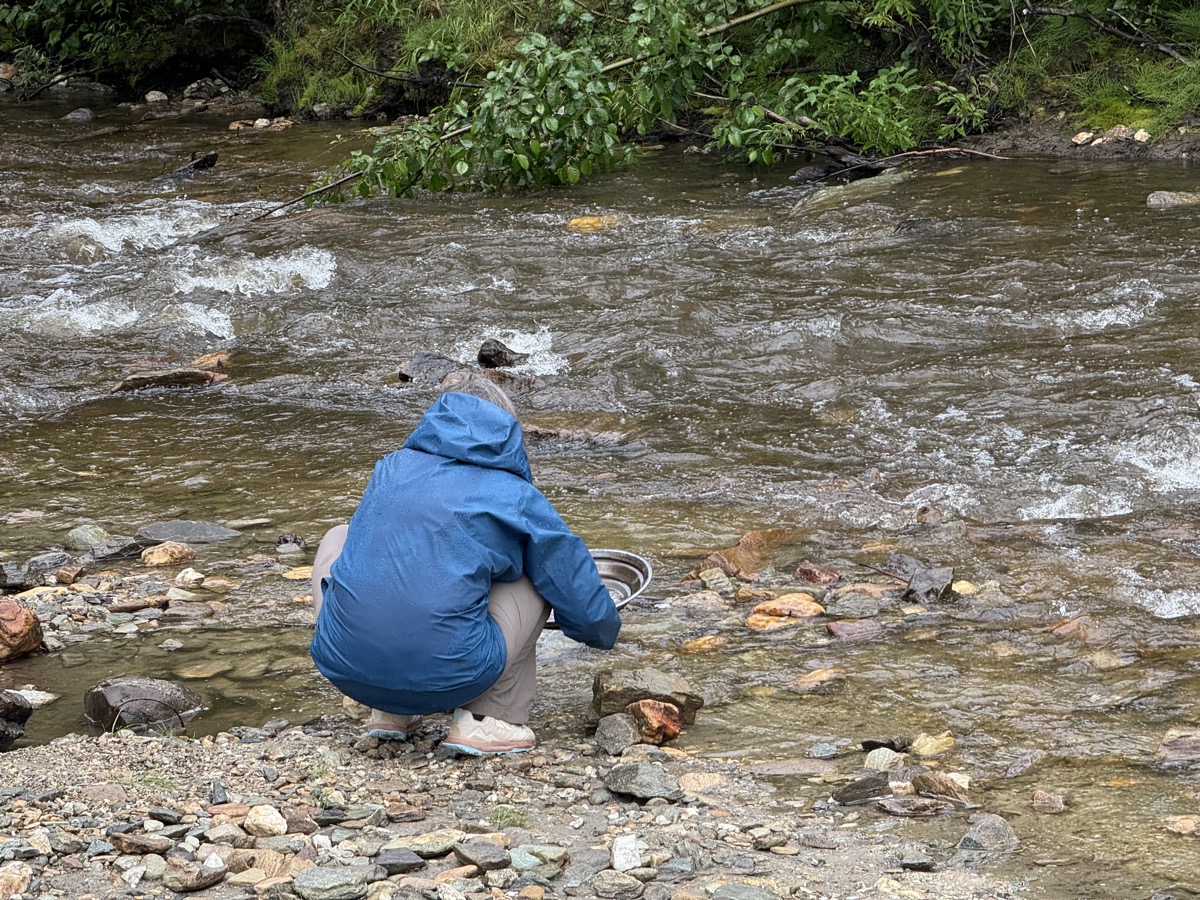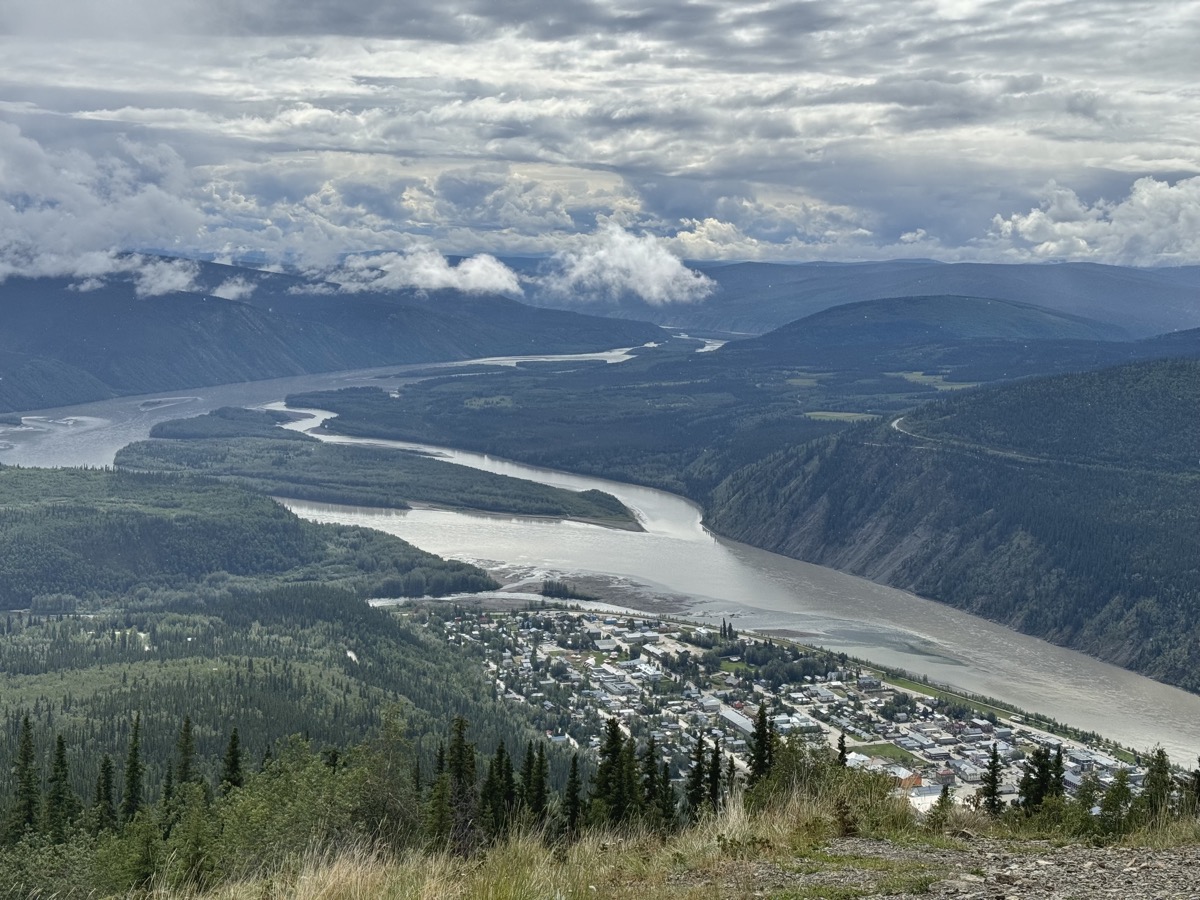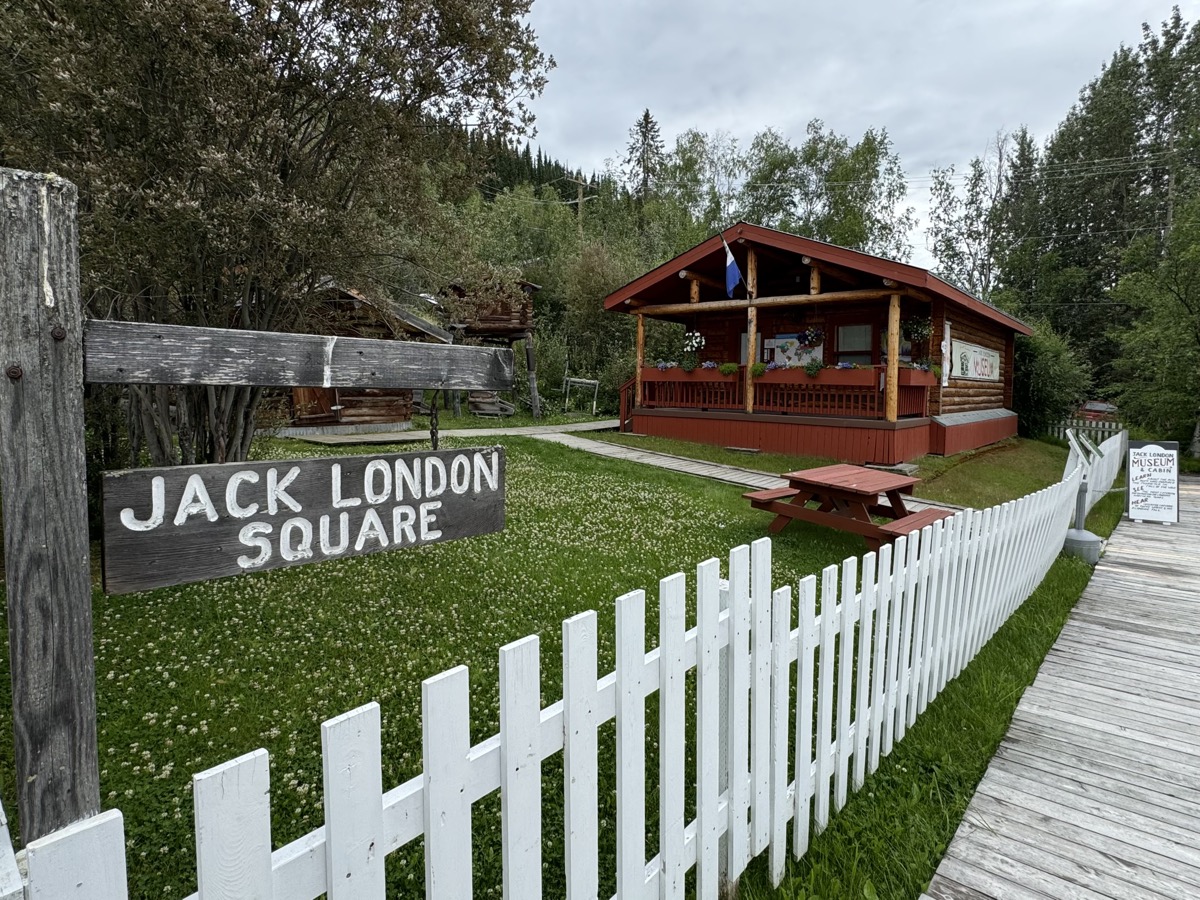July 23-26
First 20 km section of Denali Park Road, from camground at park’s entrance to Savage River is open to private cars. The road runs at the bottom of wide valley covered with green taiga (dense shrubs, but fewer trees than in other places) surrounded by small mountains (1000-2000 masl) with bare tops. We stopped at viewpoints. One is designed to watch Denali mountain, which at first we could not see despite sunny weather. Until we realized that what looked like fuzzy white clouds high above everything else is the snow covered mountain (picture below is slightly enhanced). Very impressive even from 115 km away. After all it is the highest mountain on Earth from base to top (5500m).
Denali is for wilderness hiking with very few managed trails, Savage River Loop and Alpine Trails among them. We were lucky to find parking spot, warmed-up walking a few hundred meters along Savage River and then hiked 7 km (500 m total ascent) Alpine Trail finishing down the main road from where park shuttle took as back to our car. Parking lot was full but the crowd dispersed quickly, with few people higher up on the trail which tops above alpine meadows (quite steep in places). Great views all around.
We decided to stay at the park for four nights. Driving on top of other activities and daily chores started to wear Piotr down. Campground was full, but did not feel overcrowded. We had good spot, flush toilets and washrooms nearby, central showers and laundromat, ranger stations, restaurant. We avoided driving long distances.
Park shuttle goes 50 km further on the park road beyond Savage River (closed for private cars) to East Fork Toklat River. Beyond this point the road is closed for repairs after landslide a few years ago. No chance to get any closer to Denali (and other higher mountains) for a closer look. We took hikers shuttle as far as it goes, saw many animals but no grizzly bears. Now it was all day for wilderness hiking. To be honest, rather hiking at the wilderness’ edge as we did not stray too far from the road, even if off trail,.
First, we spent 2.5 hours walking 4-5 km on gravel flats of Toklat River and its tributary. We just meandered aimlessly between small streams. At some point we tried to go across the flats to climb out on a small hill, but once we got there we discovered small side stream too deep and fast for dry crossing. Colorful (yellowish) sandy hills called polychromes, as it turns out, are held together when frozen. Once the permafrost melts landslides occur: one closed the road and another recent one is next to Toklat River bridge.
The way wilderness at Denali works is, you take the shuttle and ask the driver to stop whenever you want, and you hike. We did just that. We decided to explore an area around a chasm cutting into Cathedral Mountain, but rather than walking at the bottom we hiked up the hill to see it from higher up. We missed the best spot as it was difficult to decide where to get off the bus. The side of the road is quite steep around here. As we were standing on the road, shuttle gone, debating how to get down to Igloo Creek, a large caribou (reindeer) bull appeared and started fast walking in our direction, freezing when it finaly saw us. We quickly moved to the other side of the road pushed into steep, rocky slope hoping the reindeer would prefer to disappear into the greenery. Which it did and a minute later we heard sloshing as it was running up and down the stream. We followed the lead dry-crossing the stream after mild bushwacking. On small clearing on the other side we saw fresh bear scat (sloshing sound playing in the background) and decided to quickly go straight up to the open meadows, which we wanted to do anyway. Altogether we spent 2.5 hours walking just 2-3 km, a lot off zig-zagging around local obstacles and muddy spots. We walked-up to a steep edge from where we looked into the chasm. Piotr shot video, Joanna walked further up to the meadow’s edge. From this point it was easy to plan return route. We just walked downhill, bushwhacked our way through vegetation near the creek and returned to the road on small trail used to walk to the bottom of the chasm. Park shuttle picked us up shortly. It was a great day, although we wished to have more off-trail experience.
Next day was a slow day. We drove to Savage River again, a relaxing experience, walked on easy but crowded loop trail and returned for late afternoon presentation at sled dog kennels. Joanna managed evening walk to Horseshoe Lake. Started packing for departure in the morning, as weather forecast predicted rain (our car was parked a few hundred meters from our walk-in campsite).
